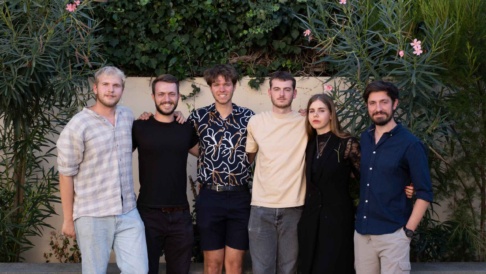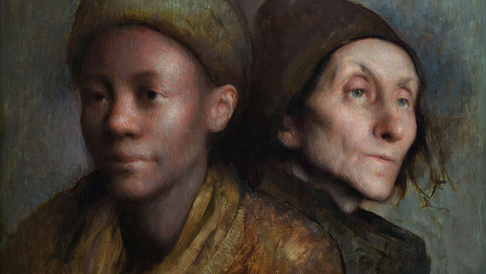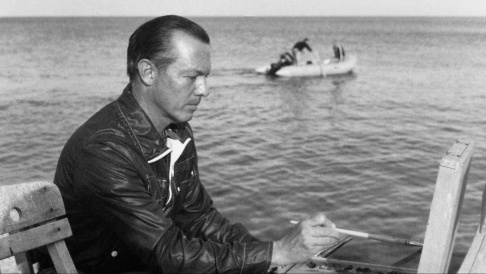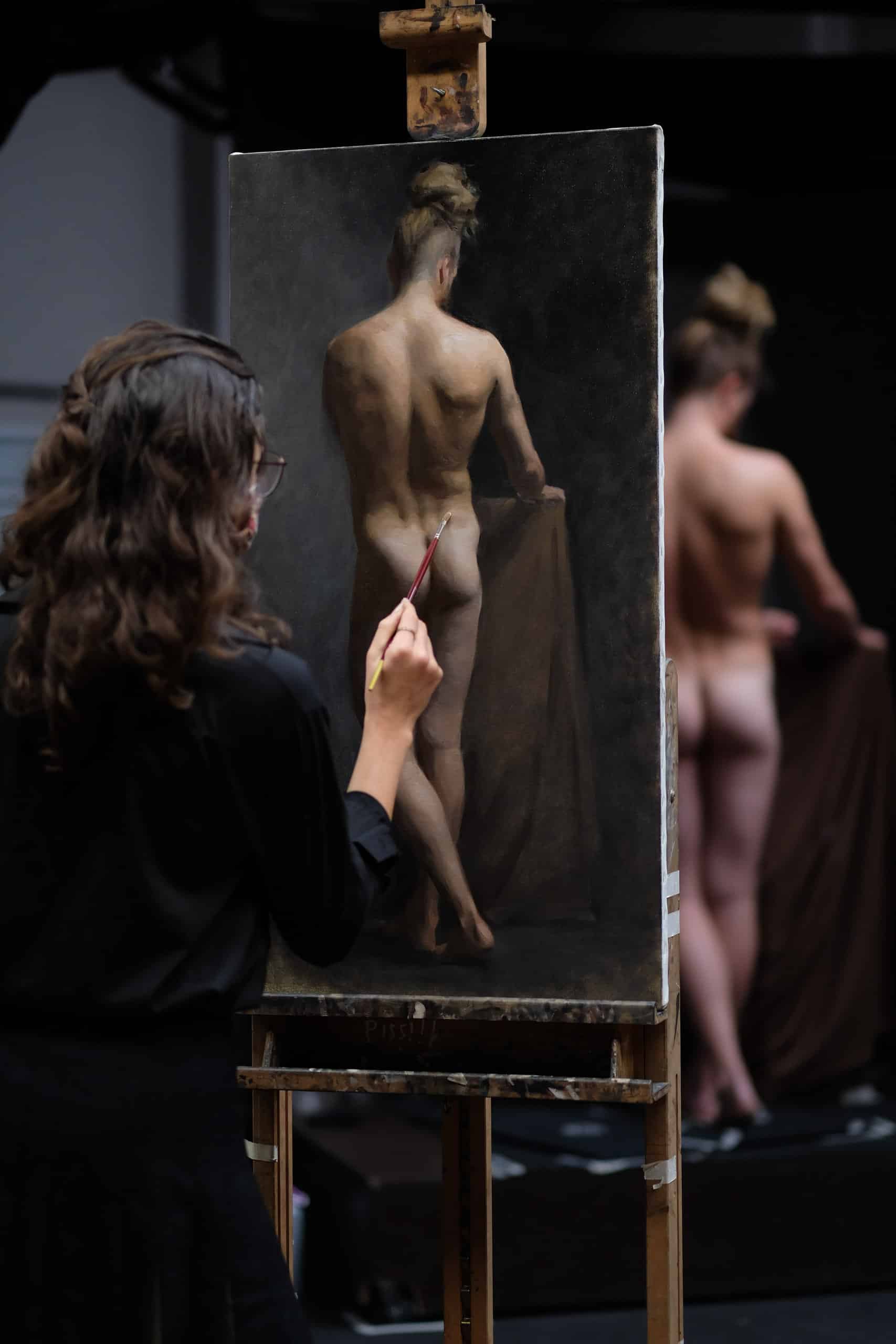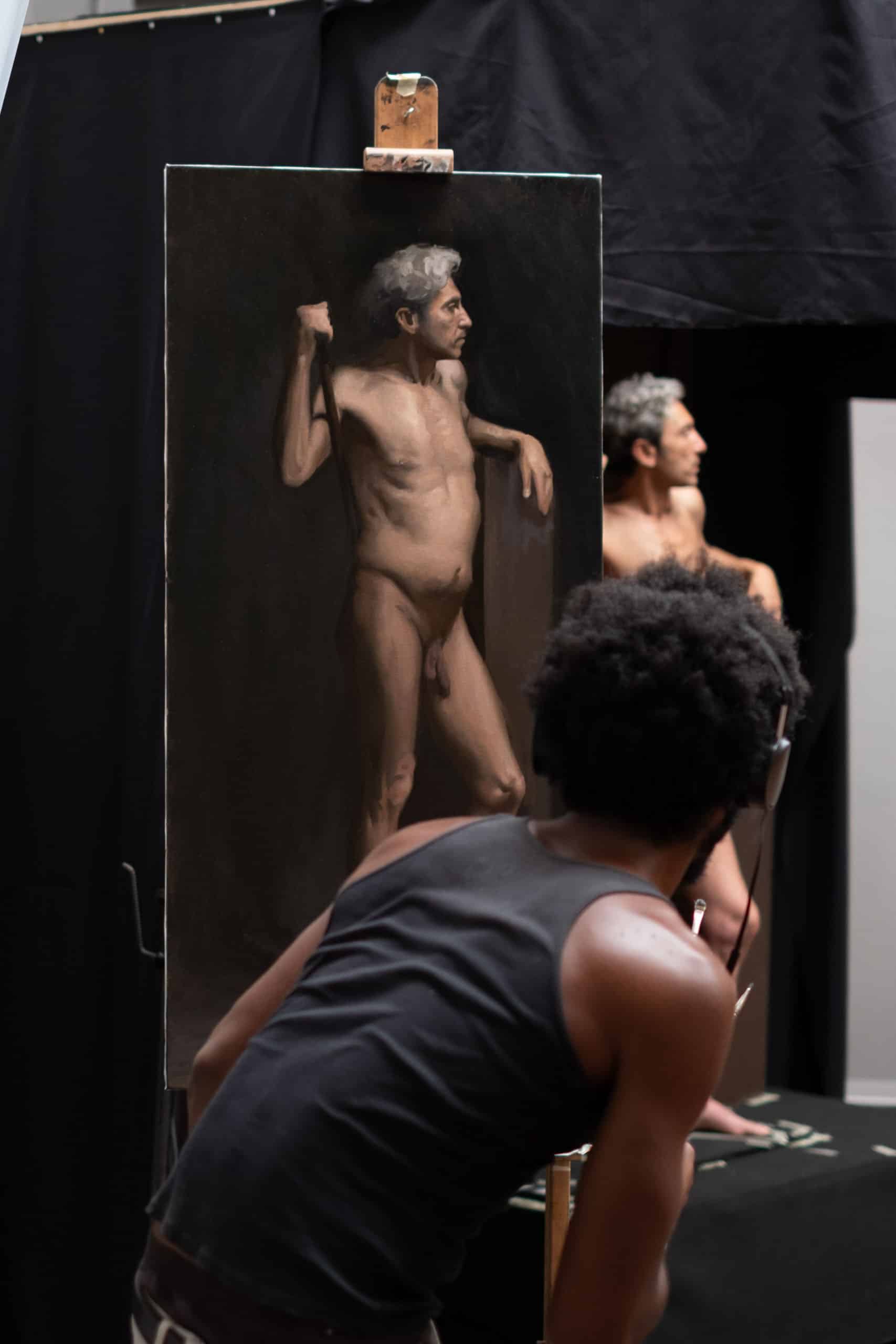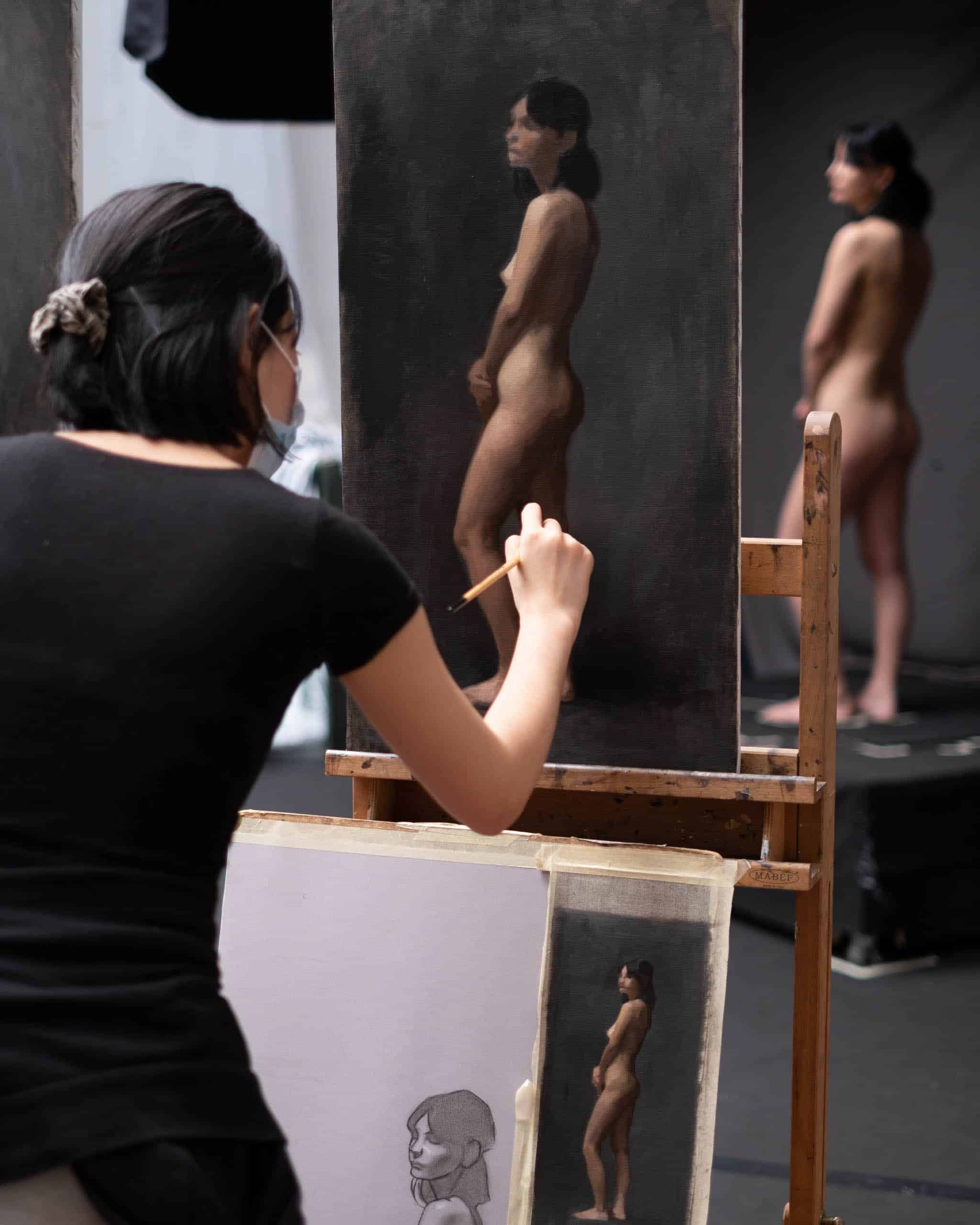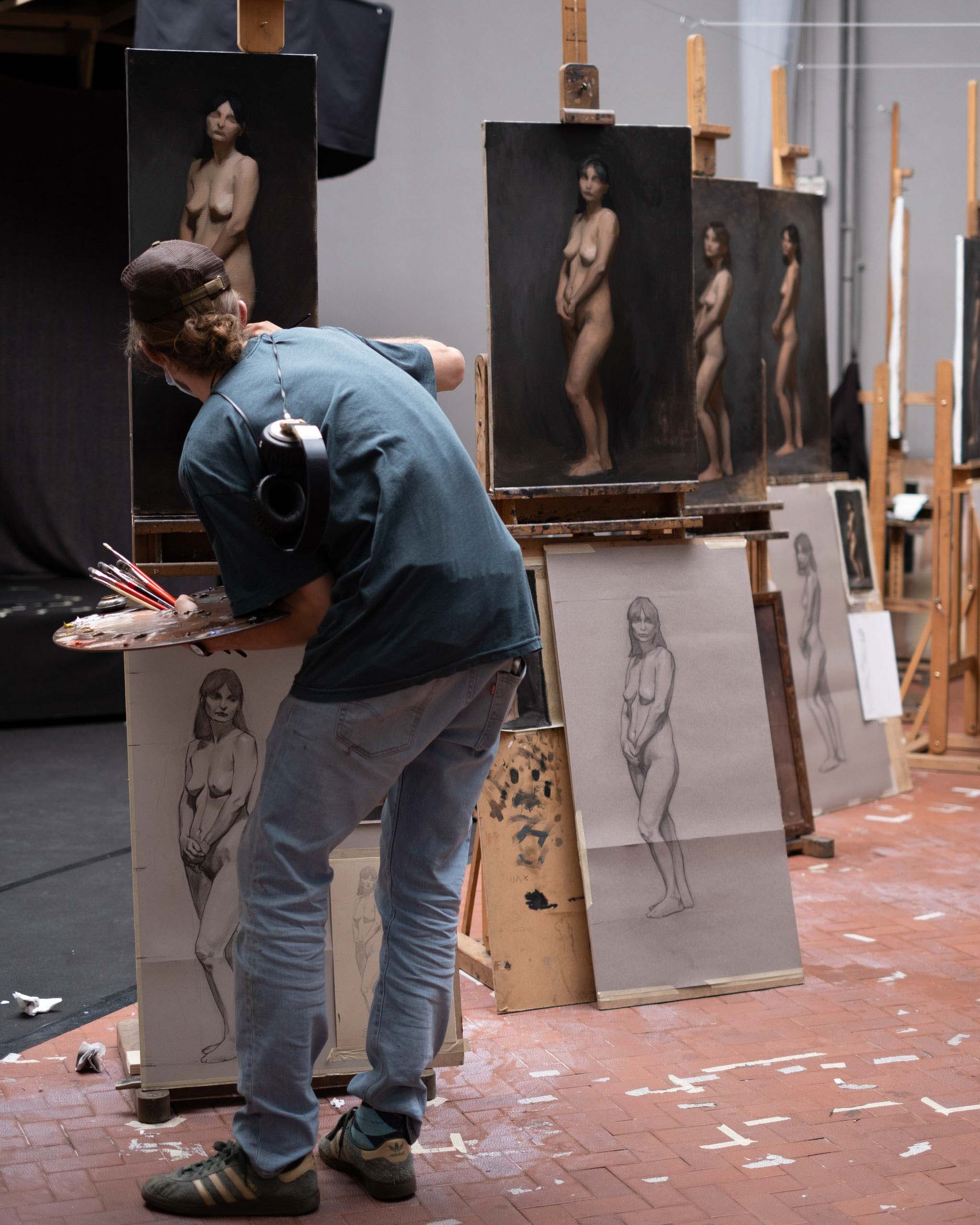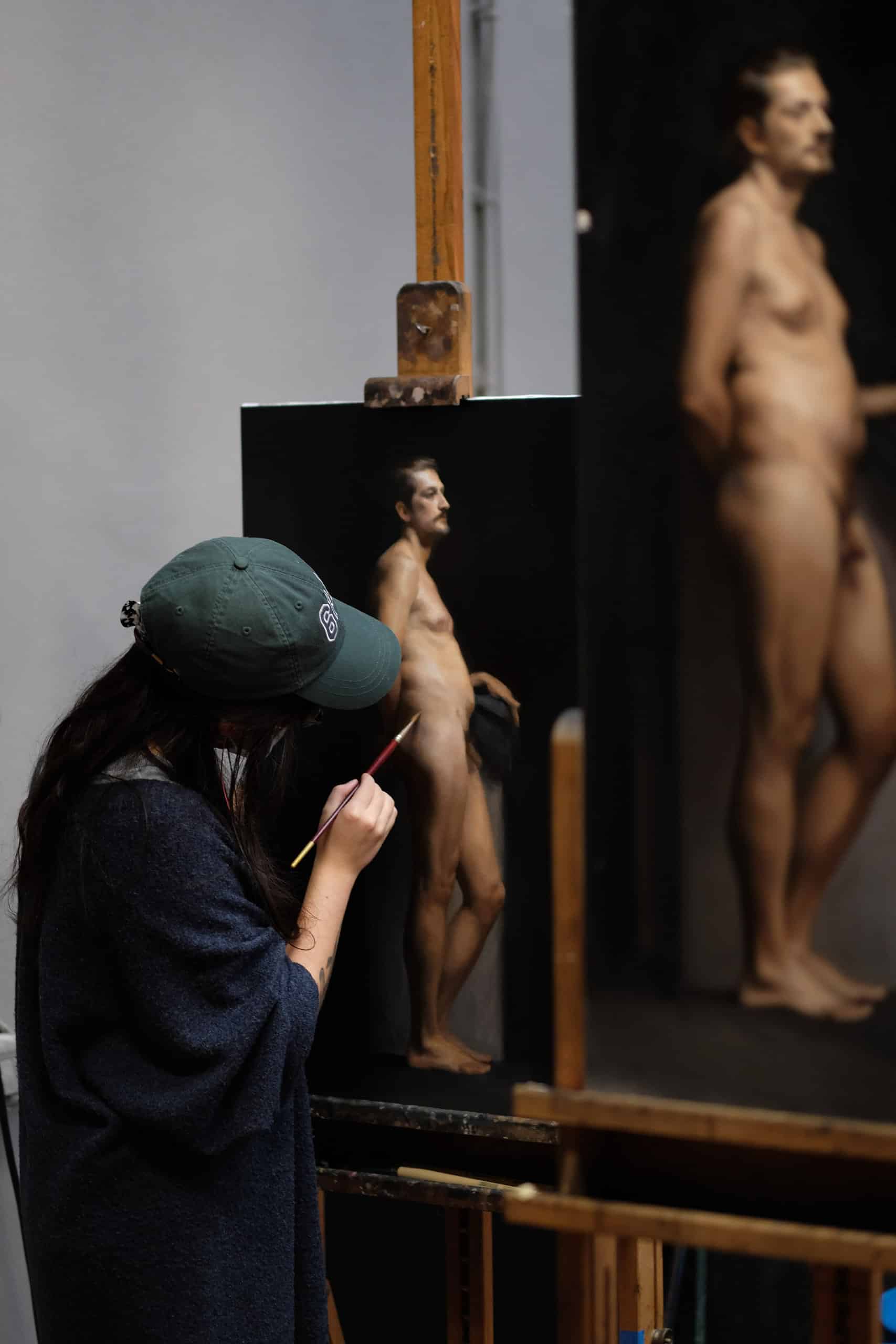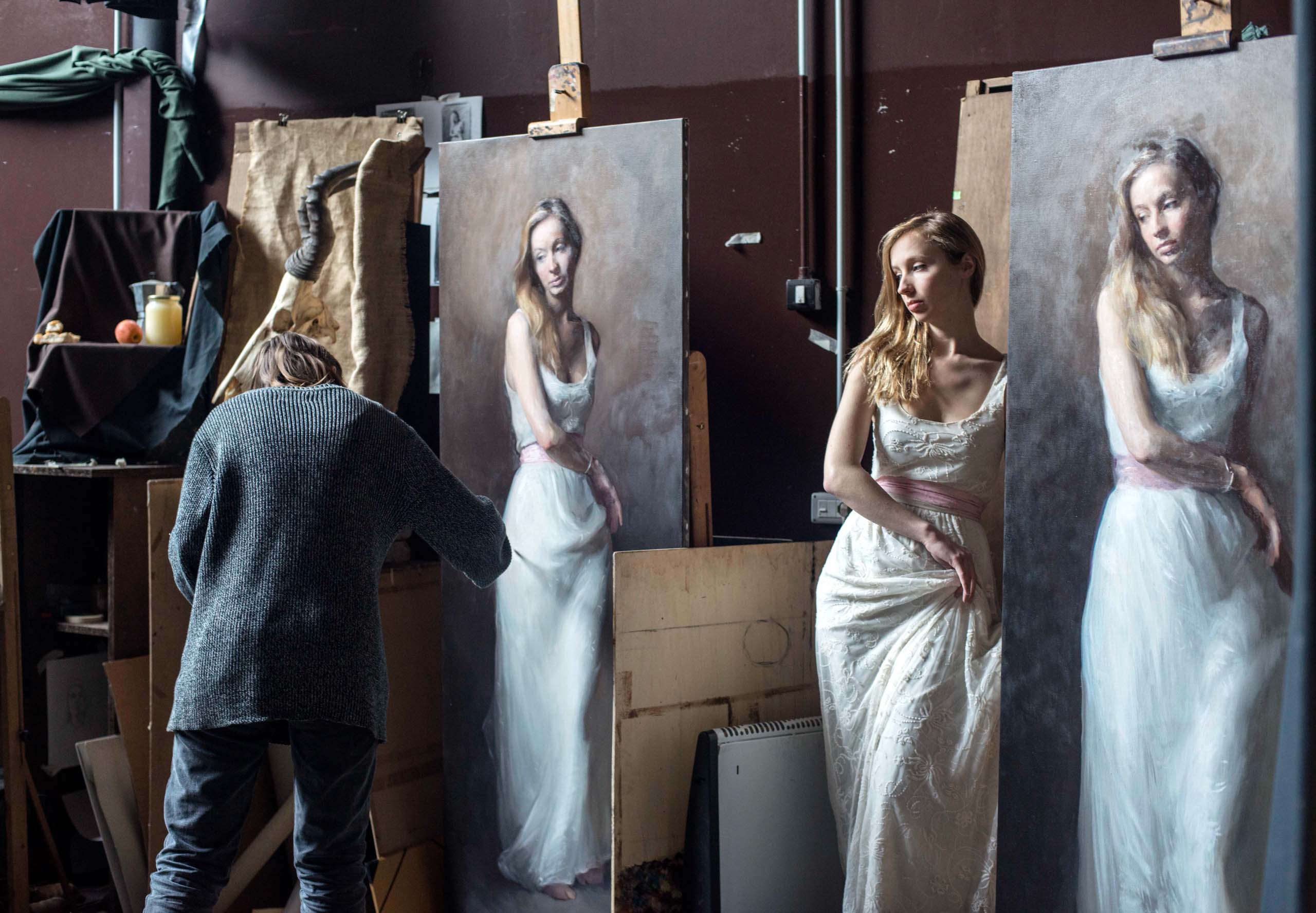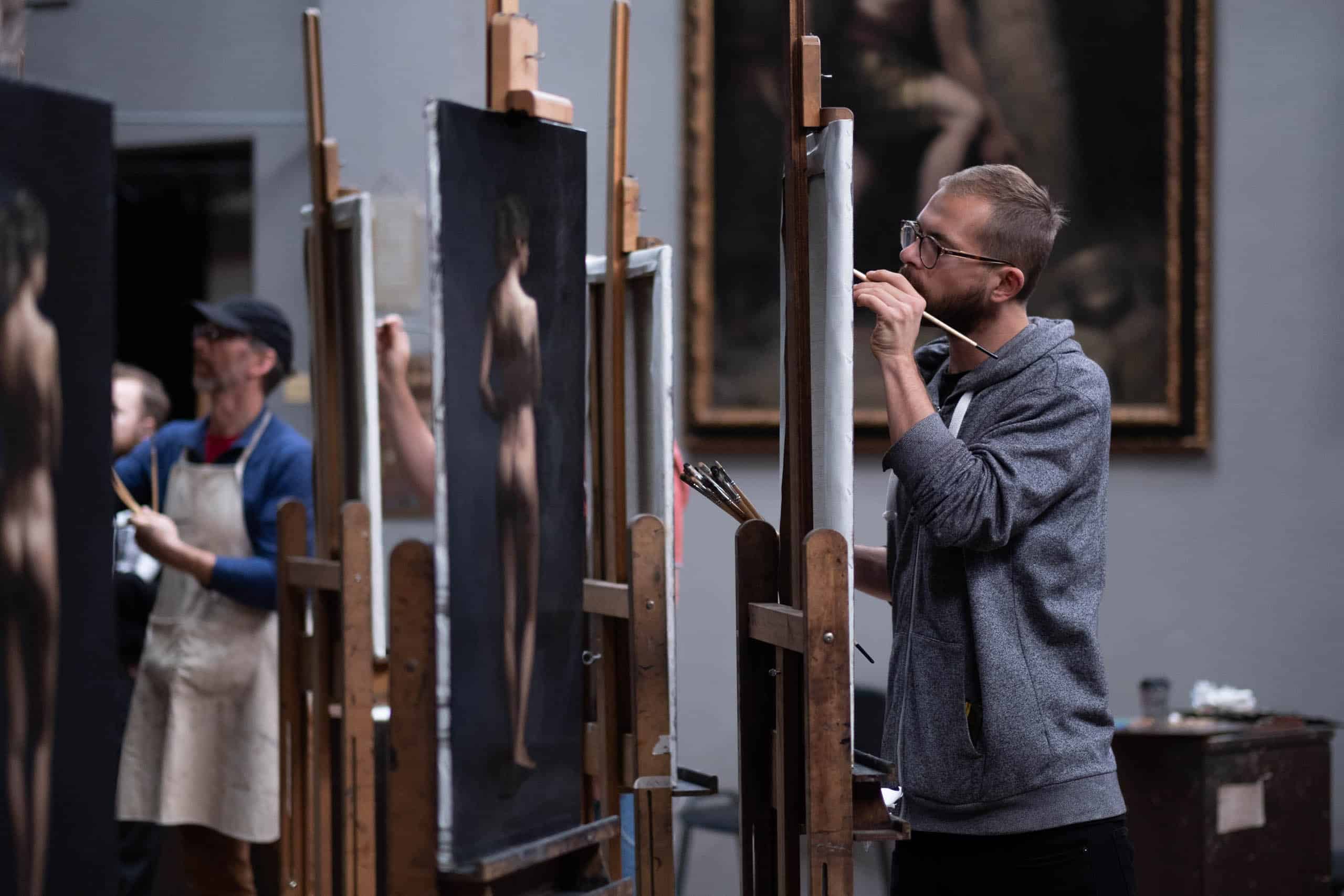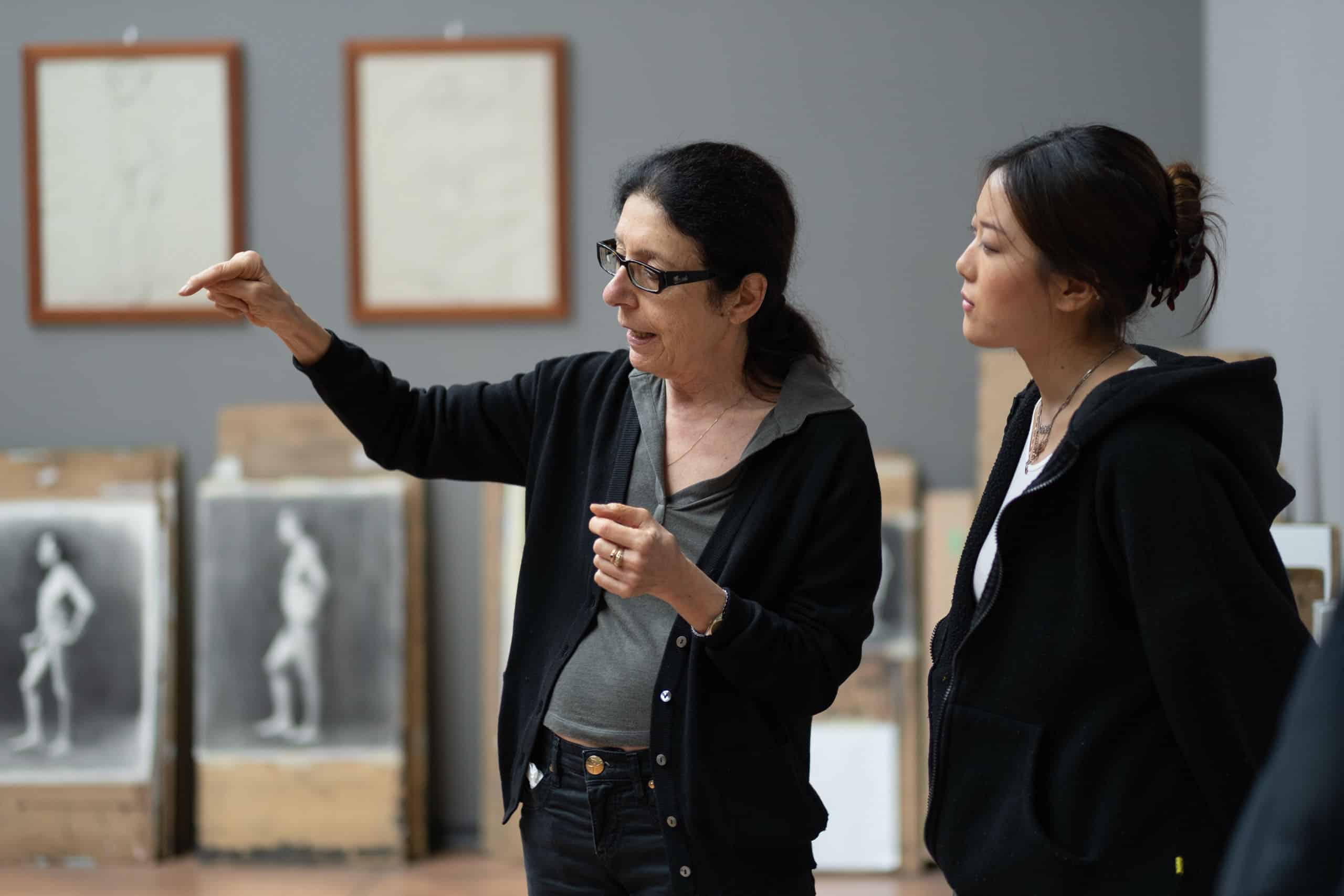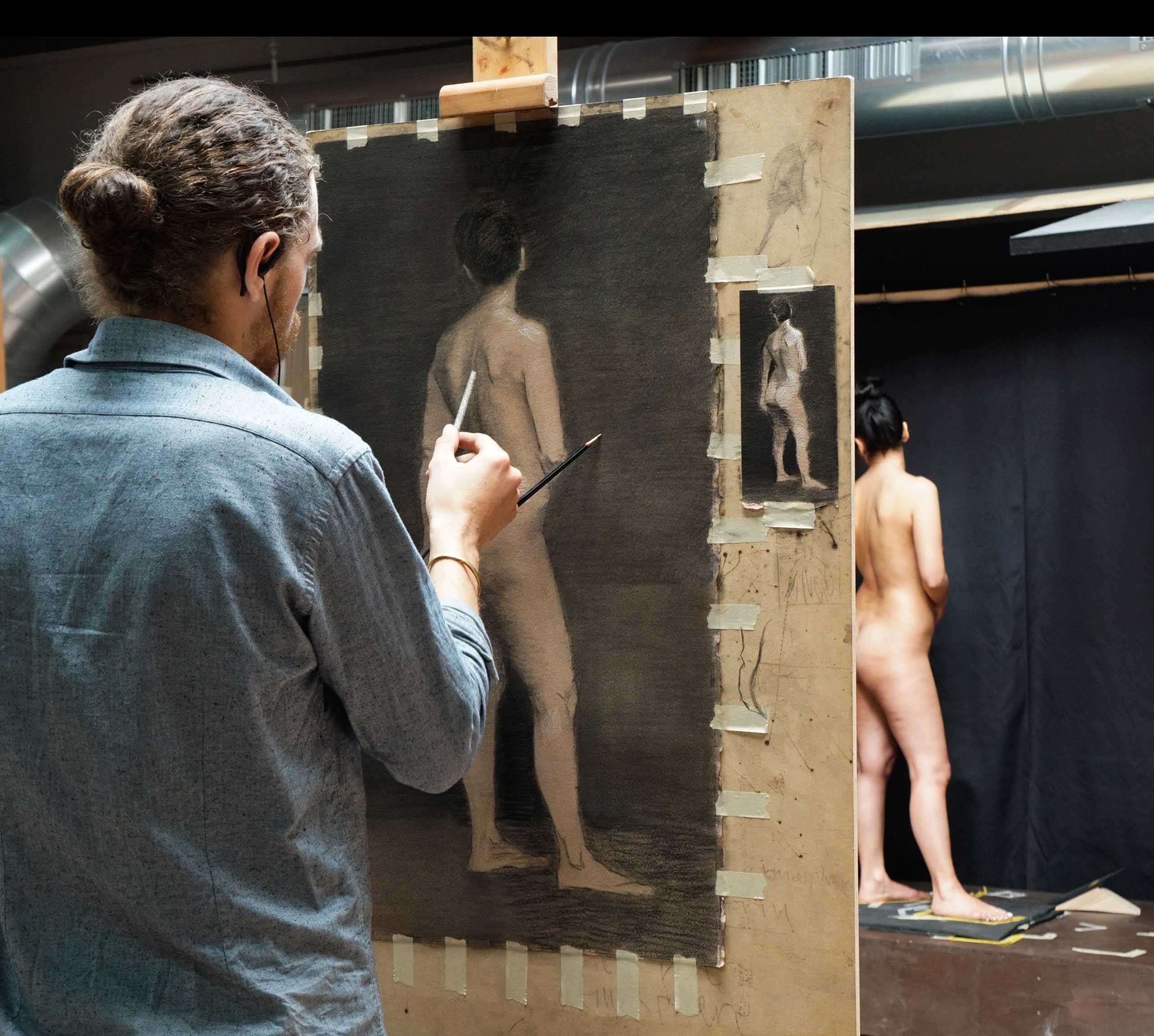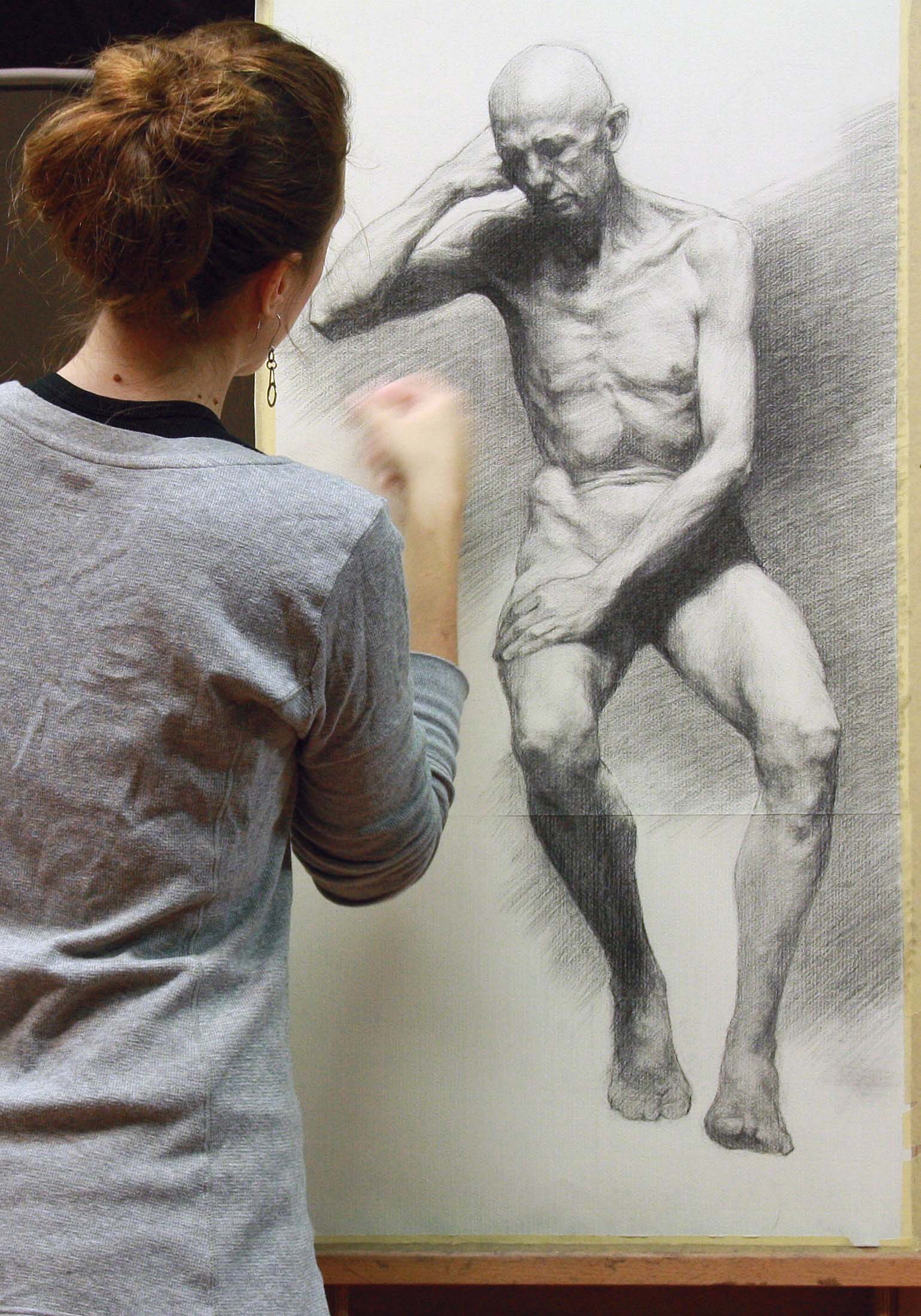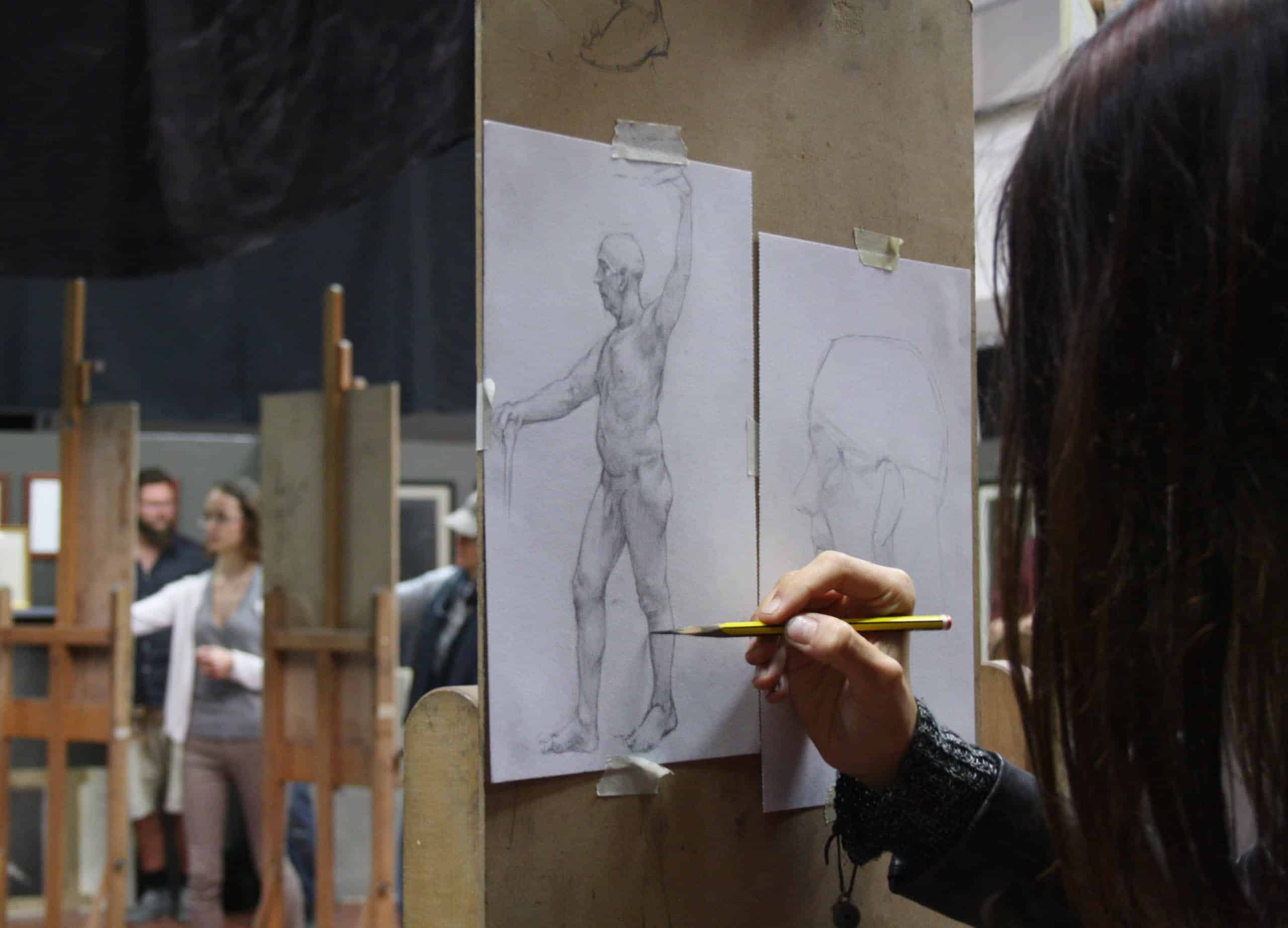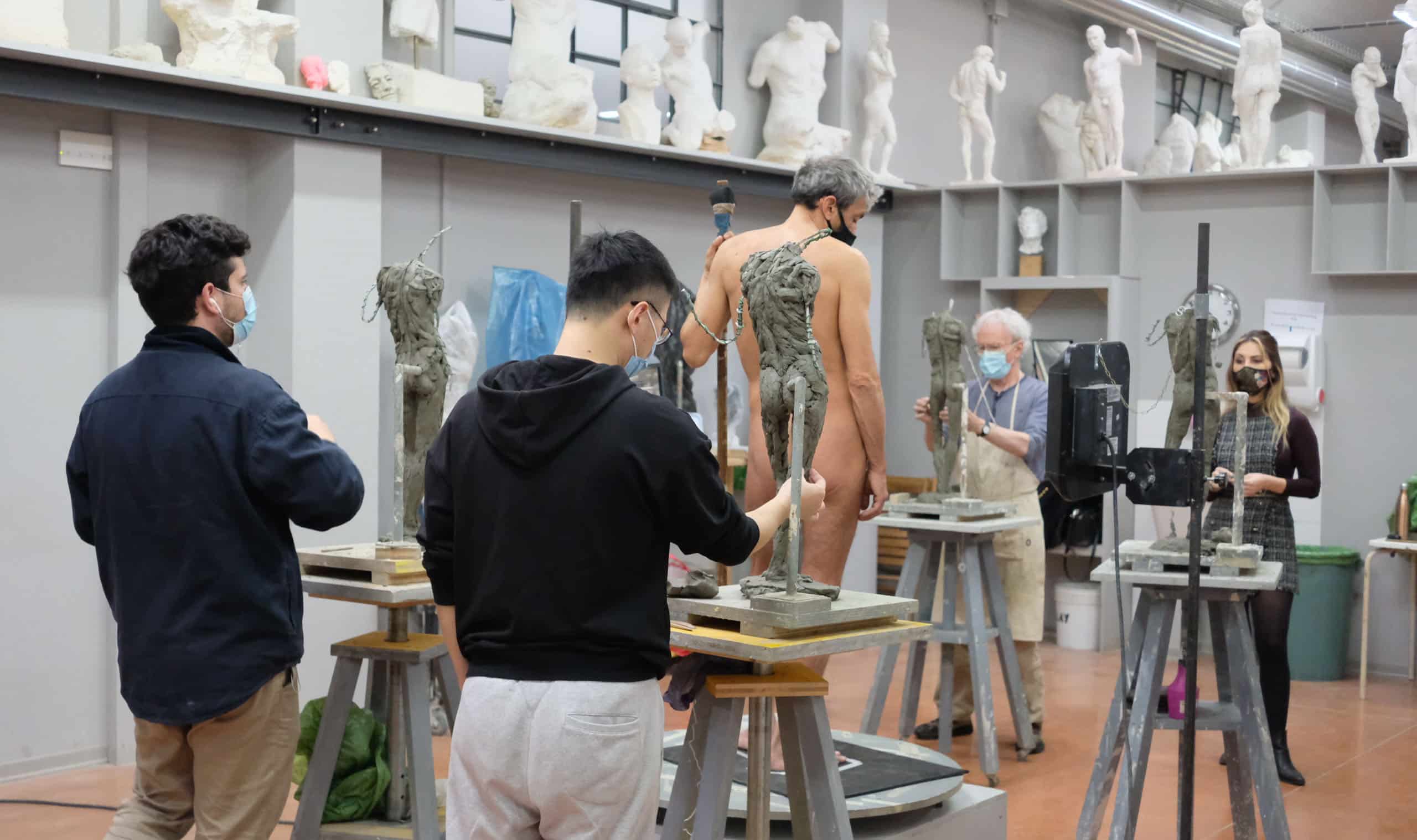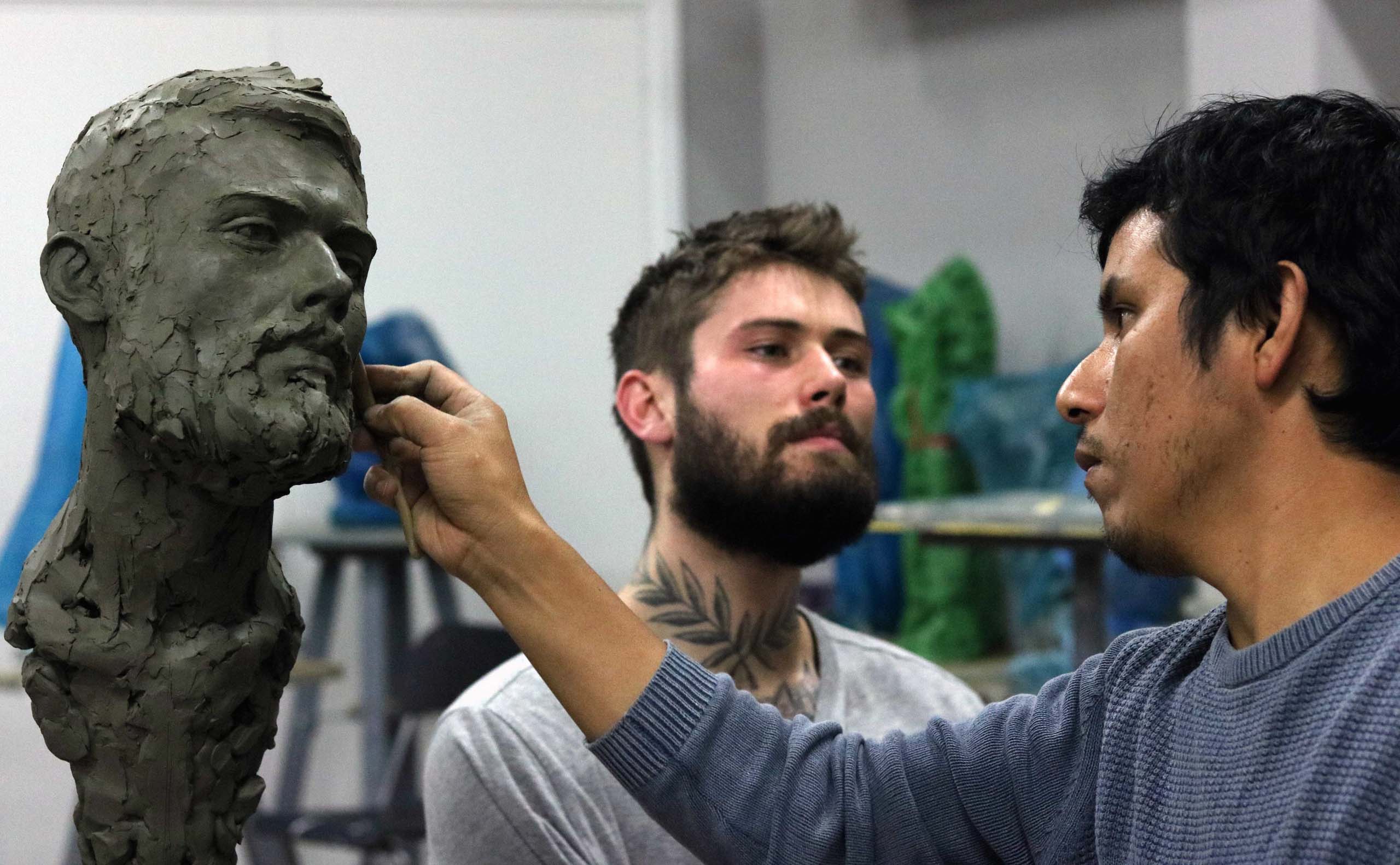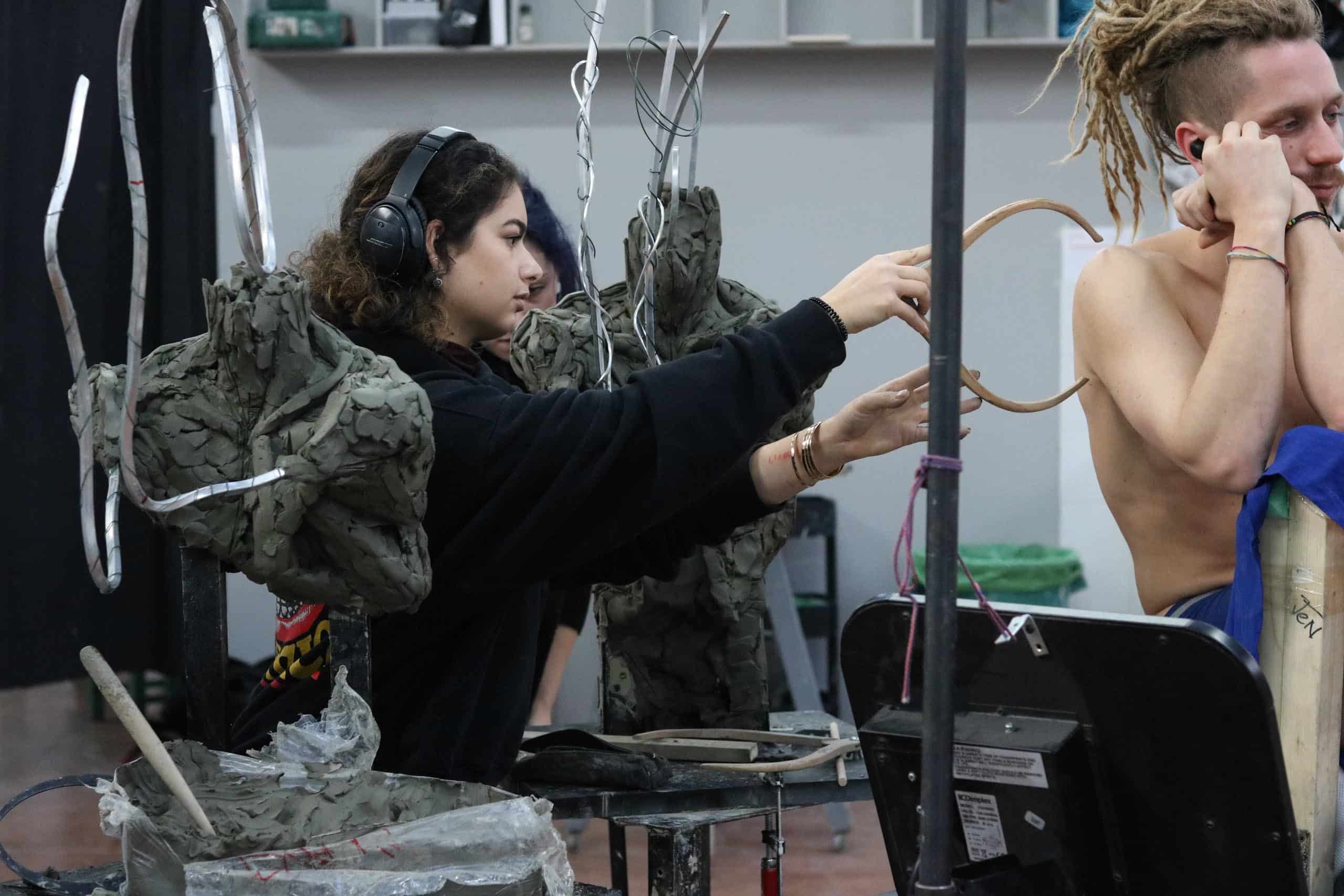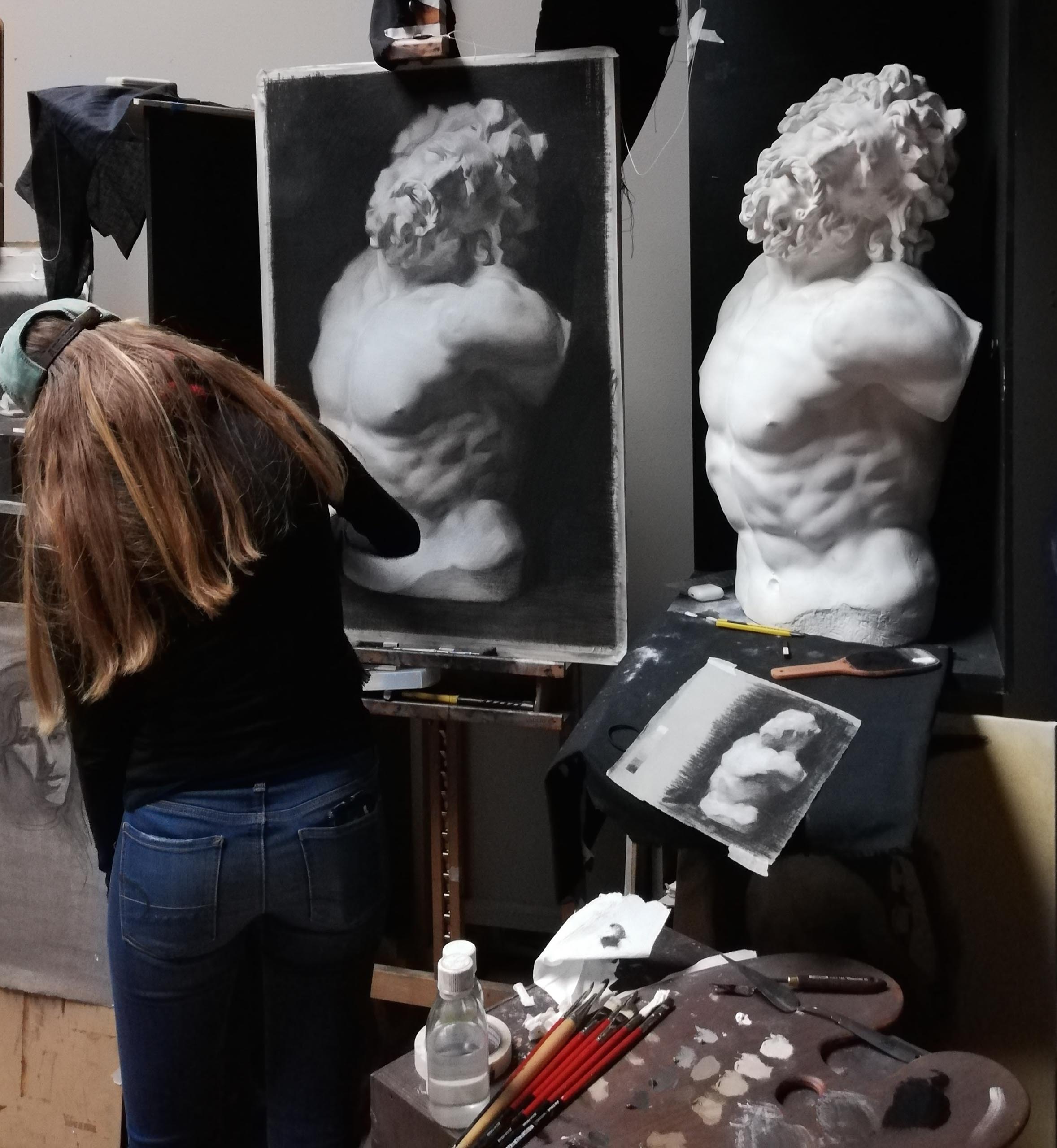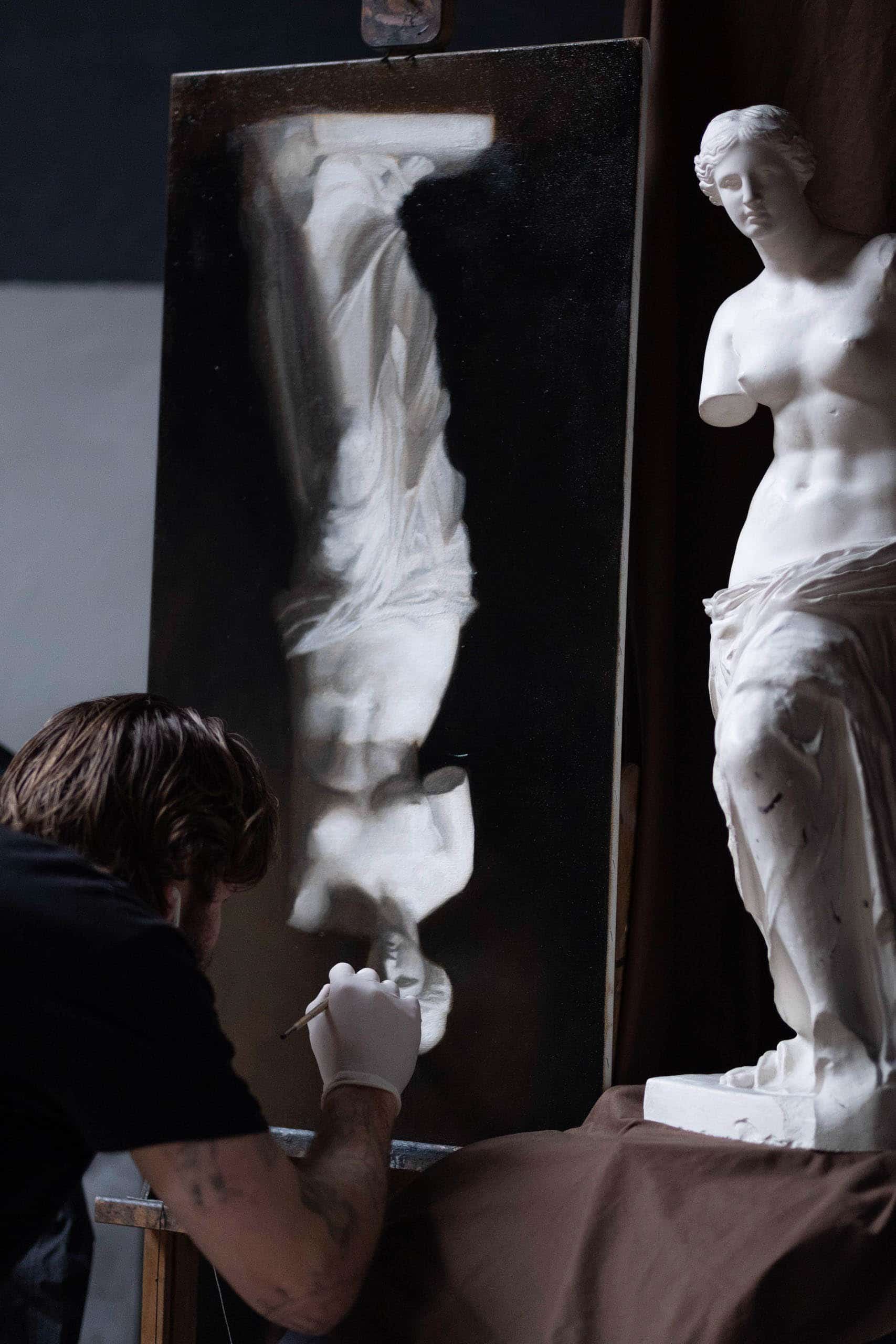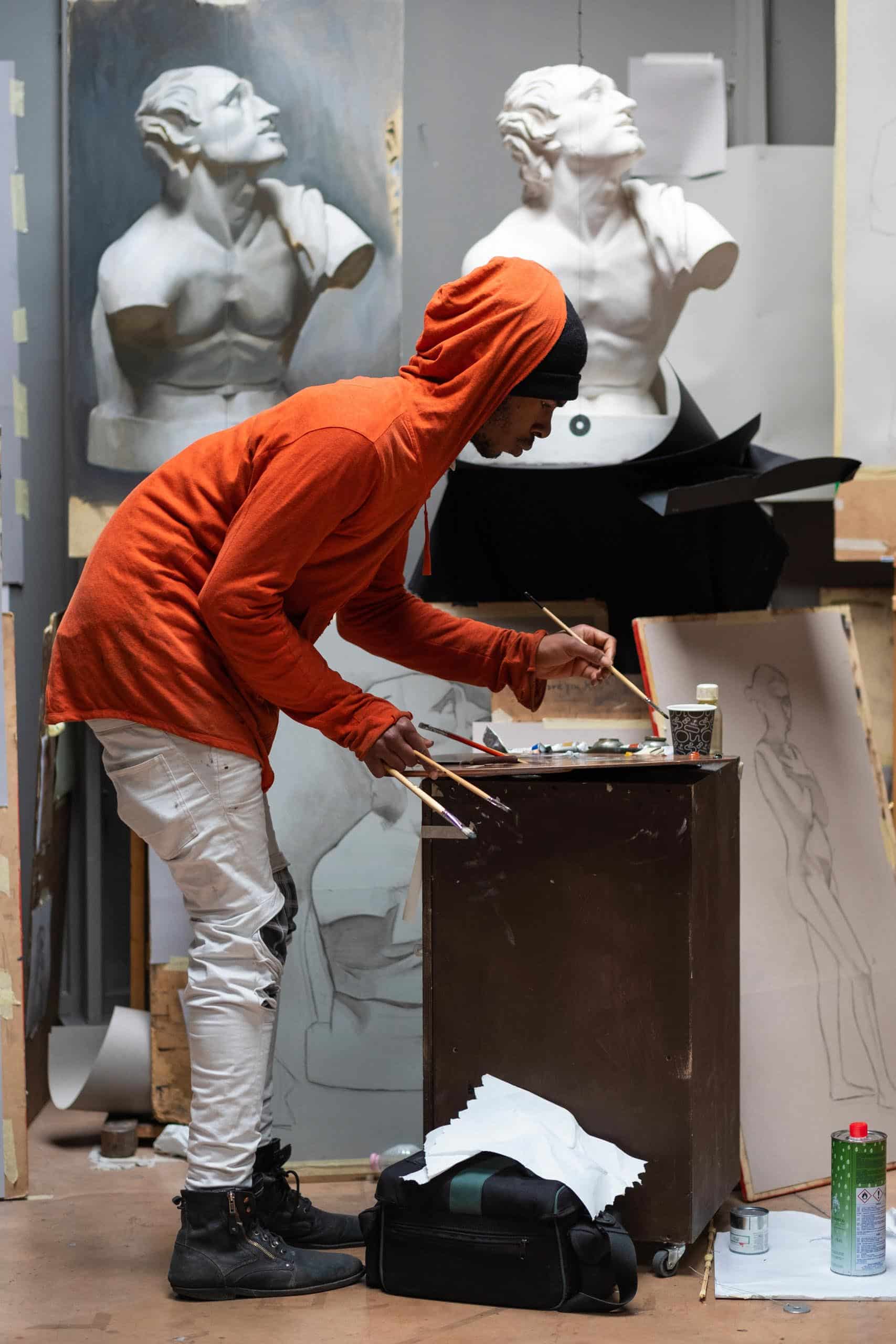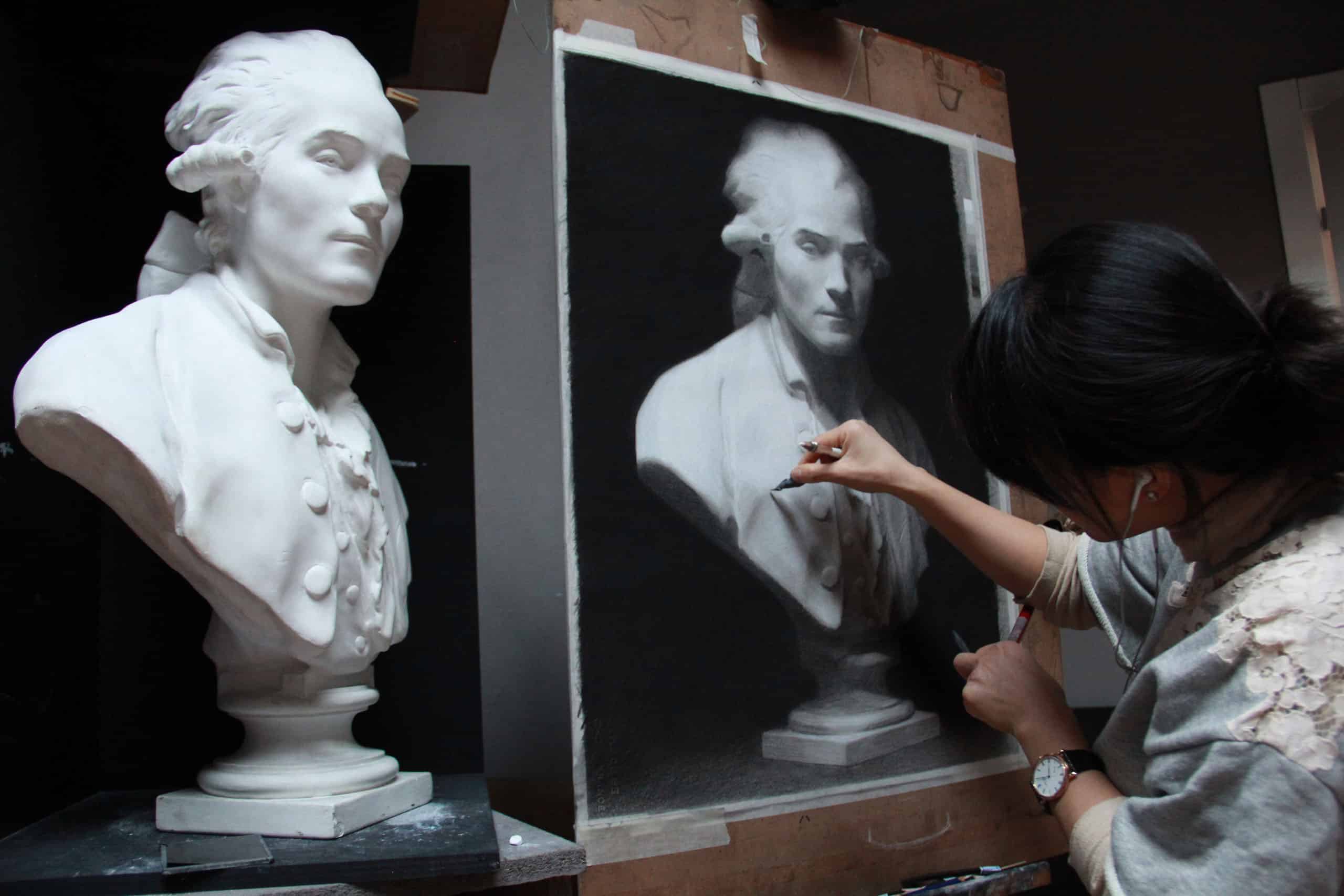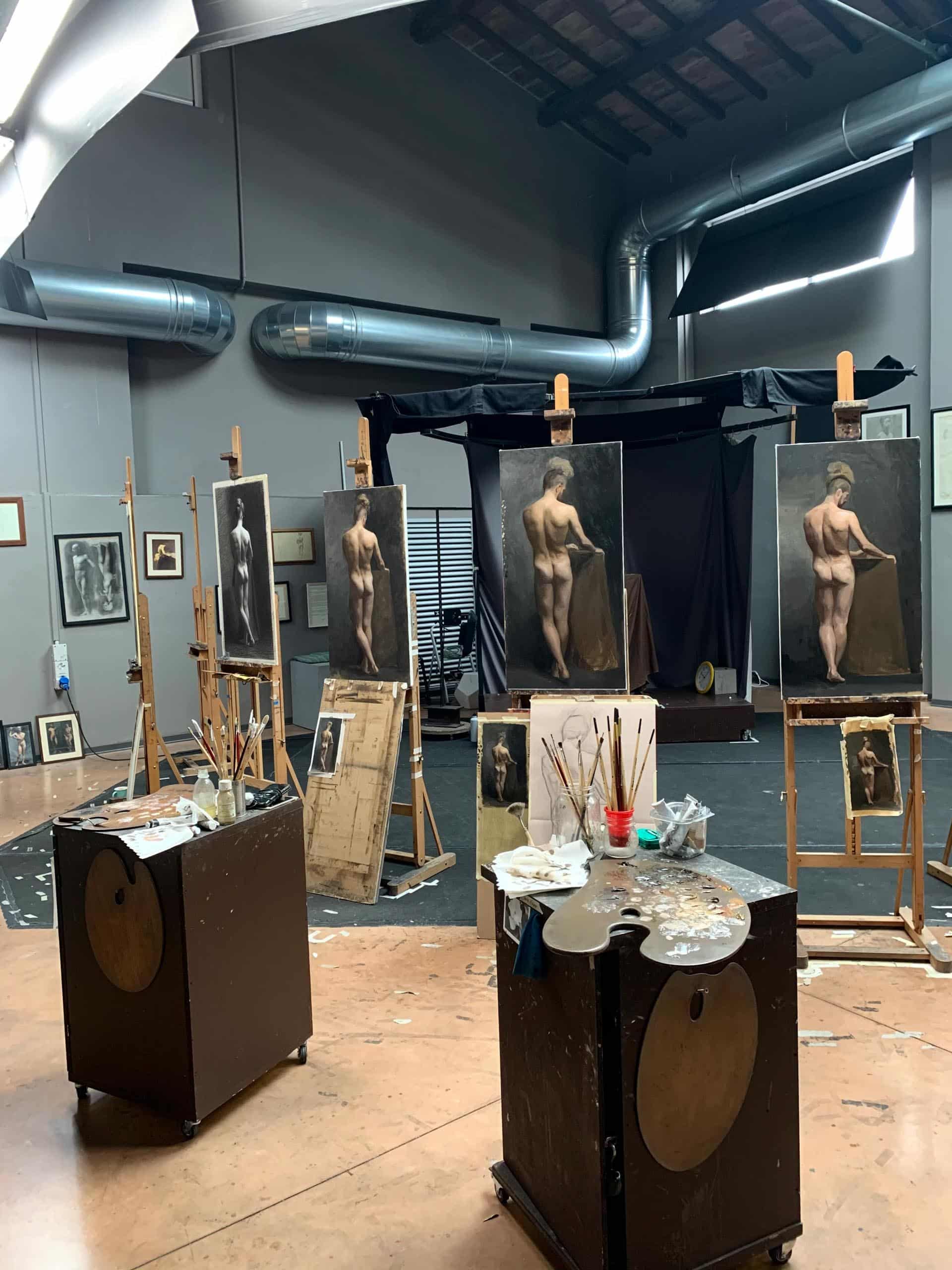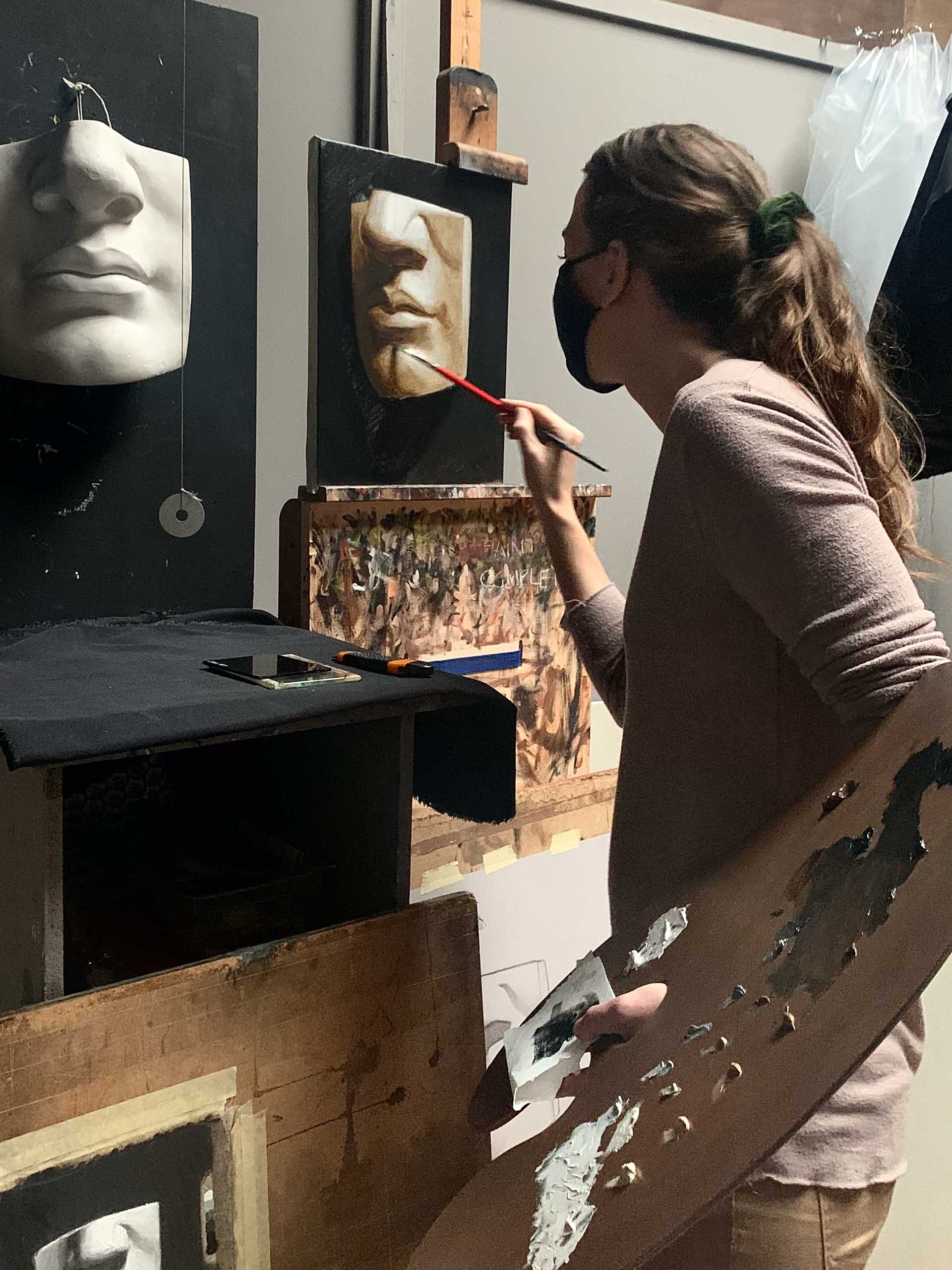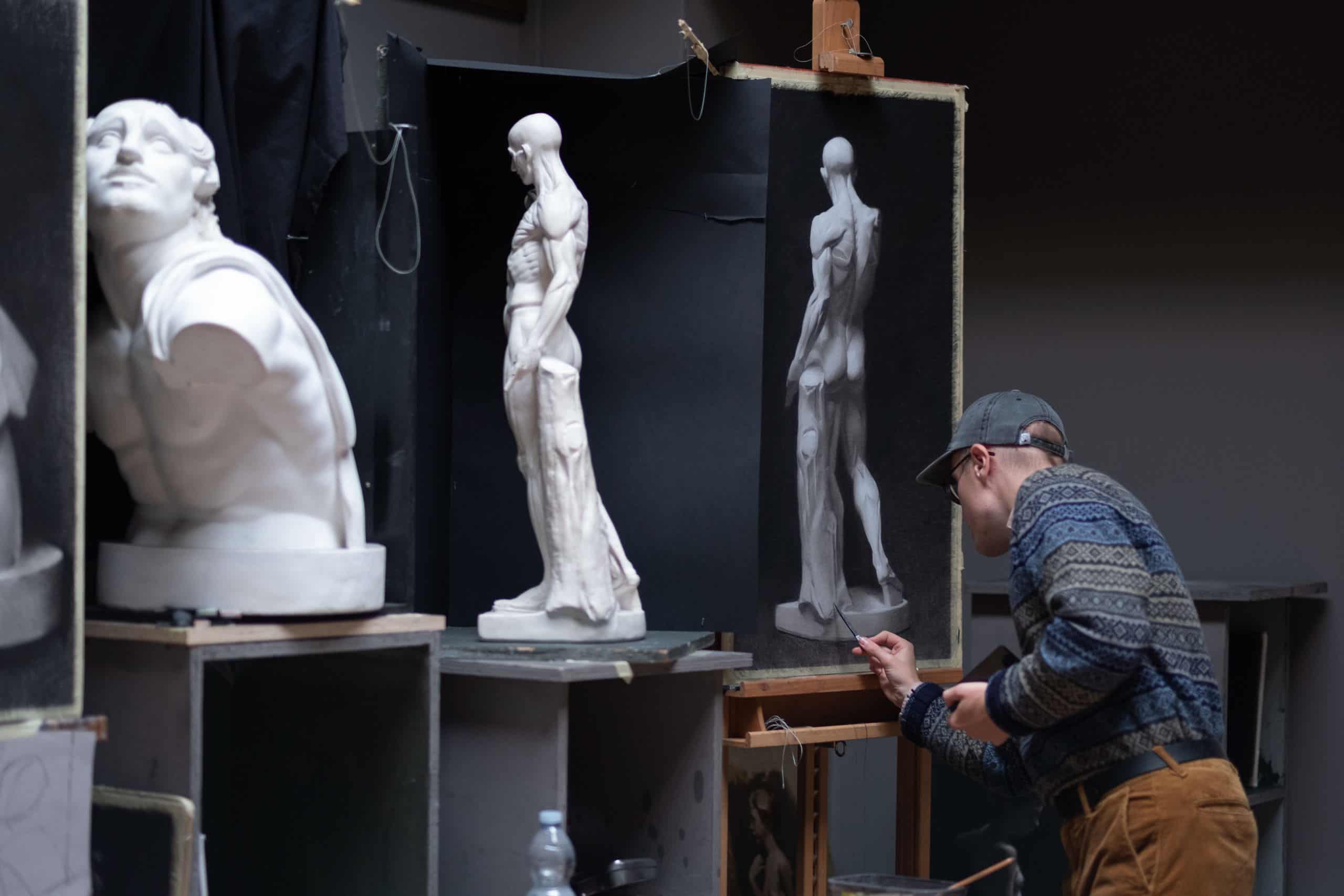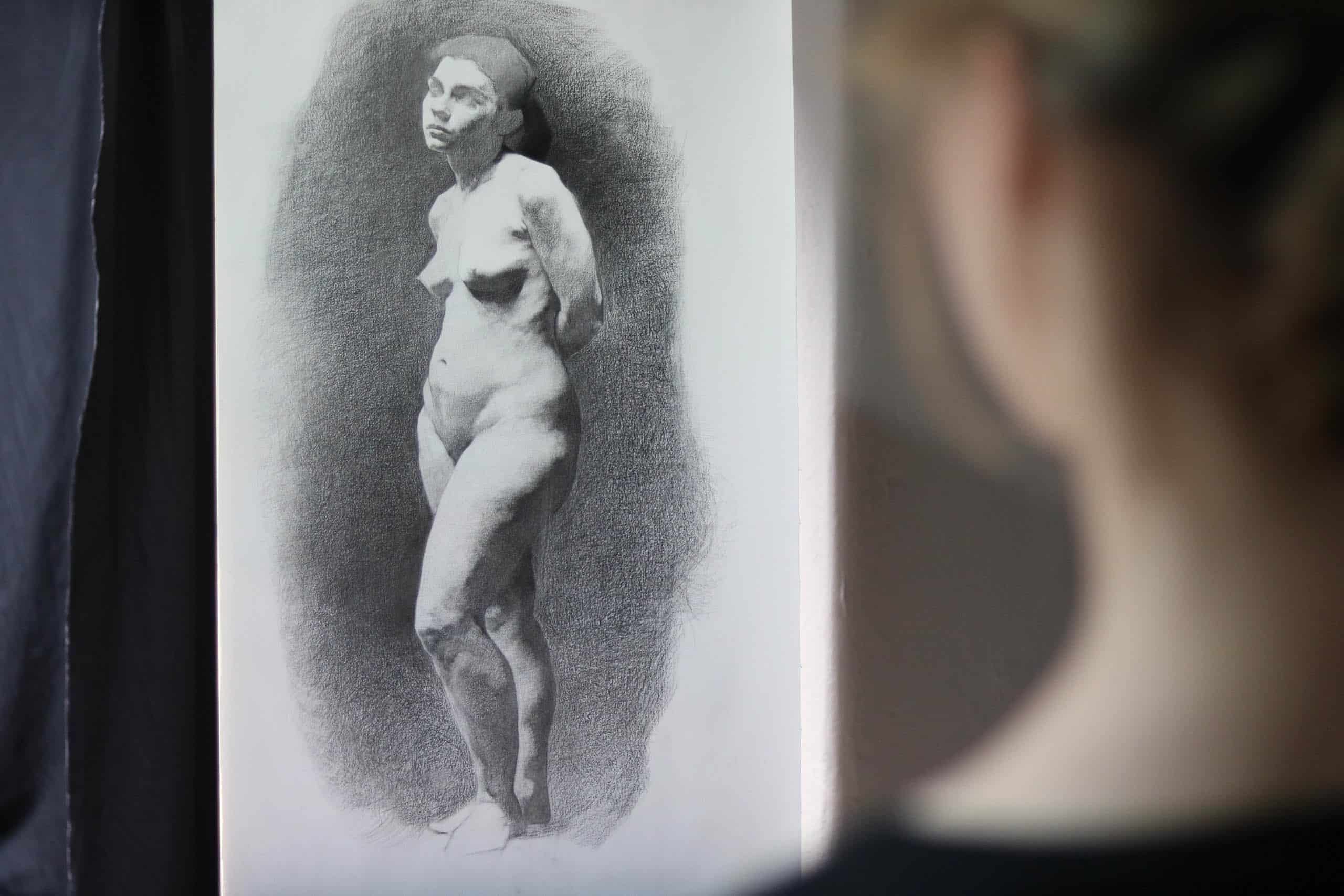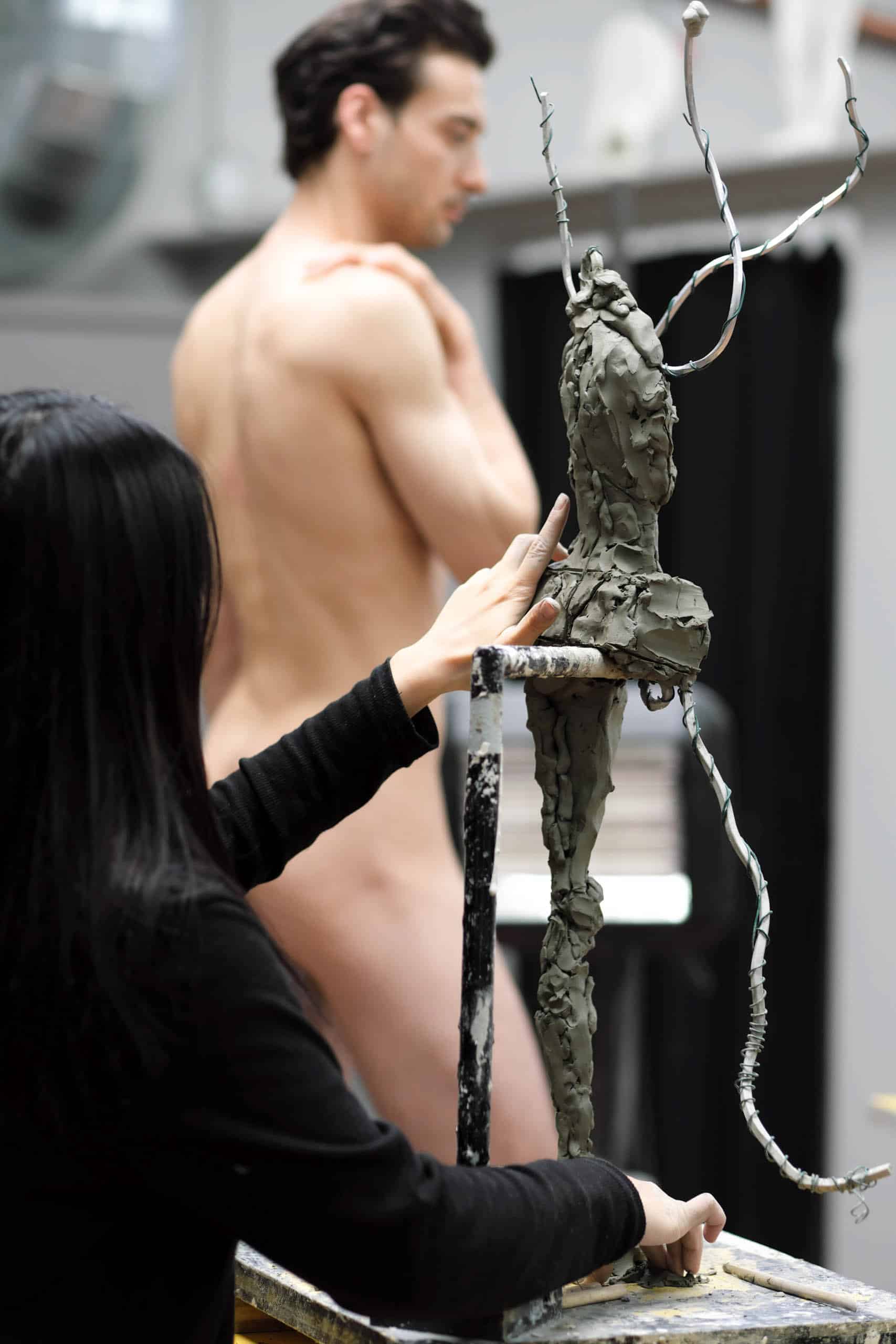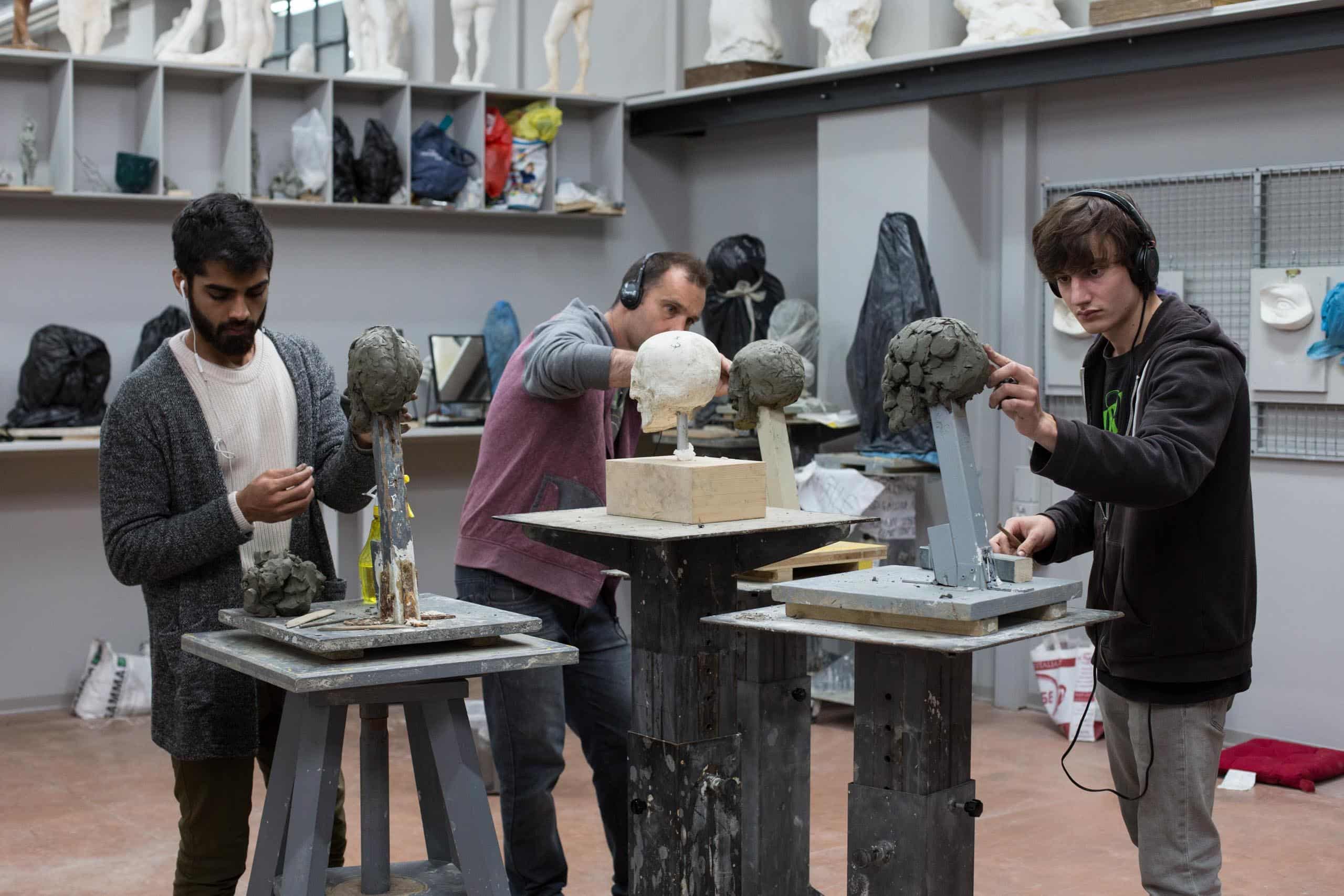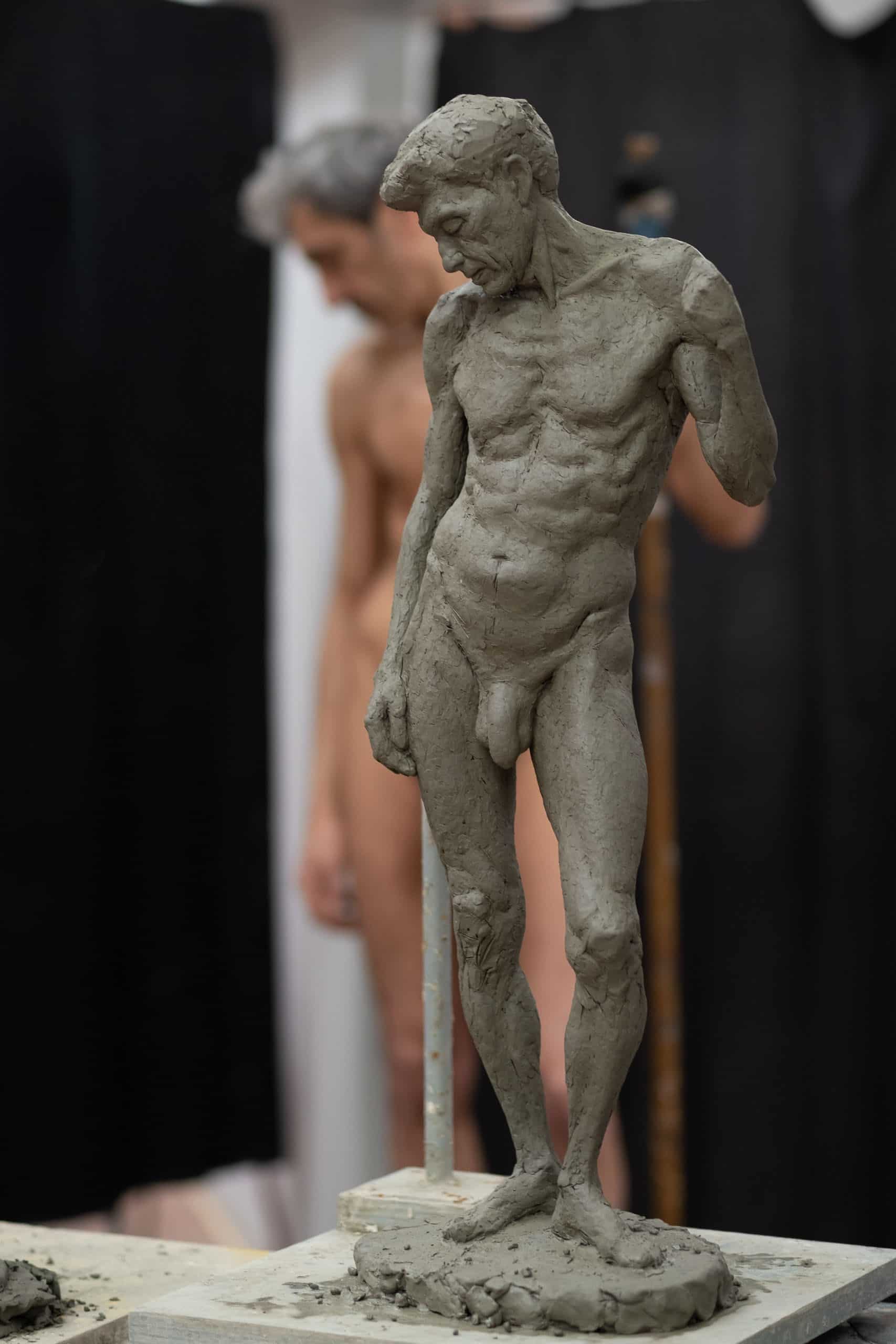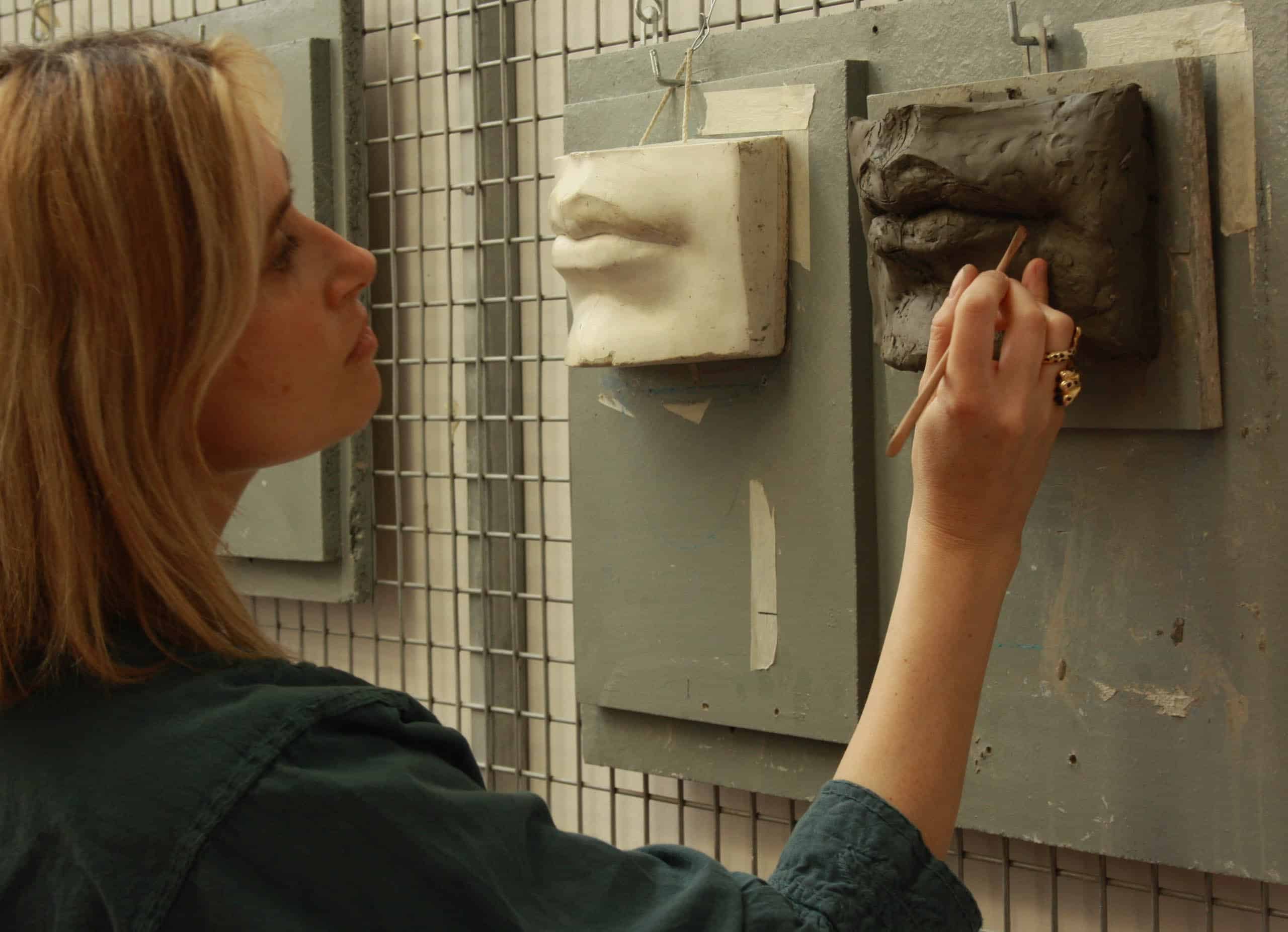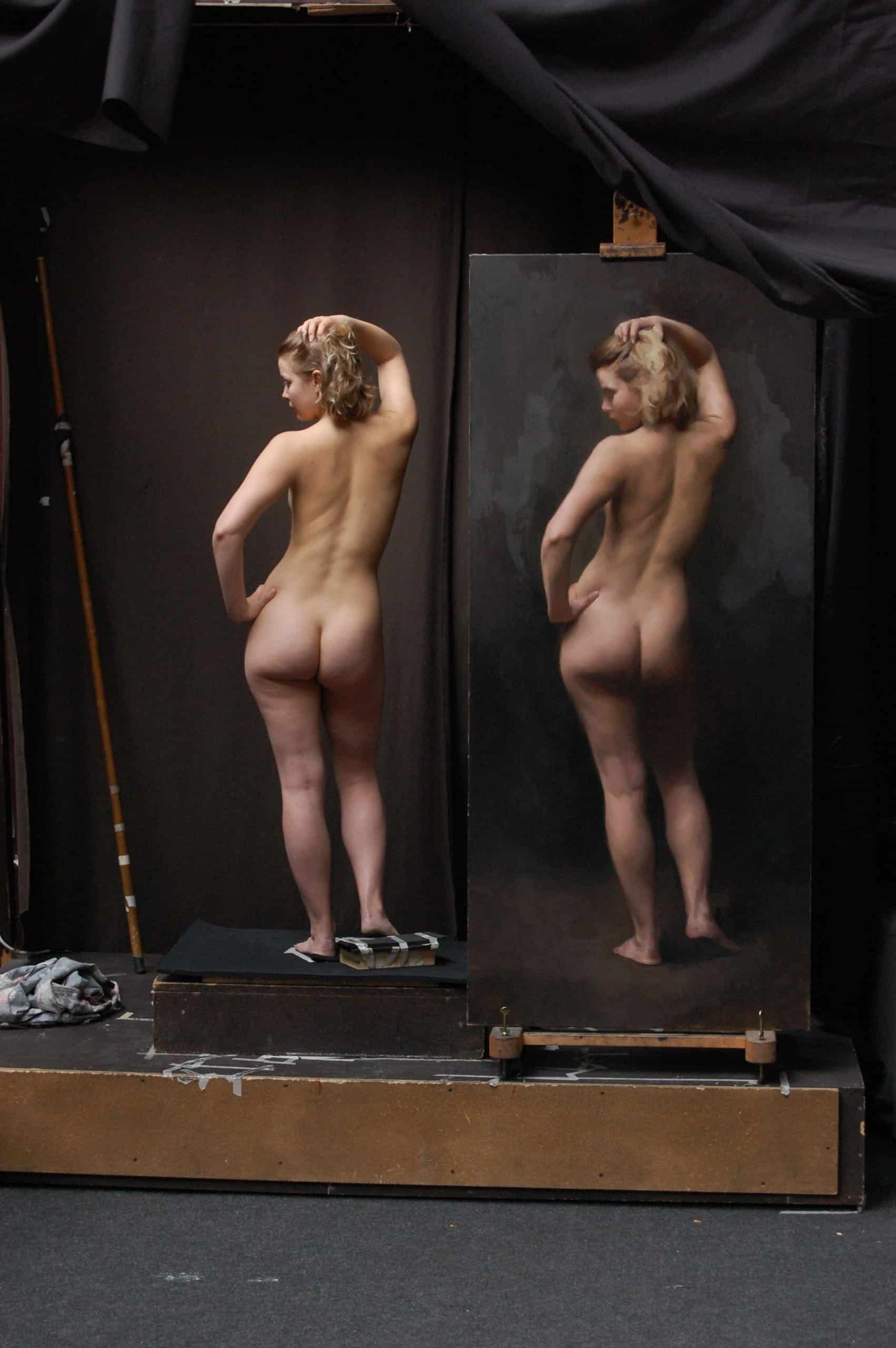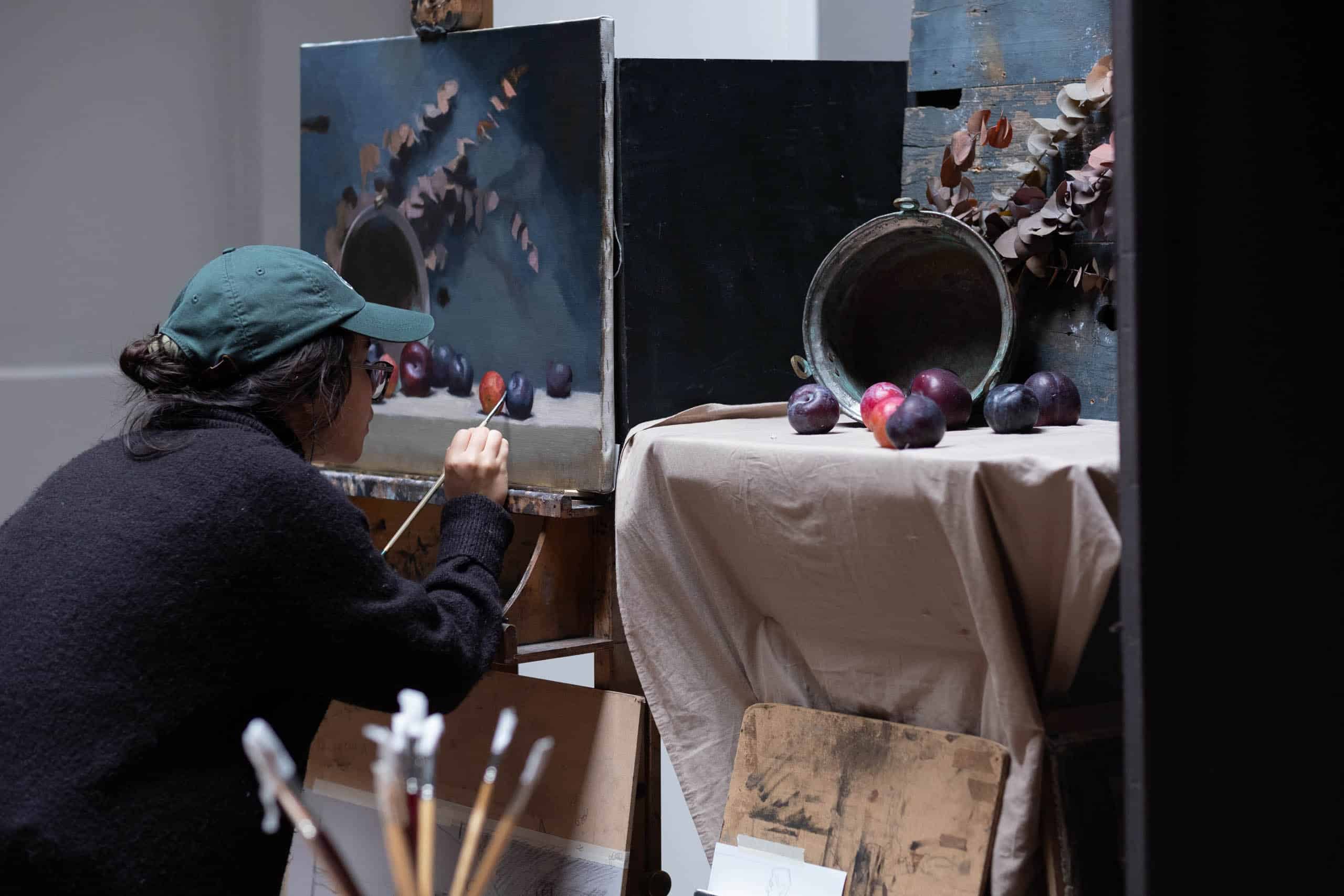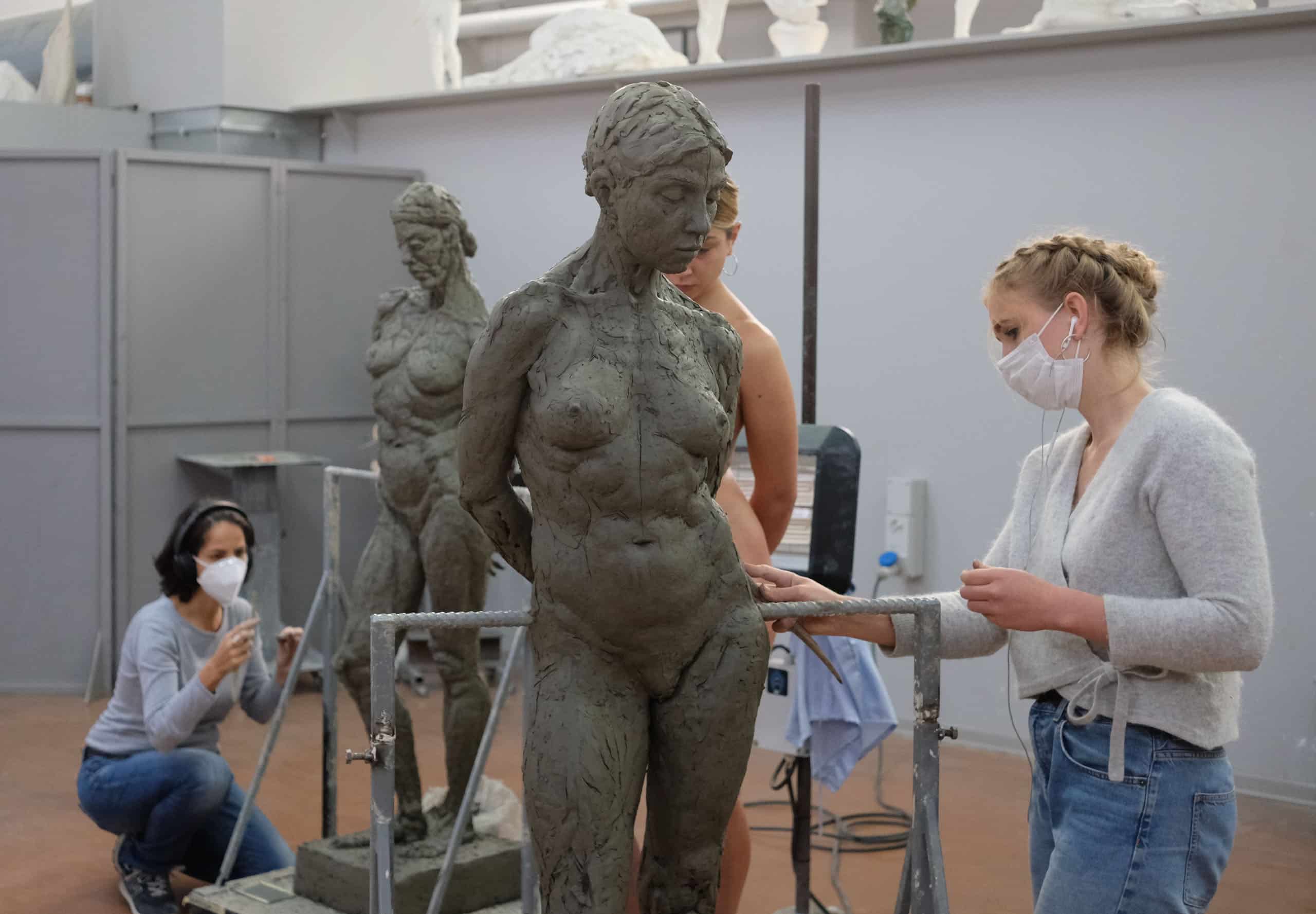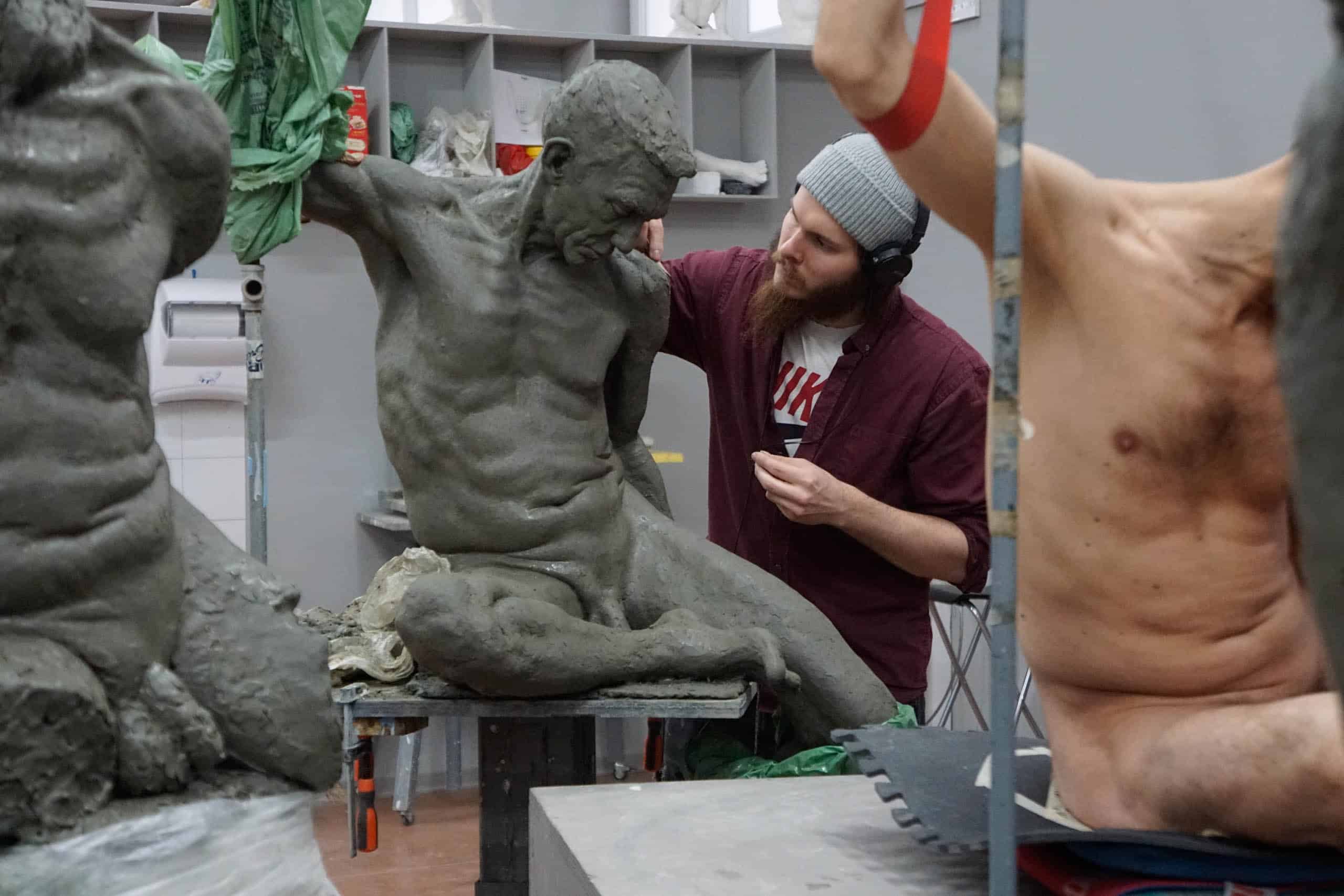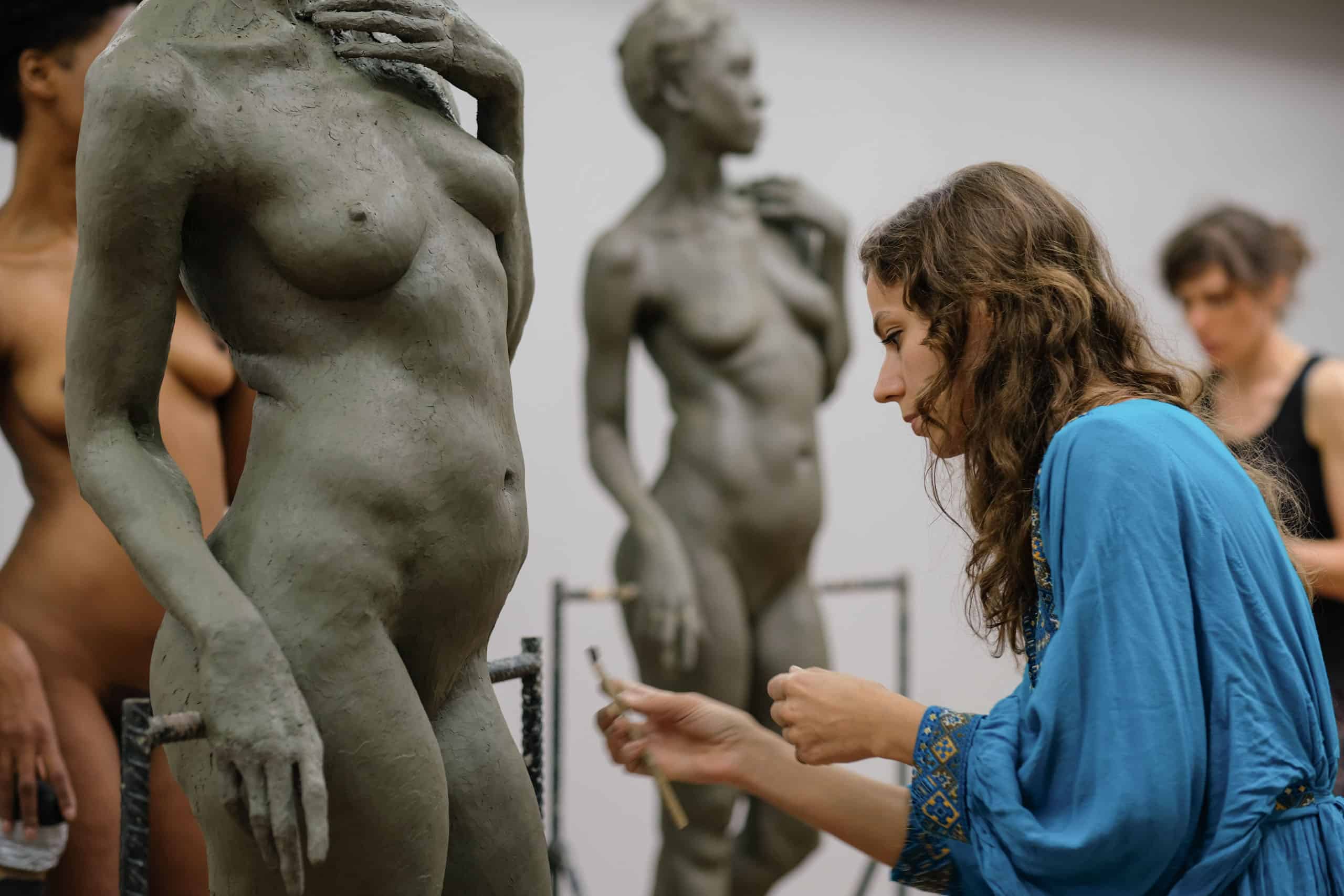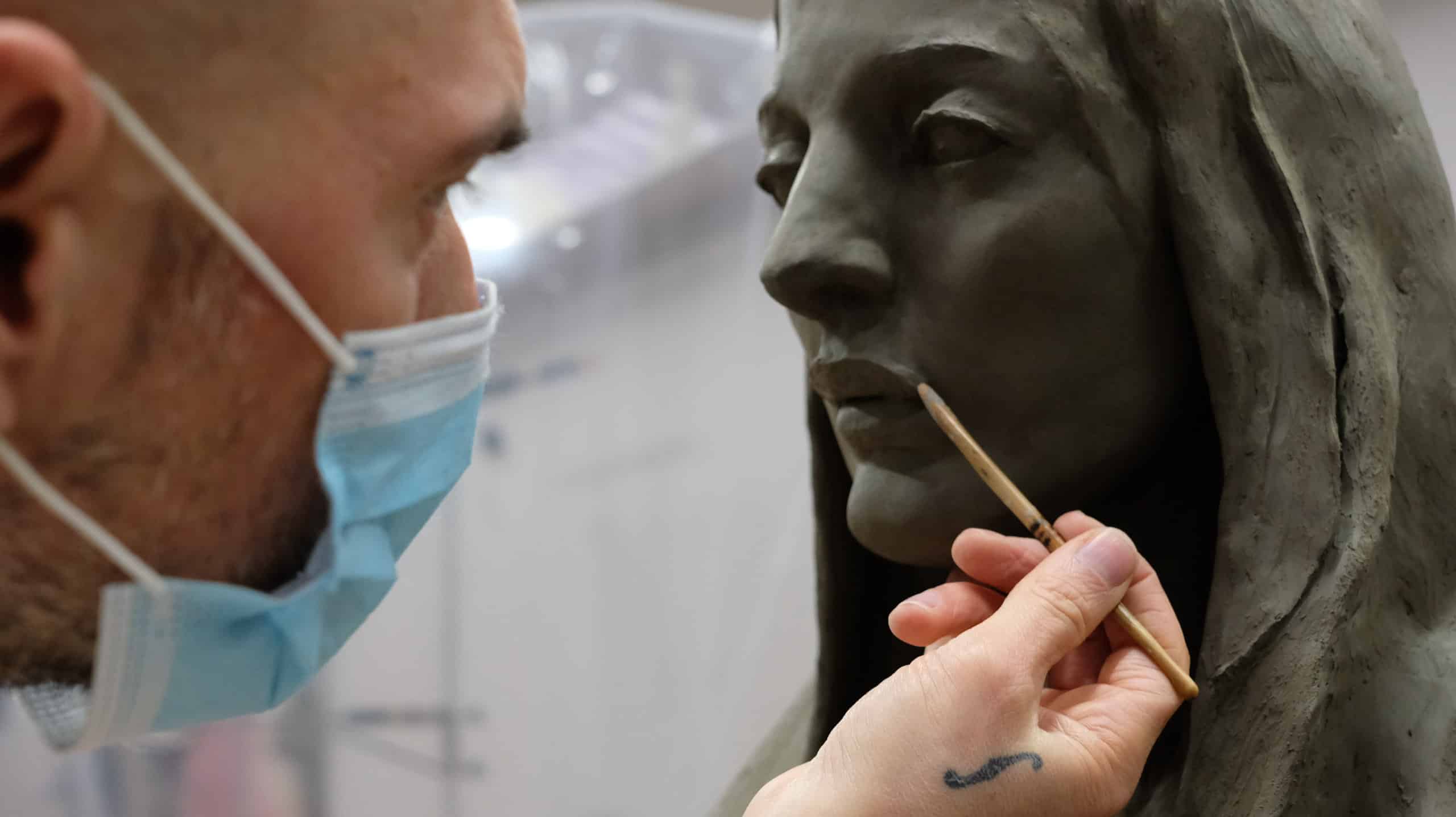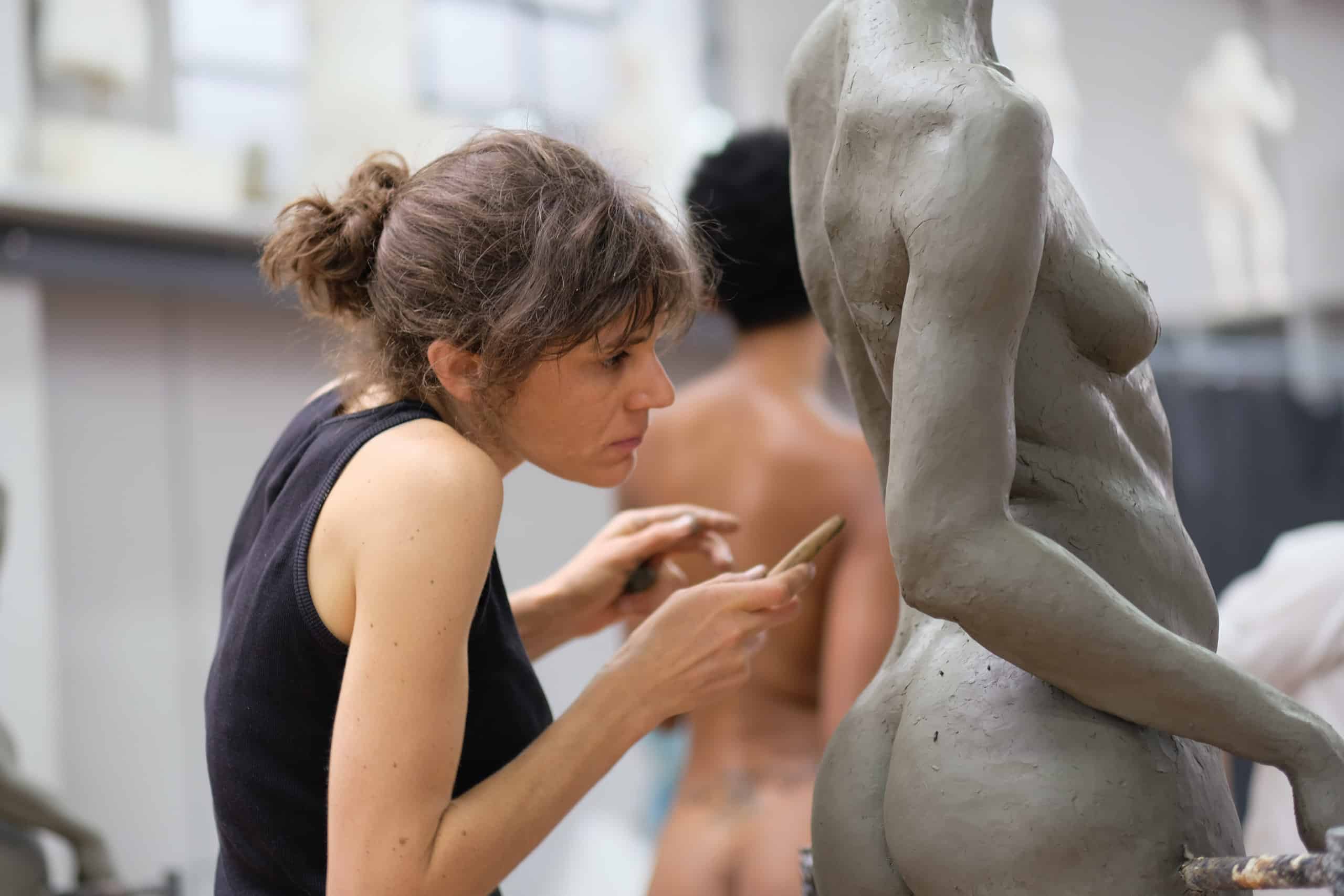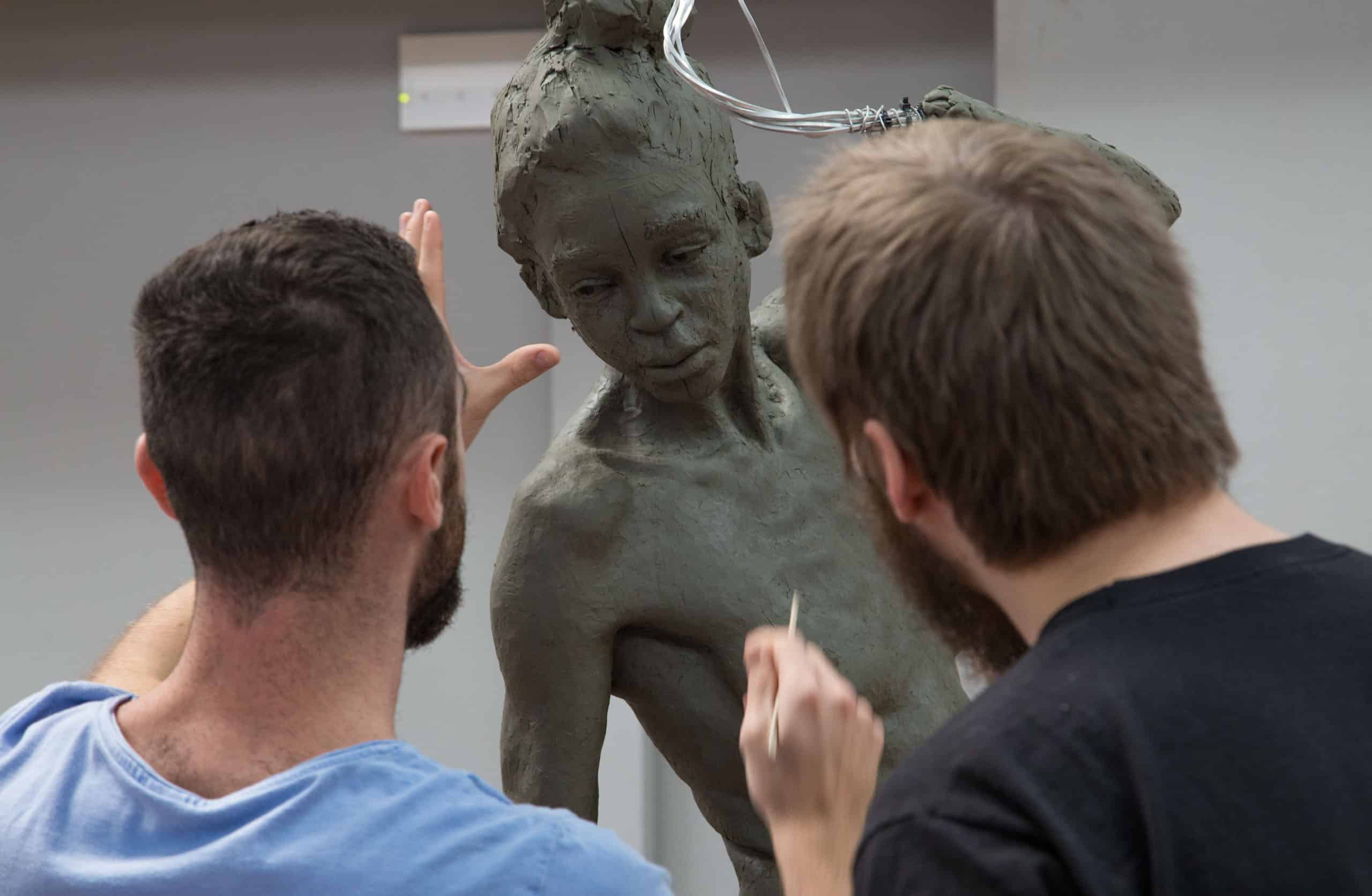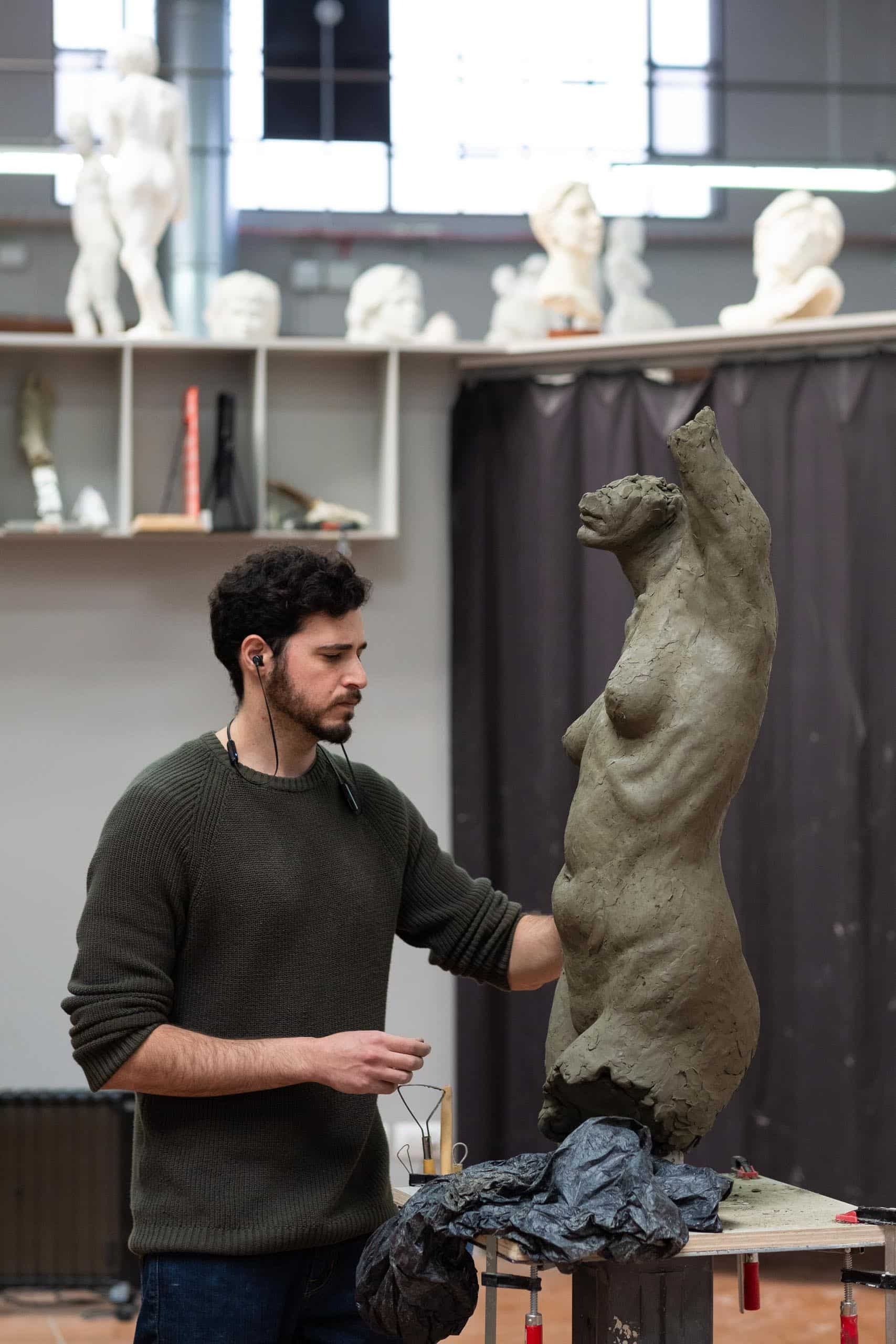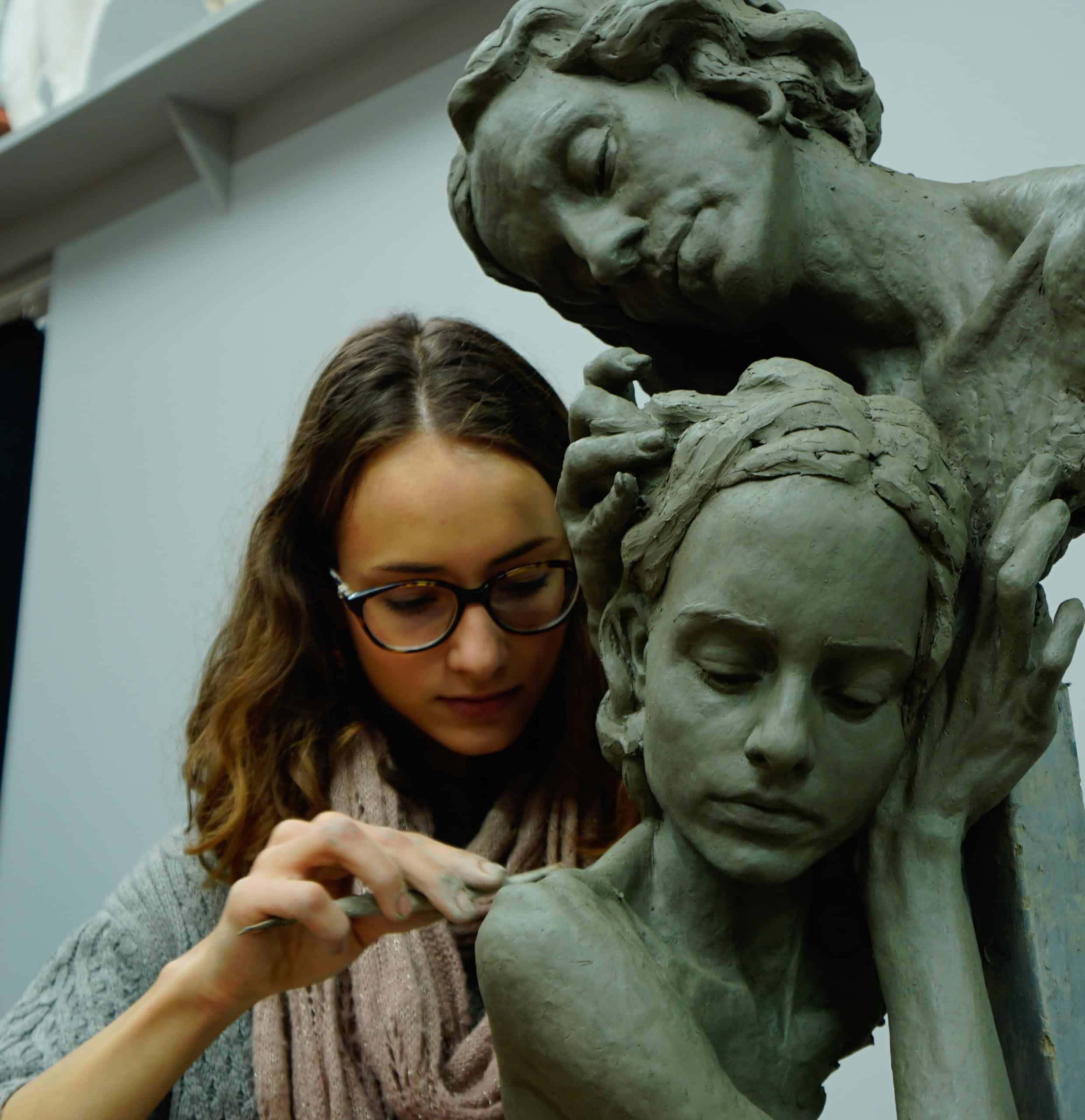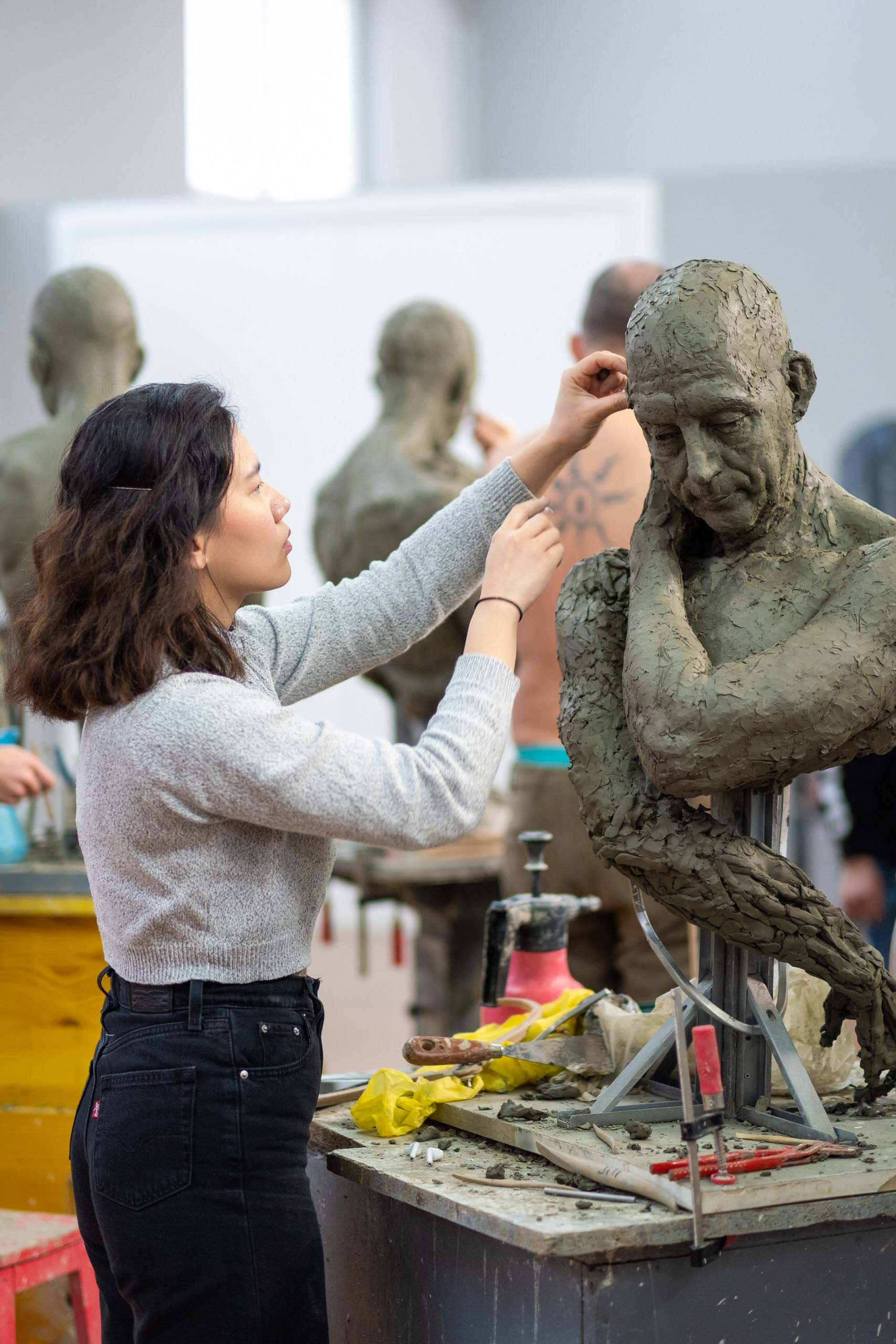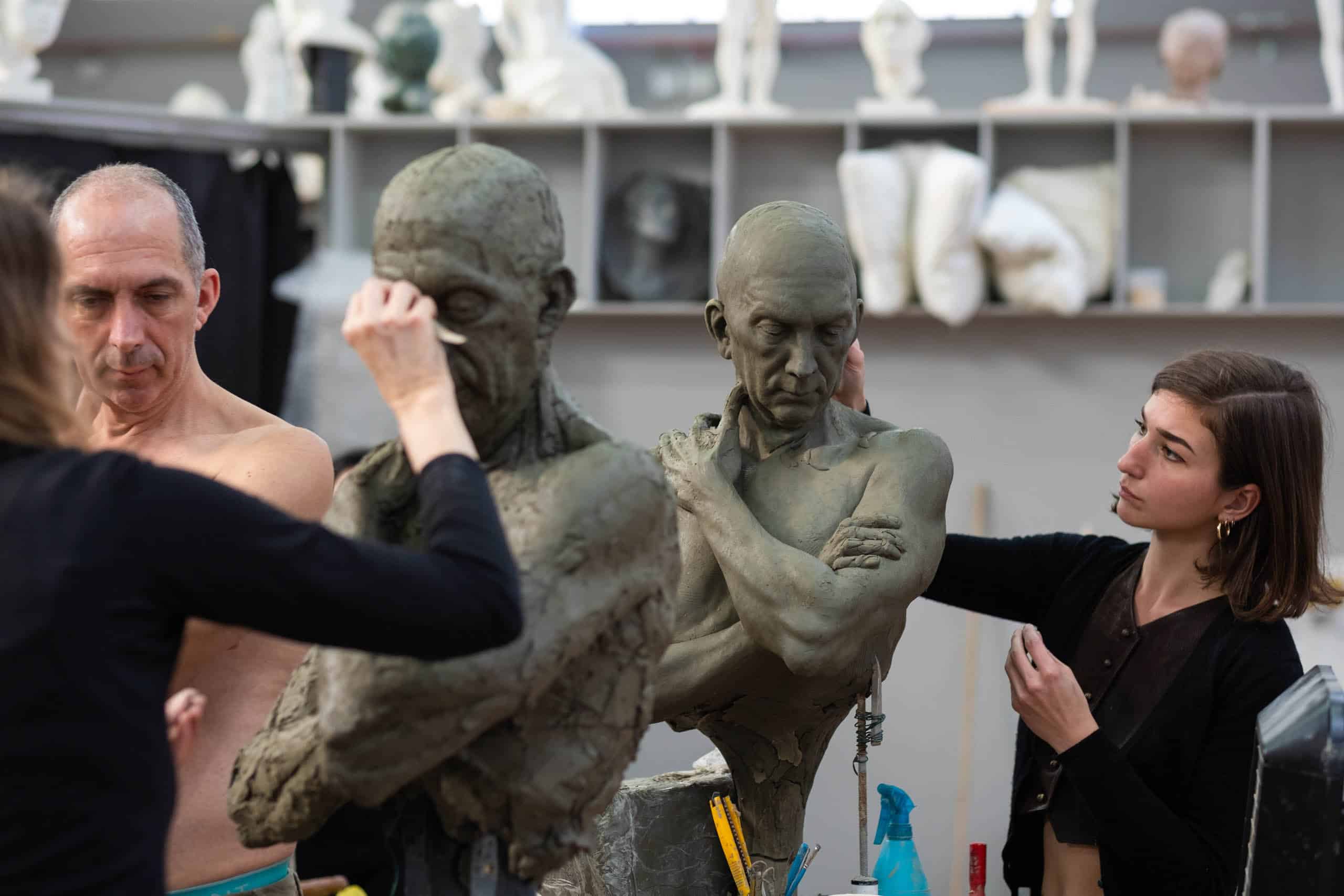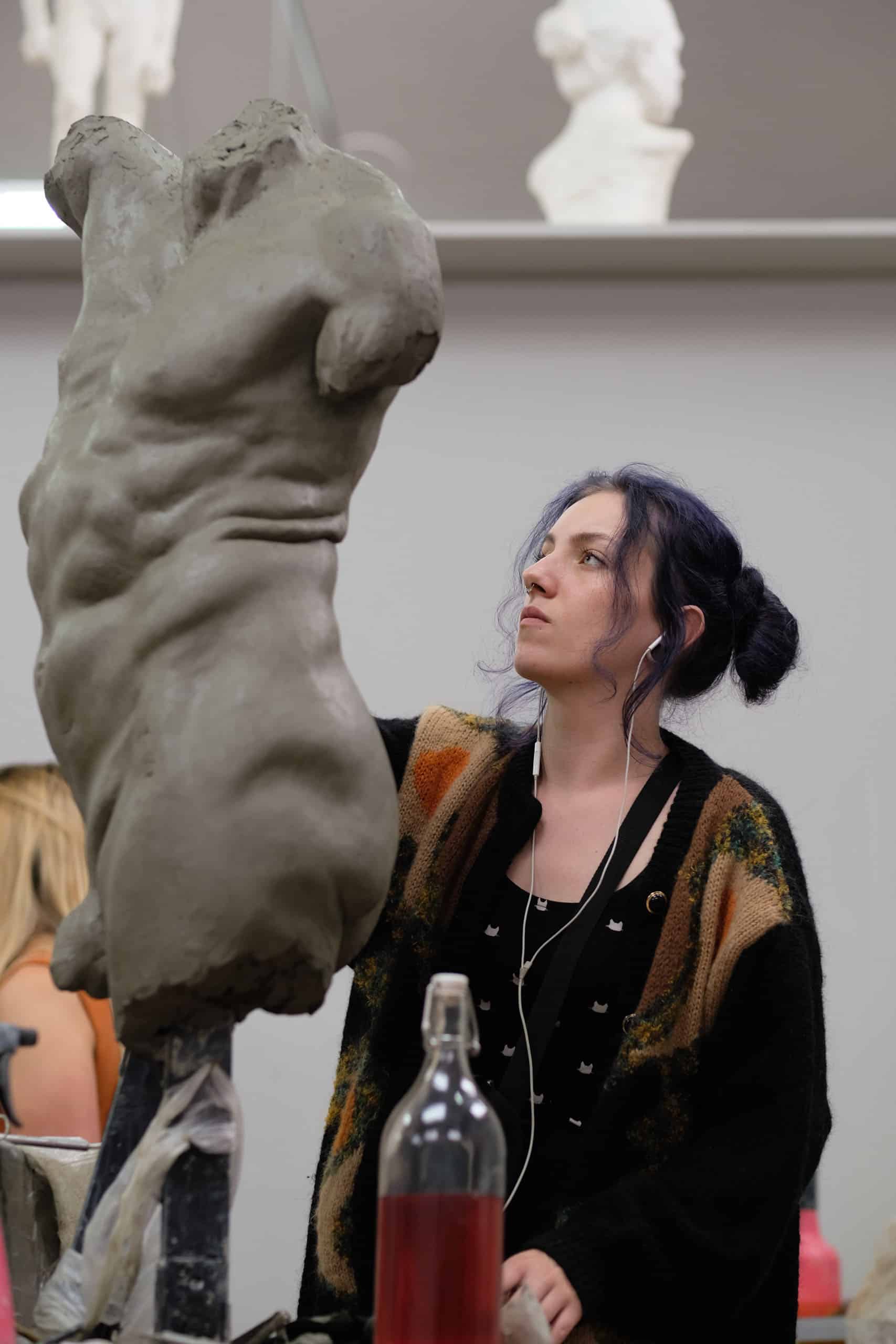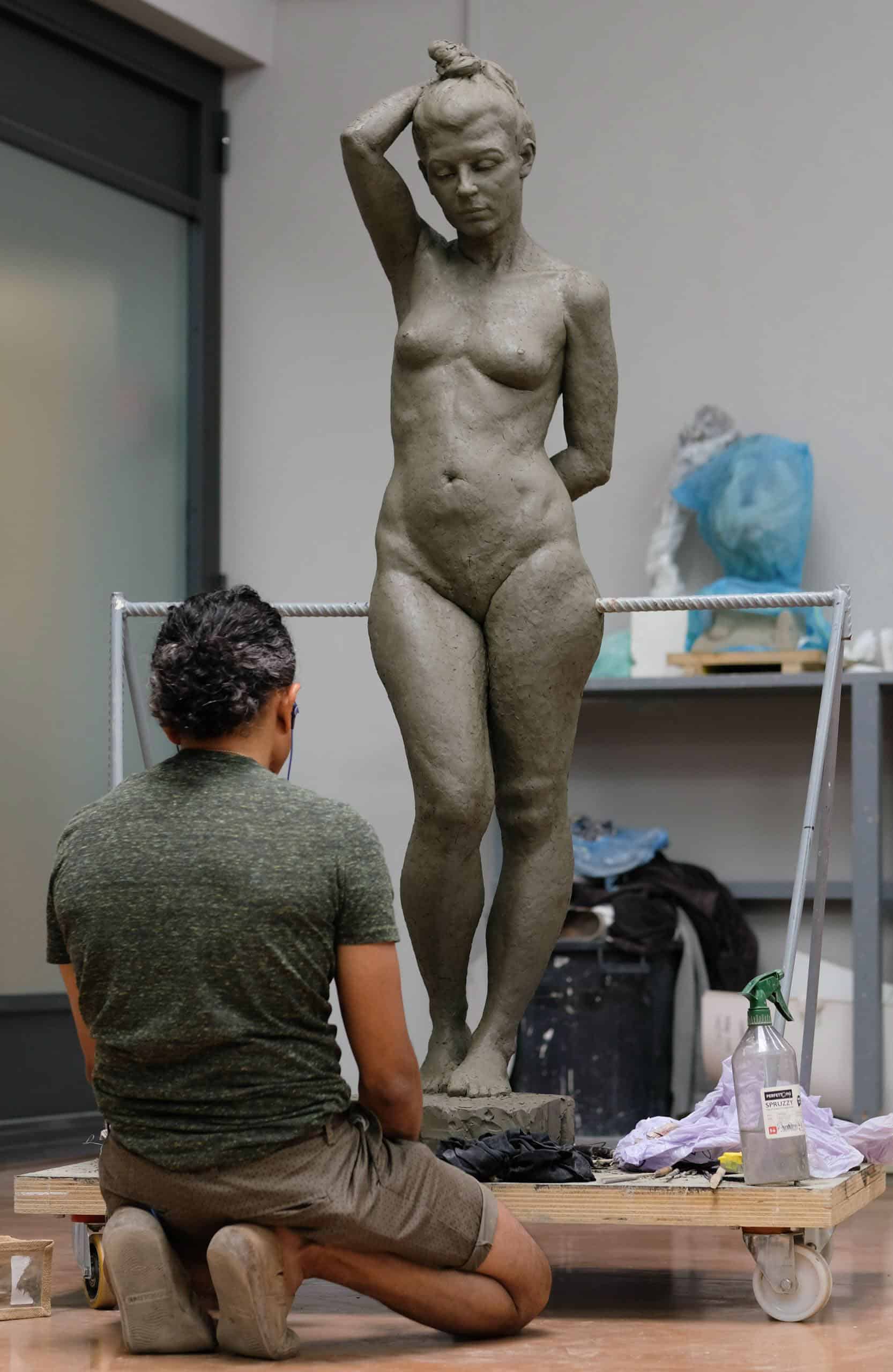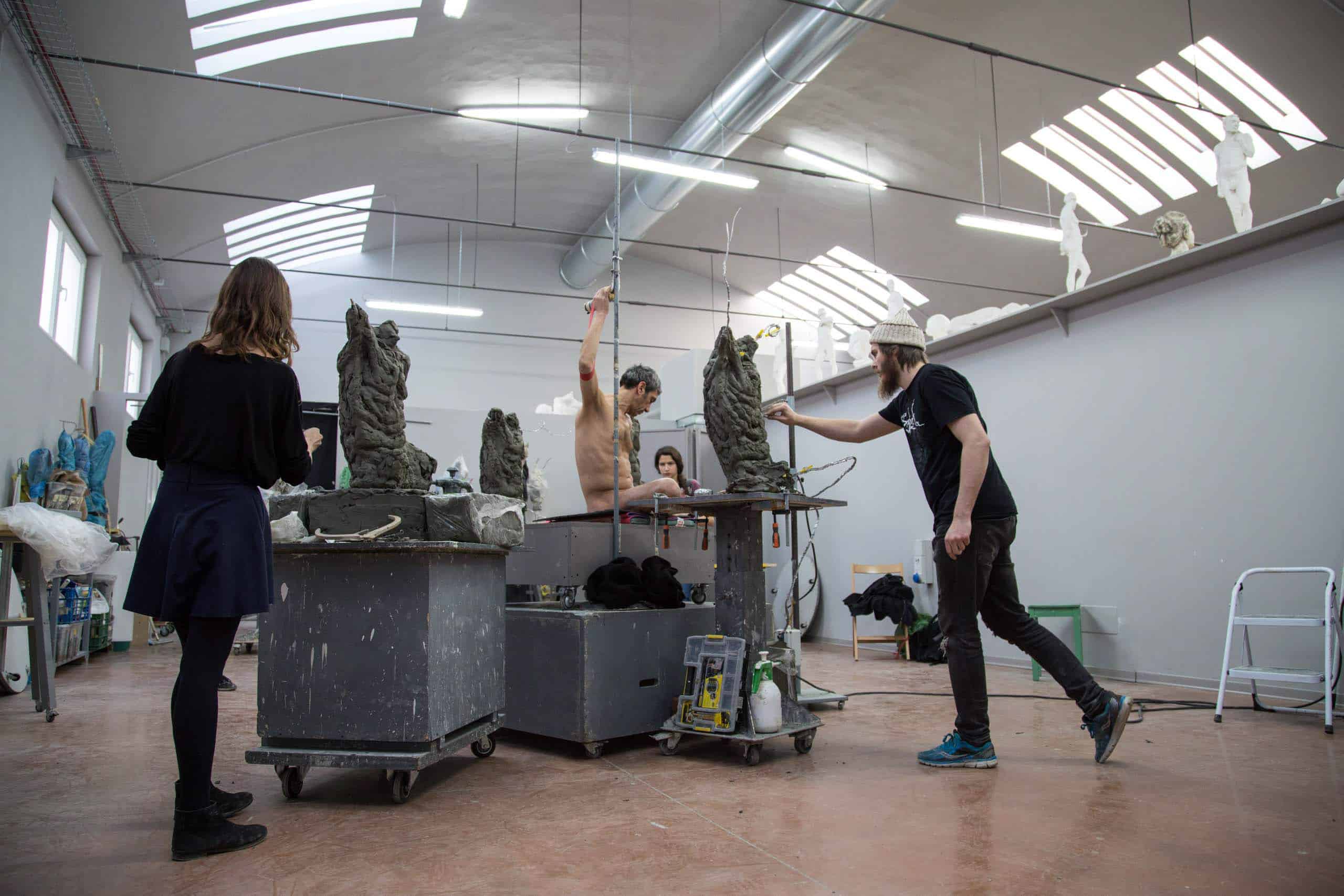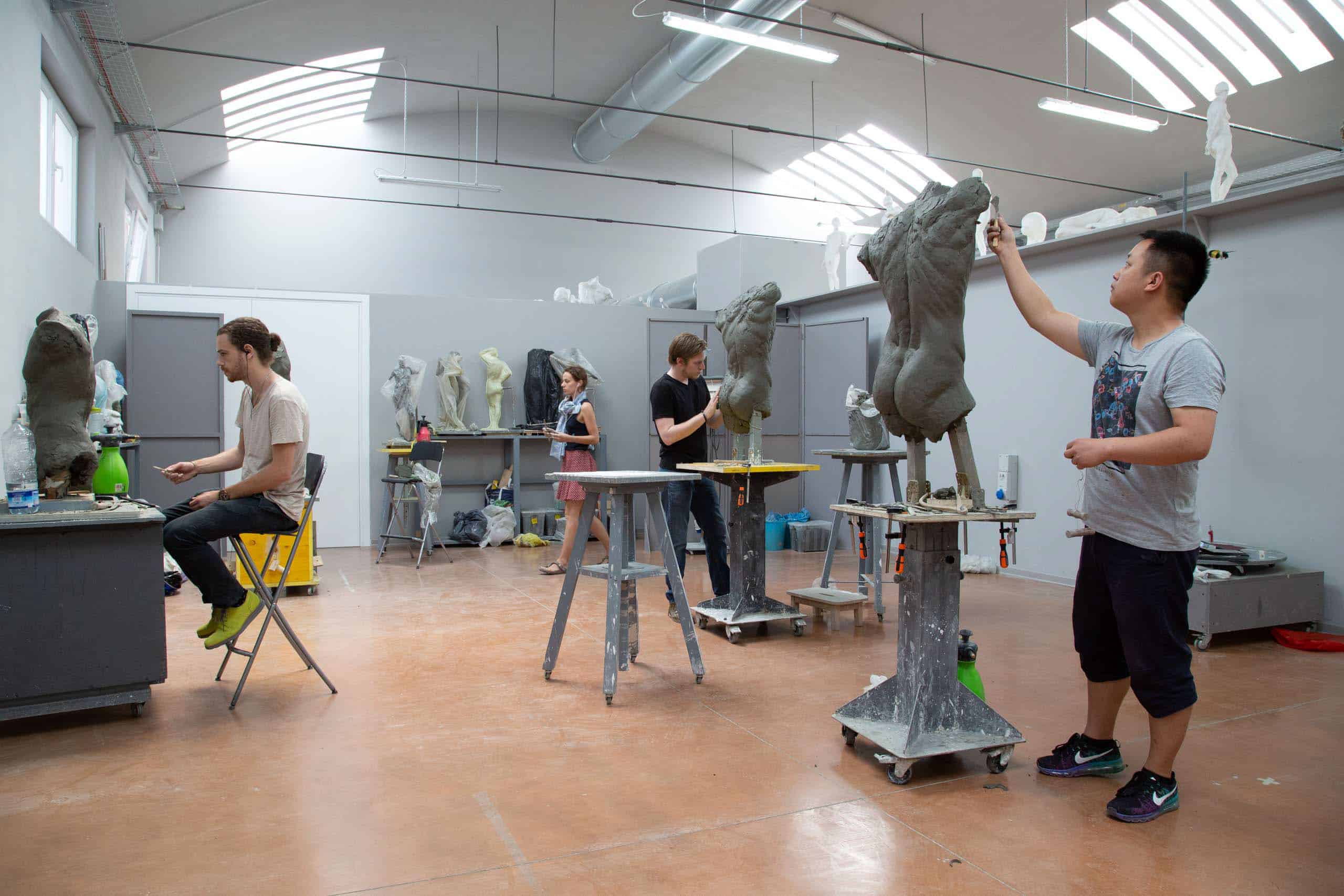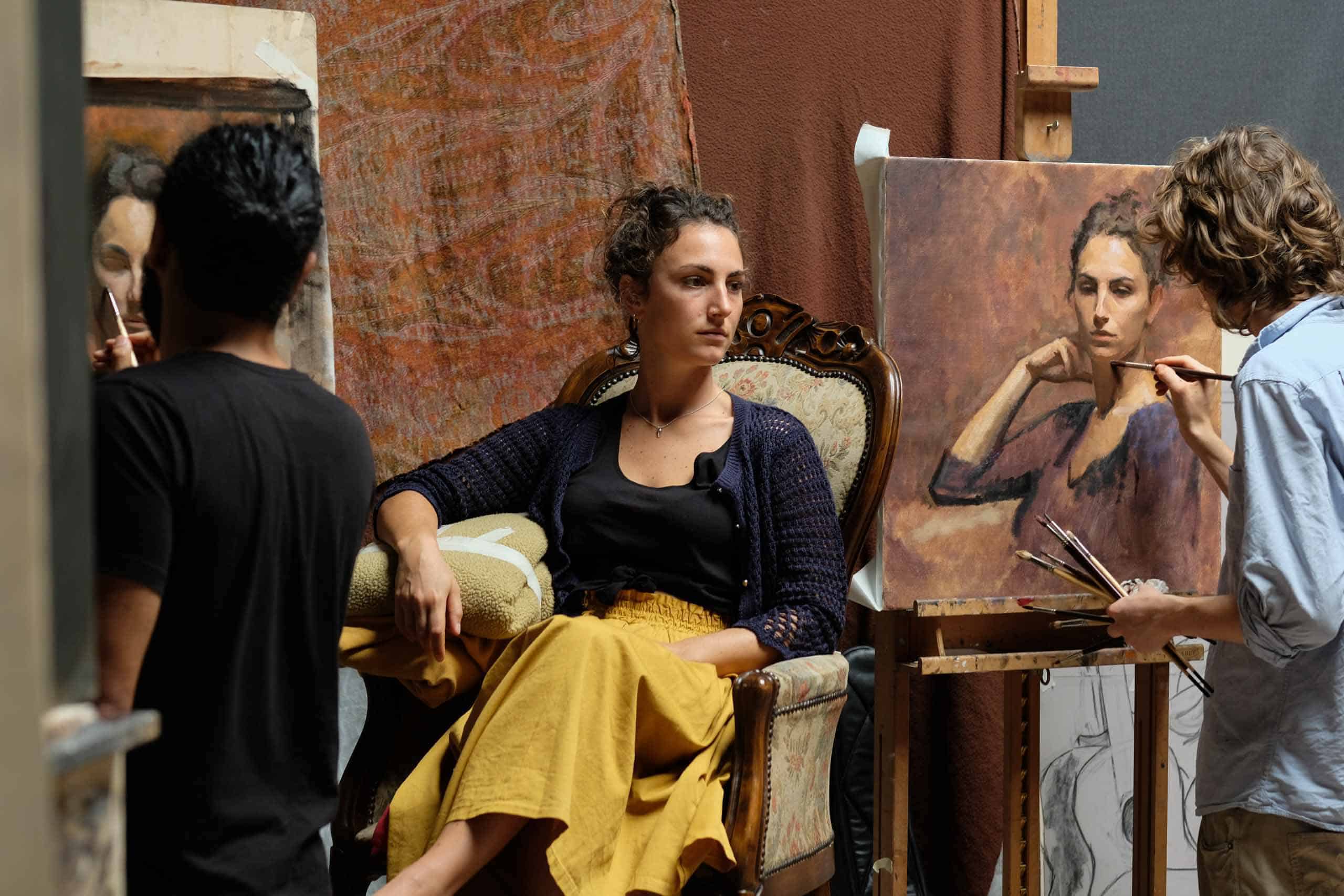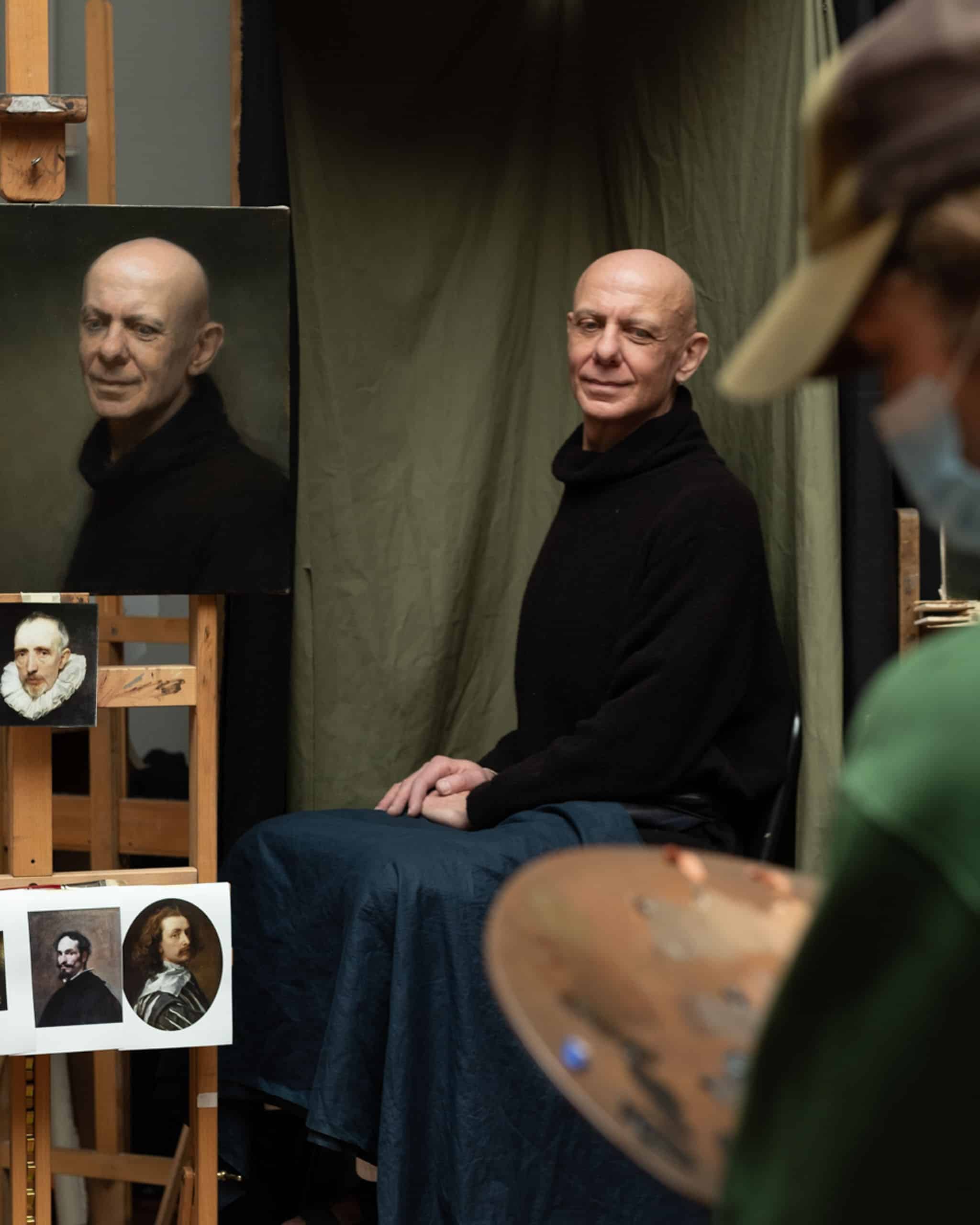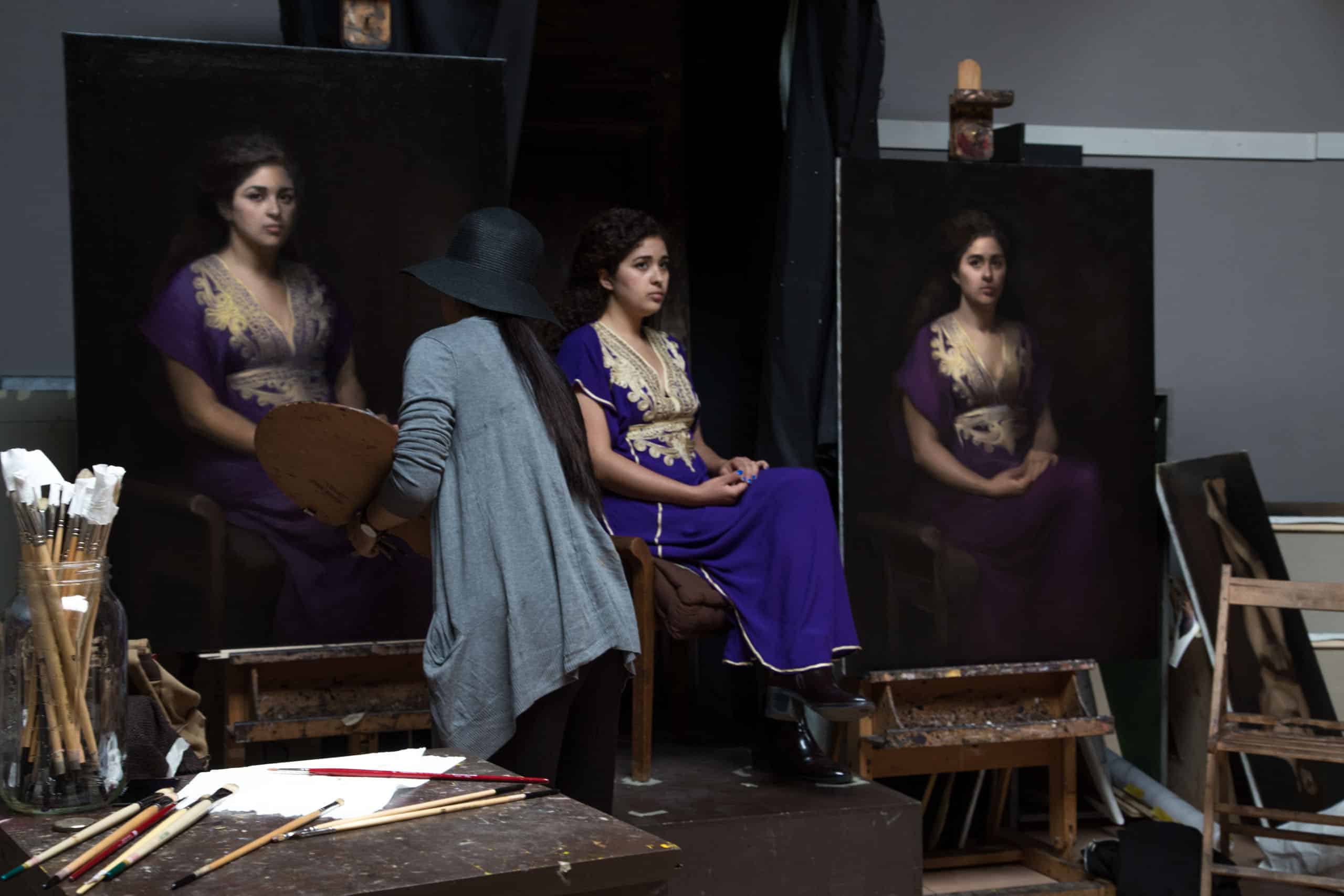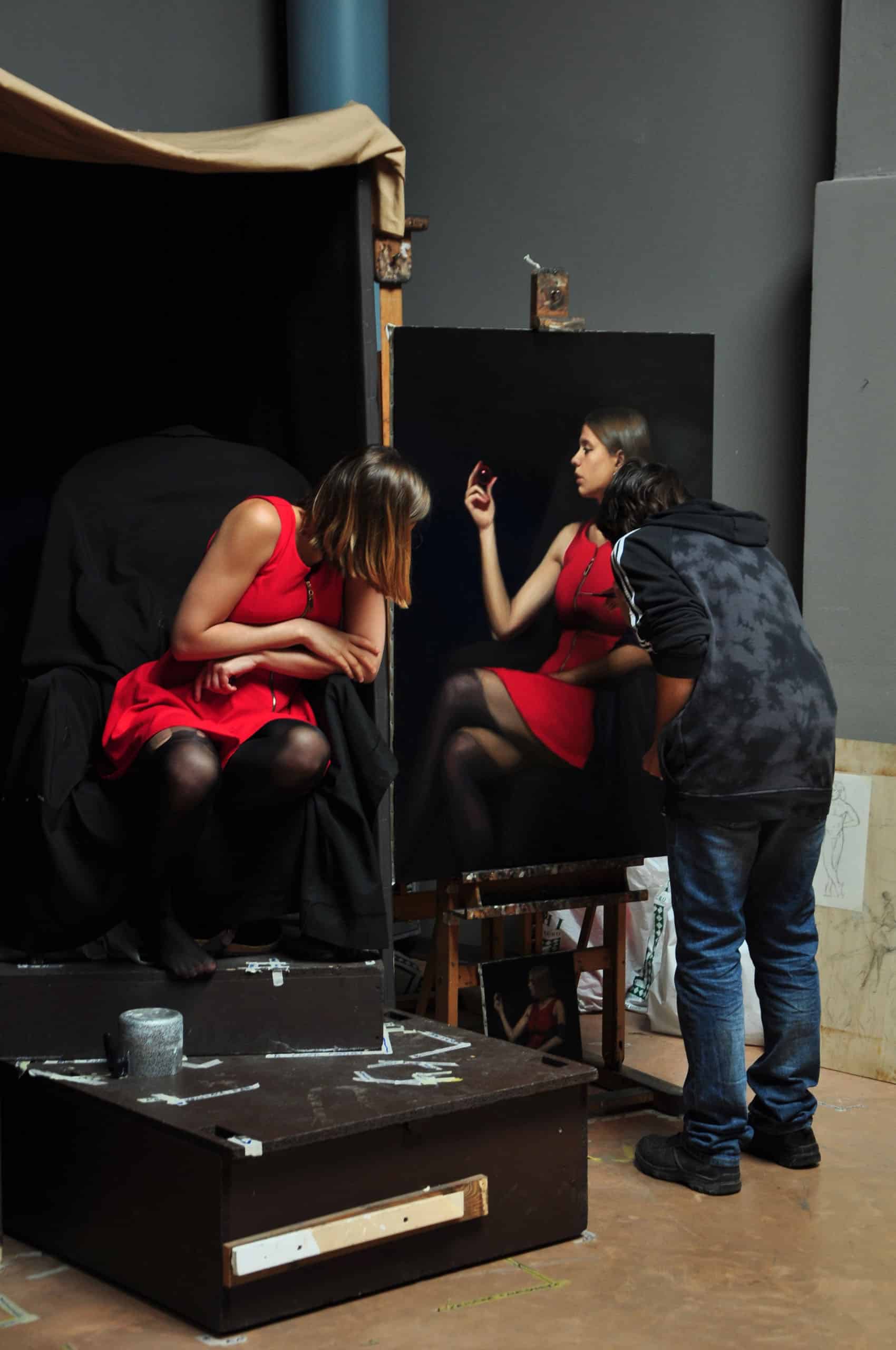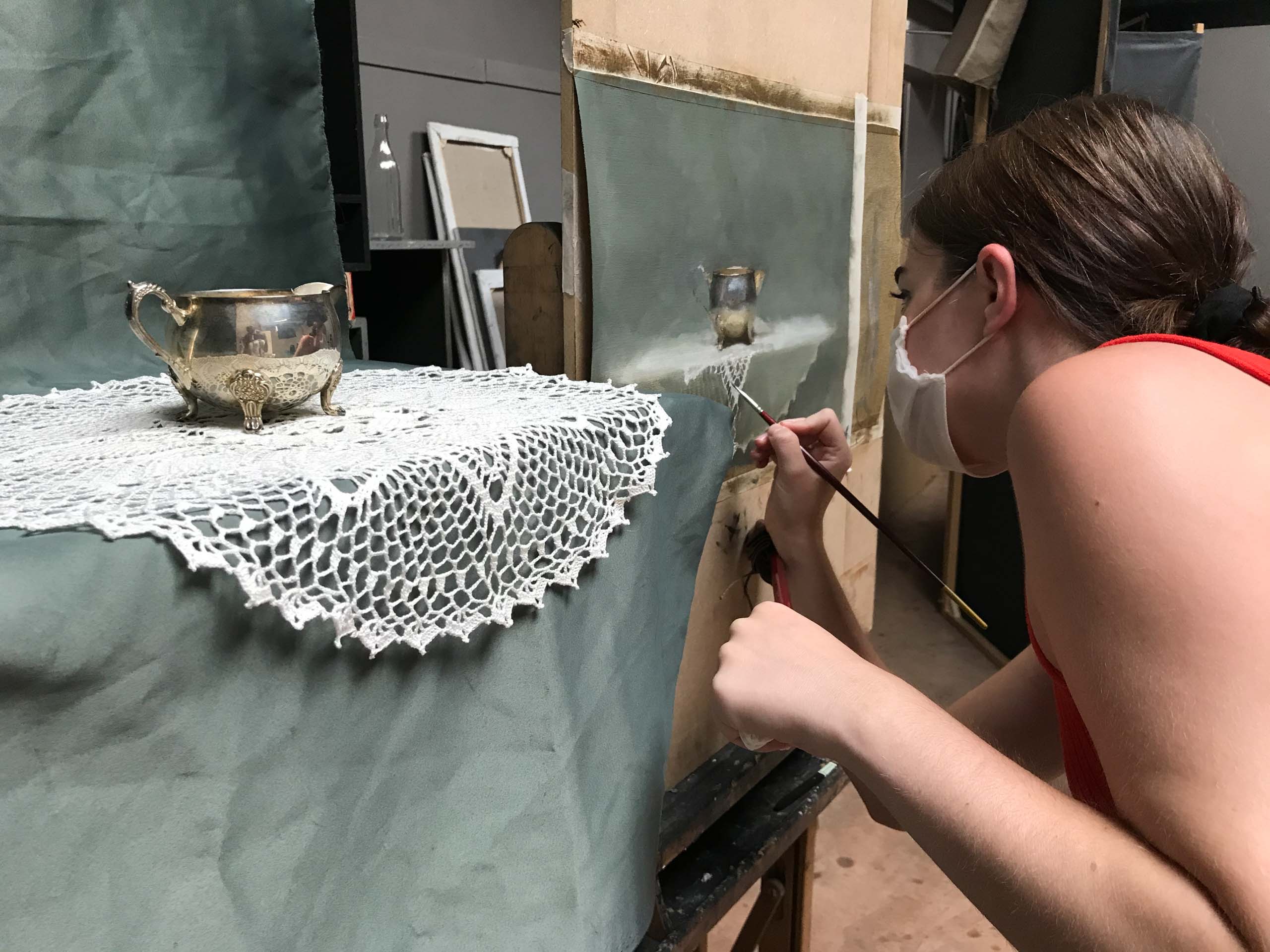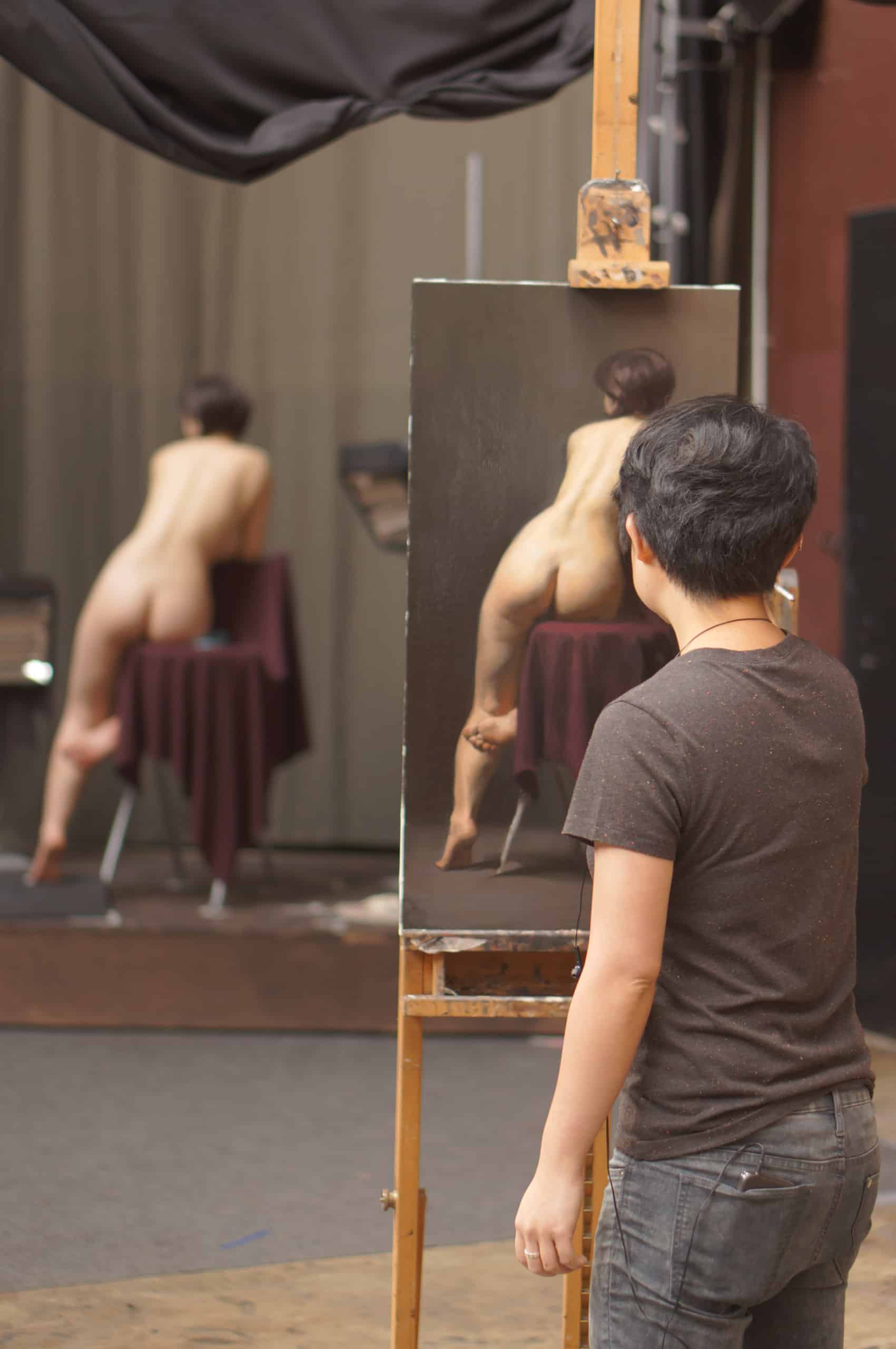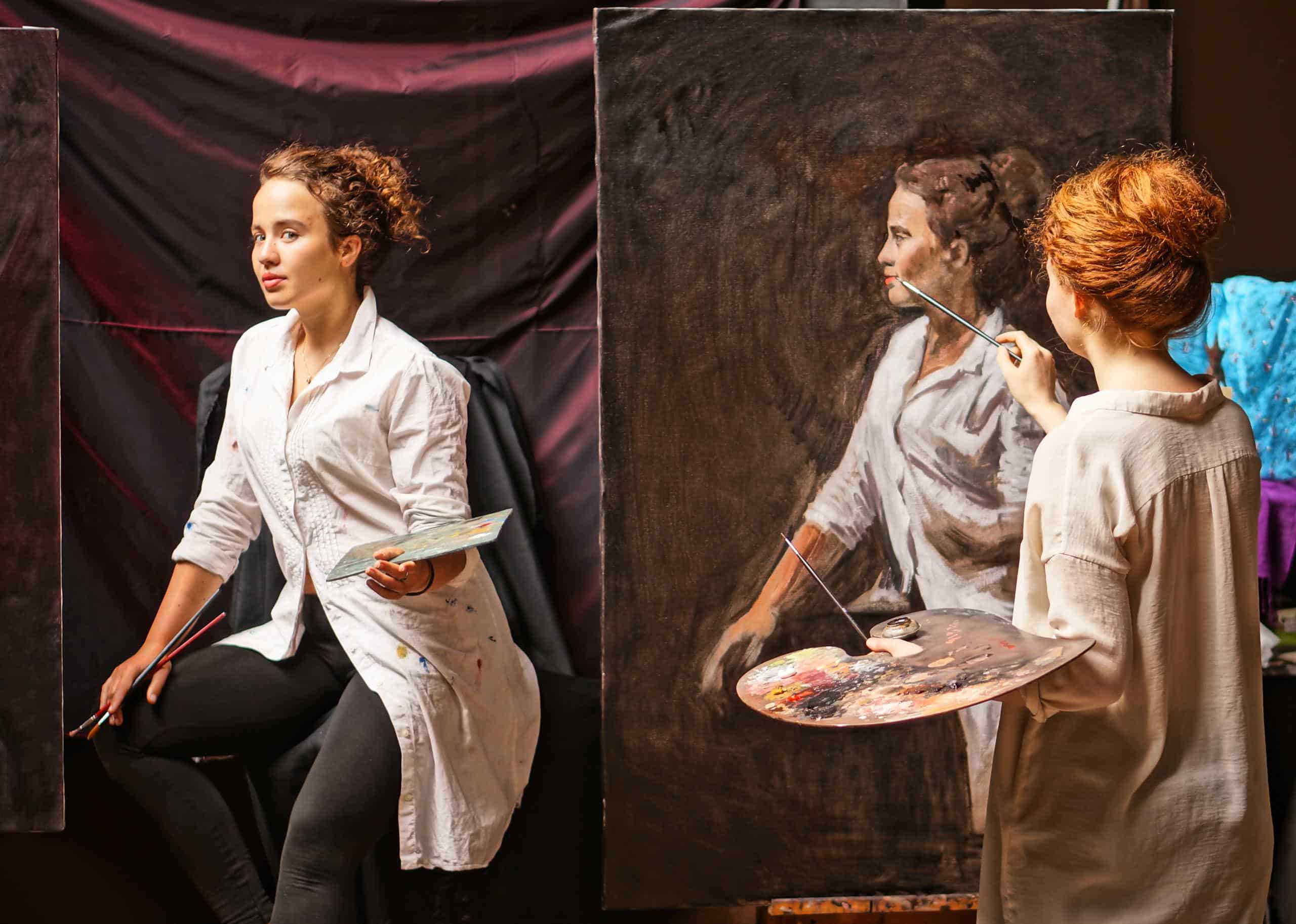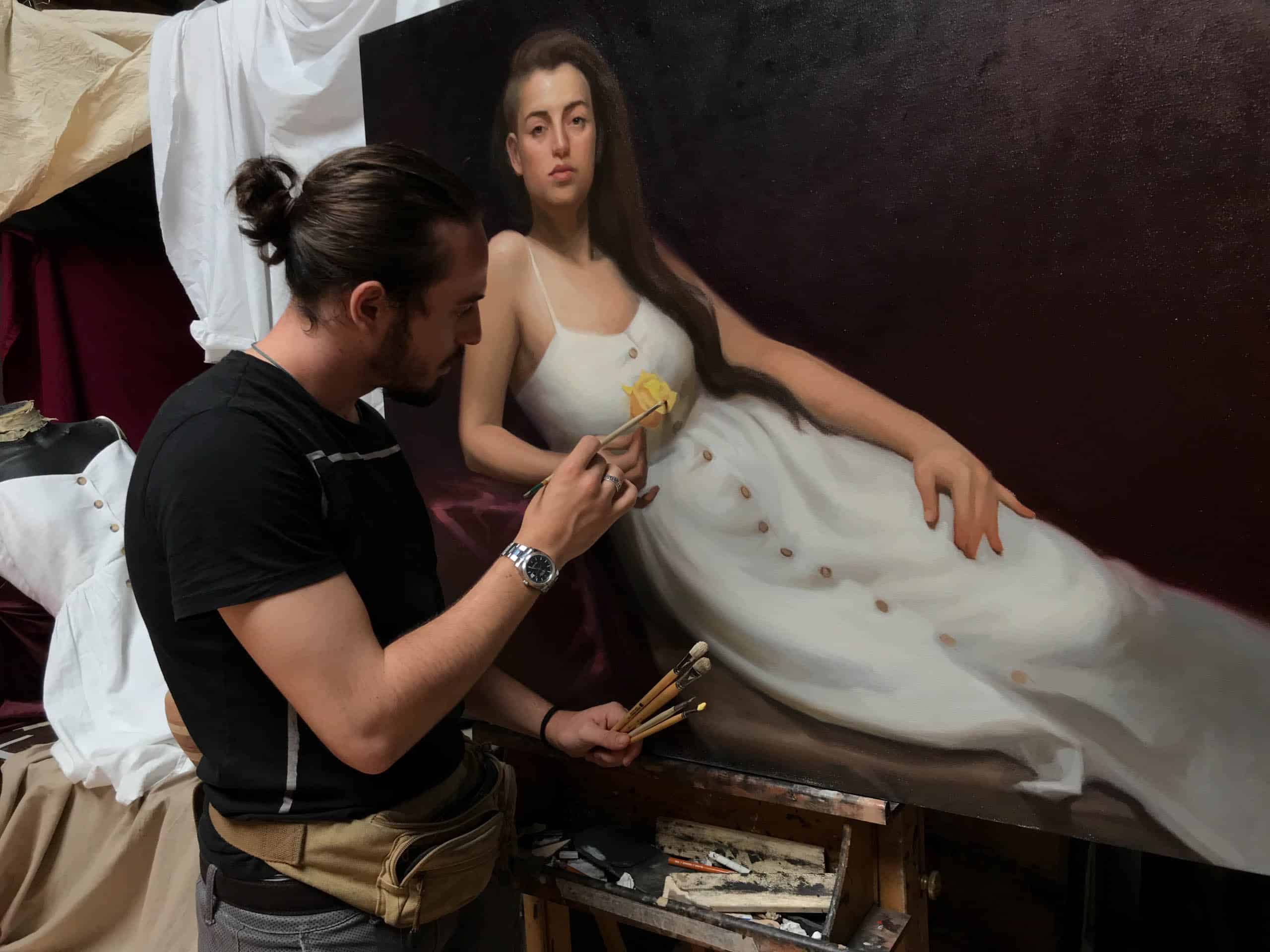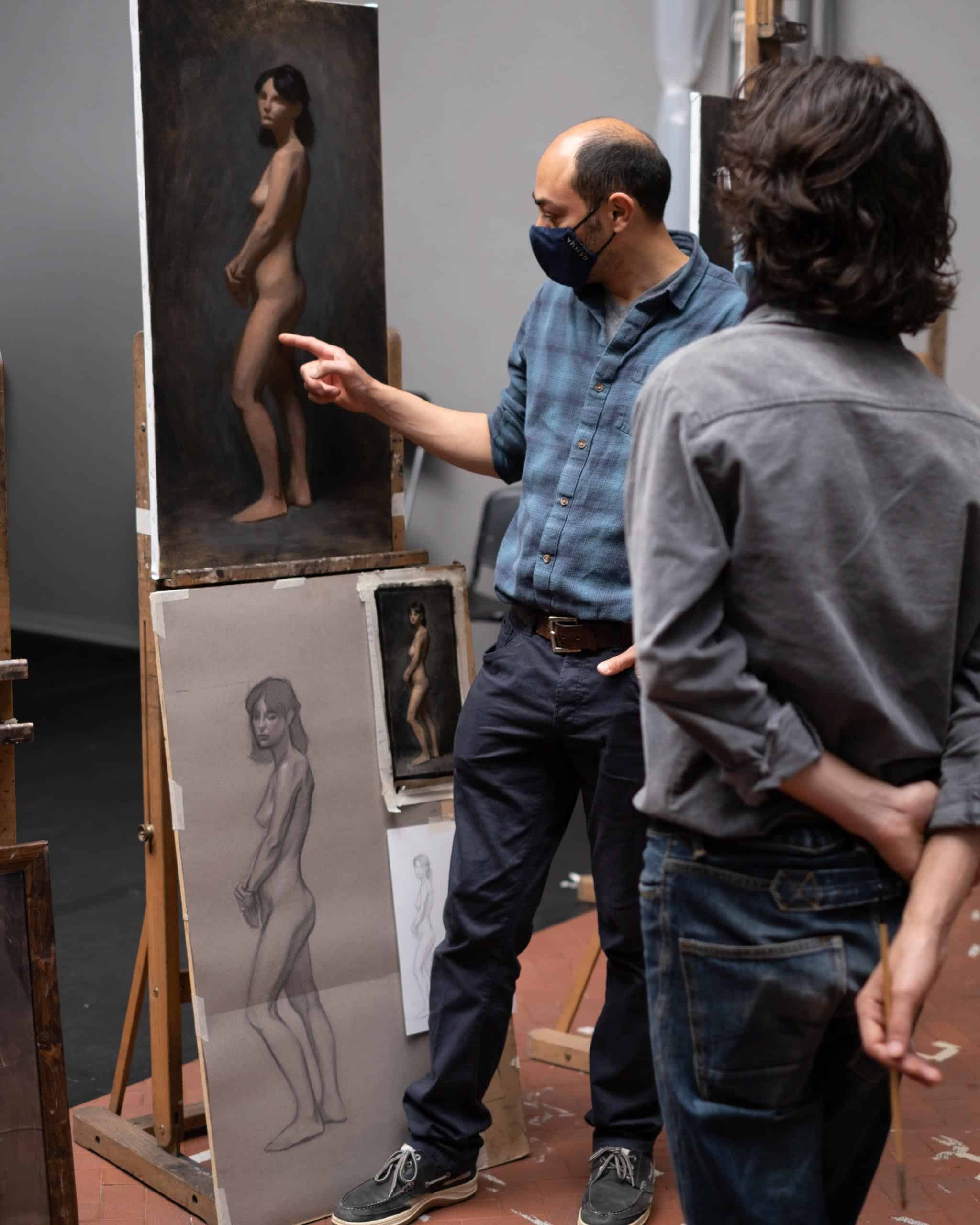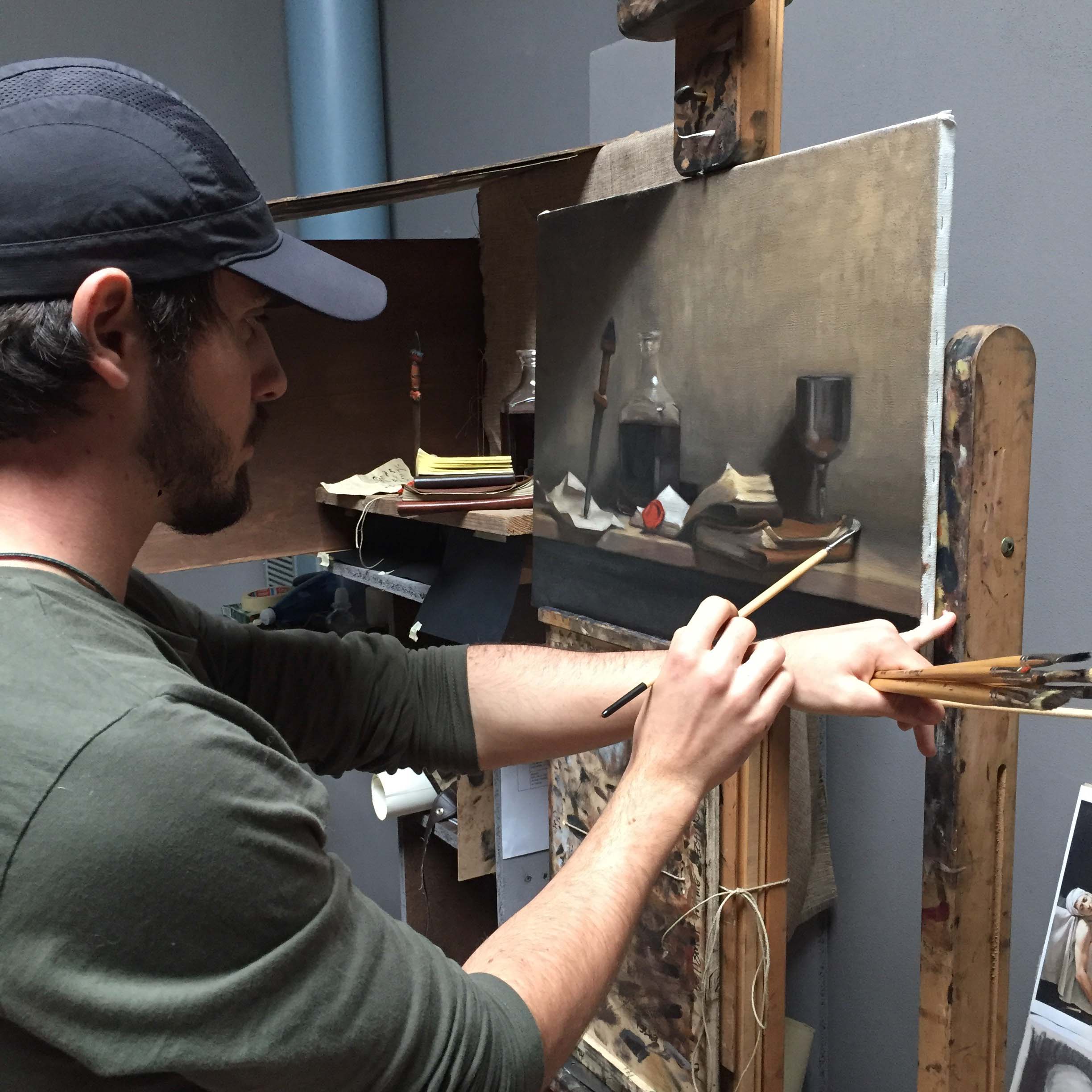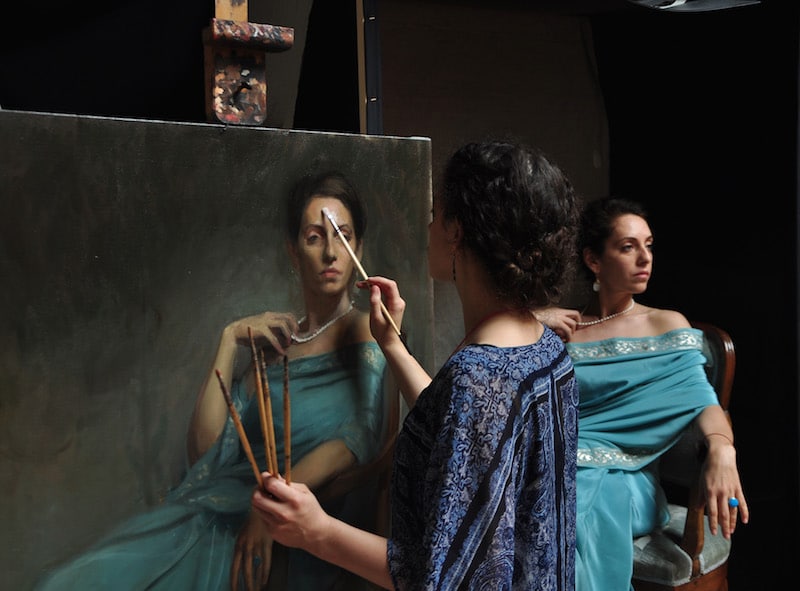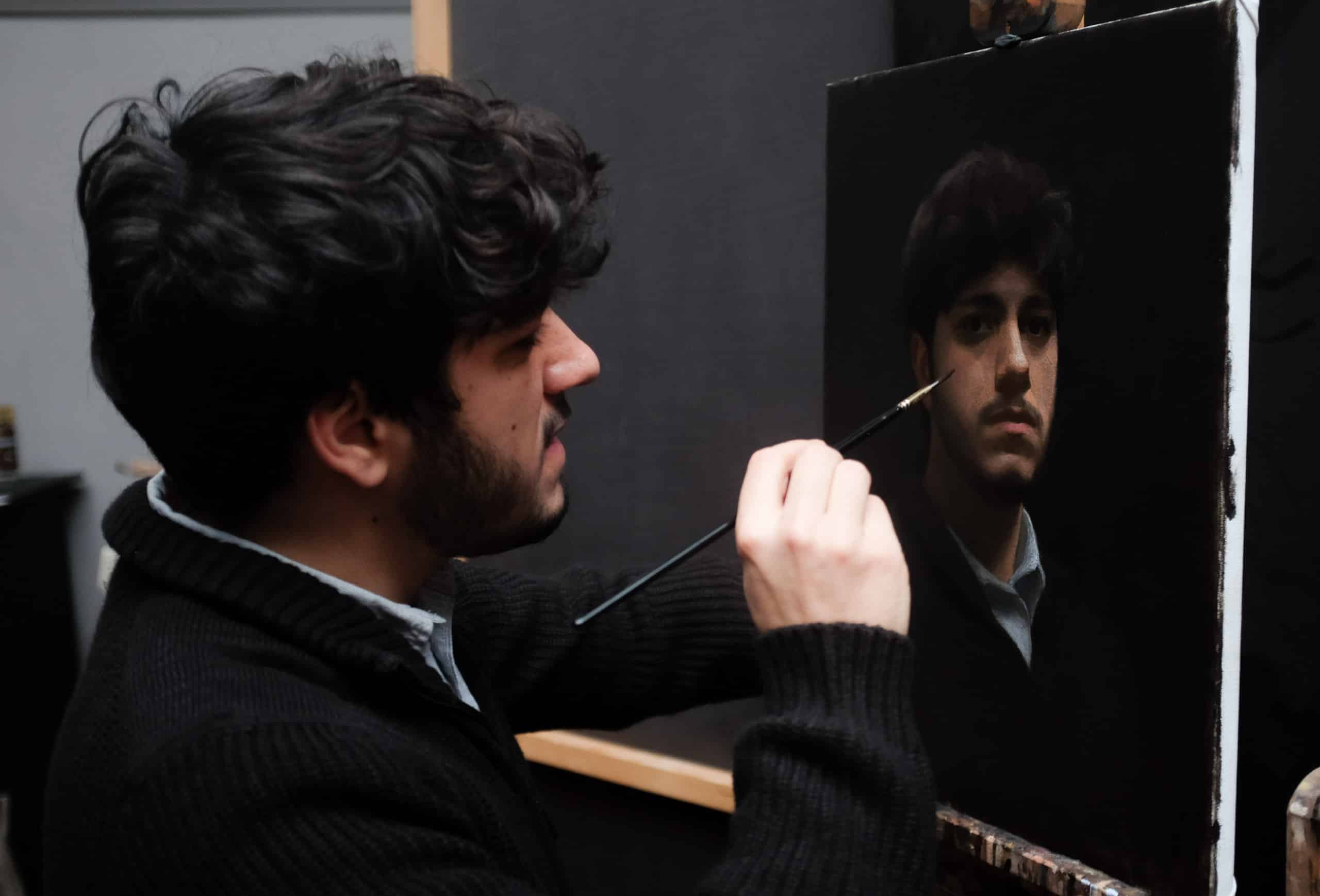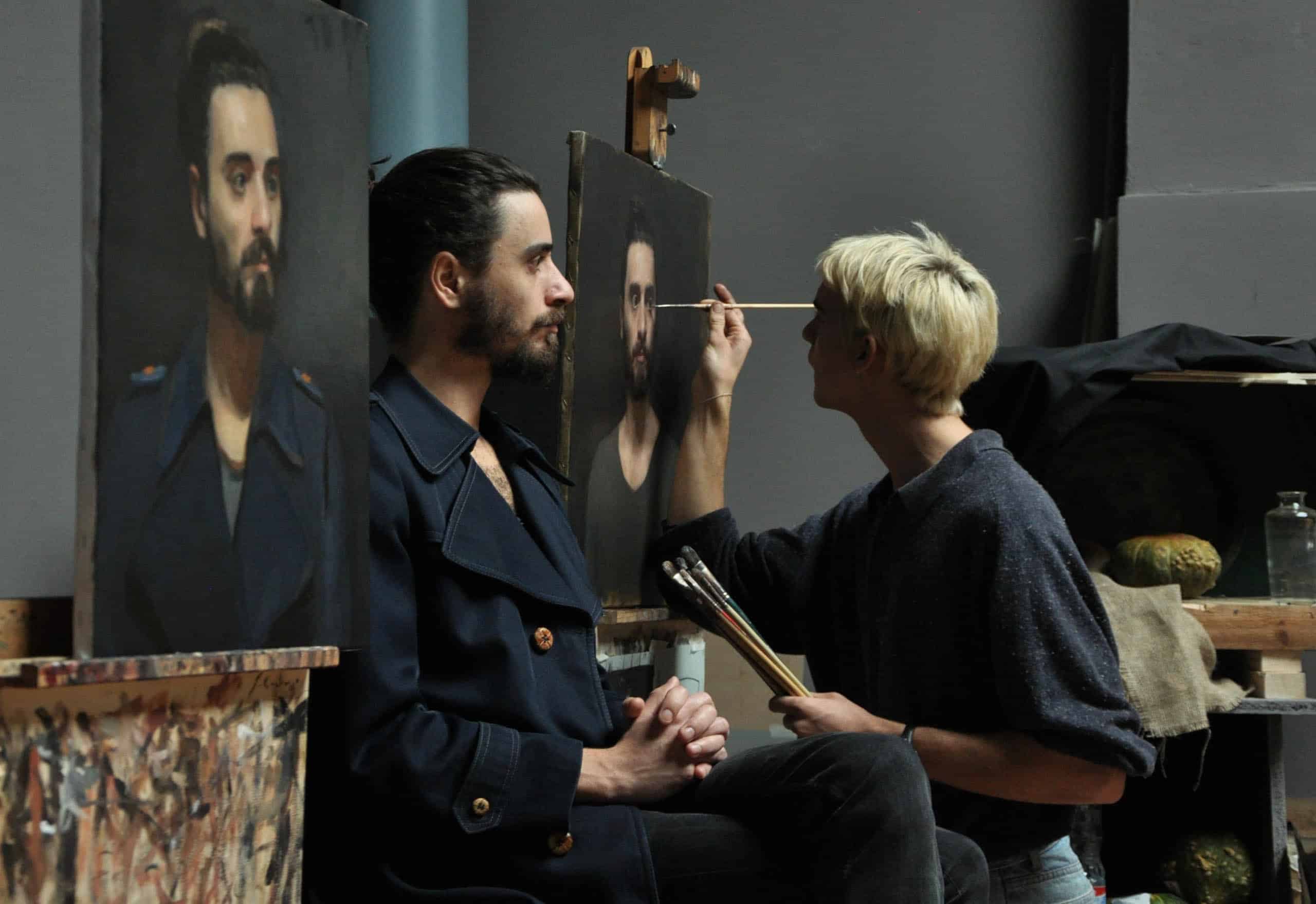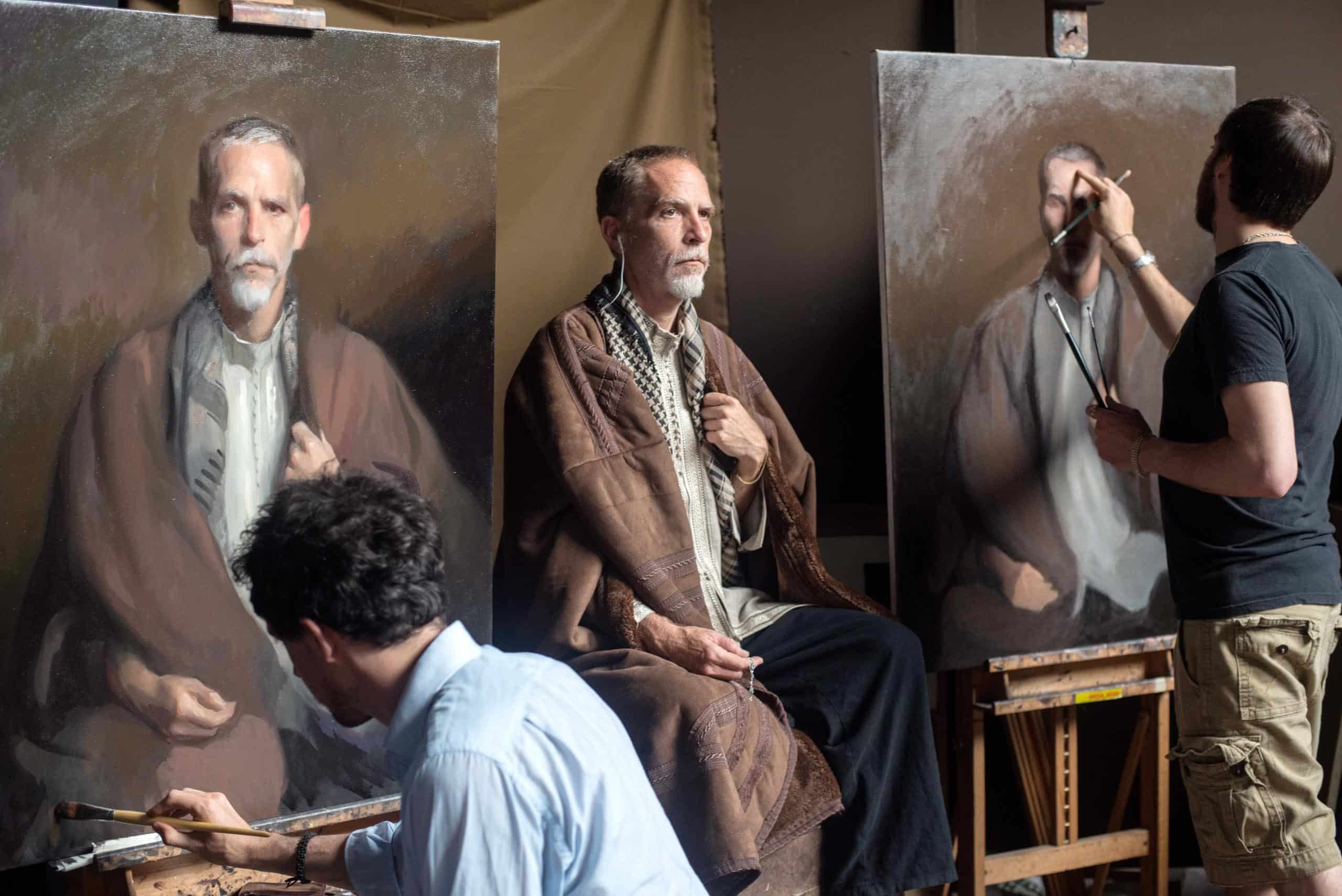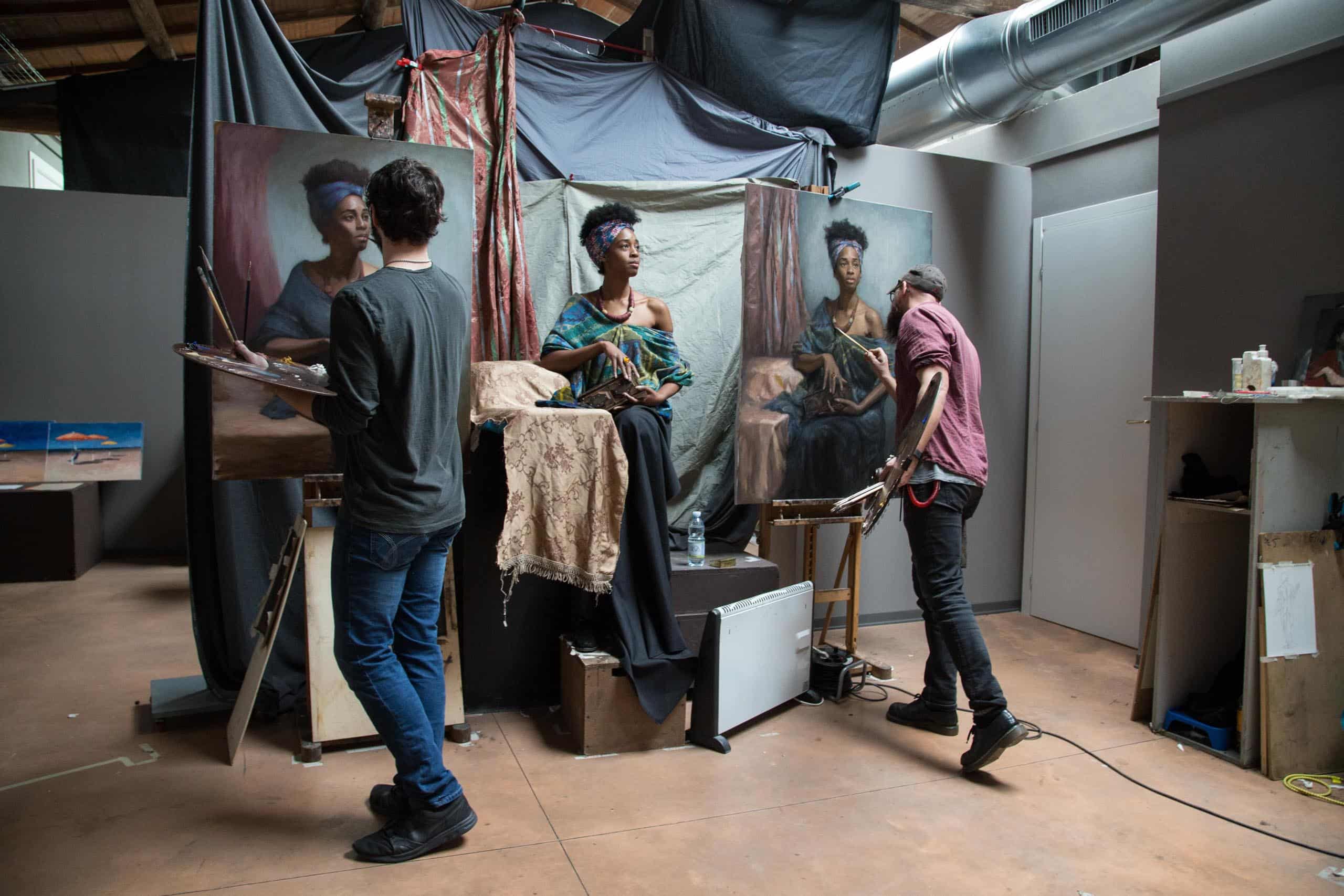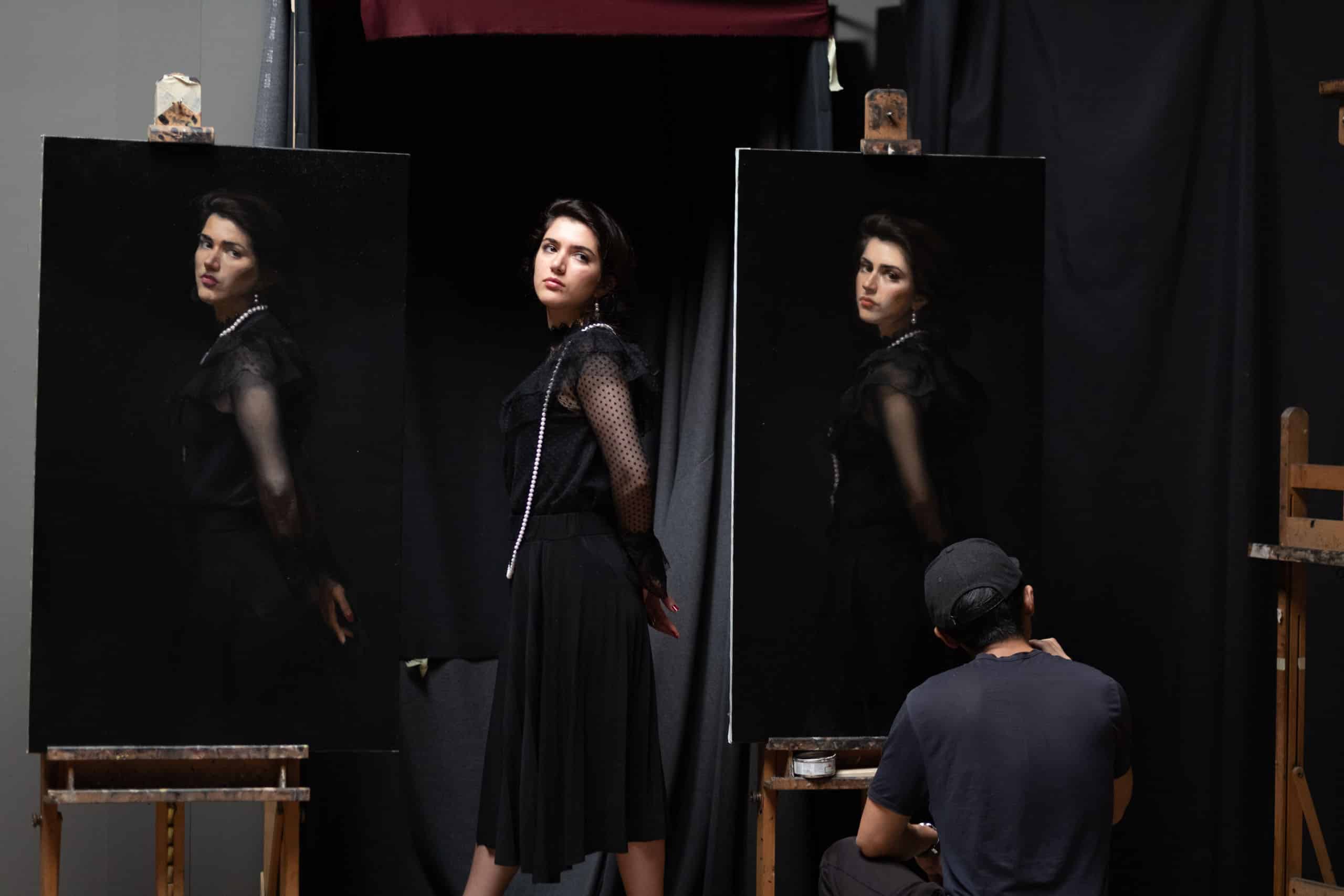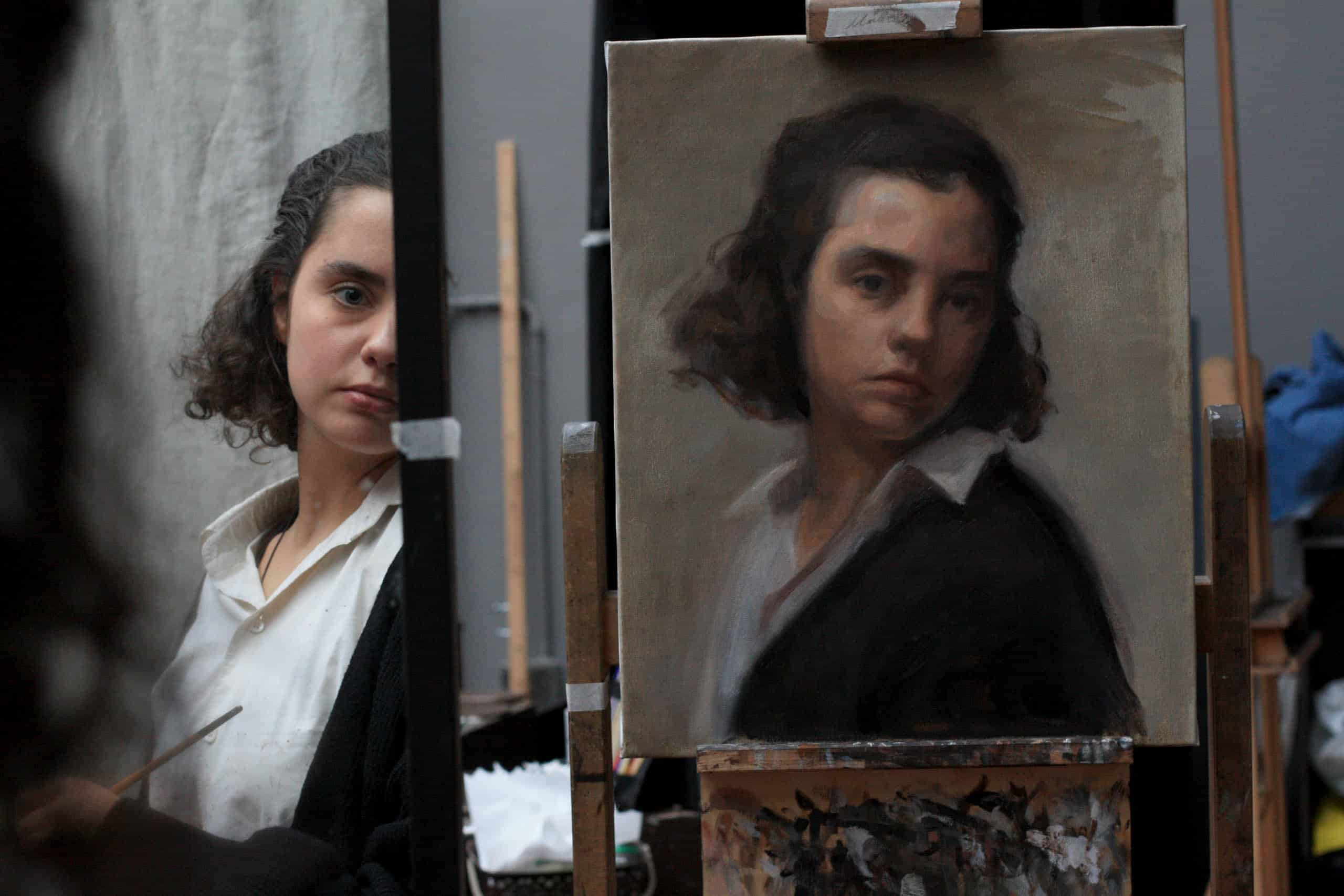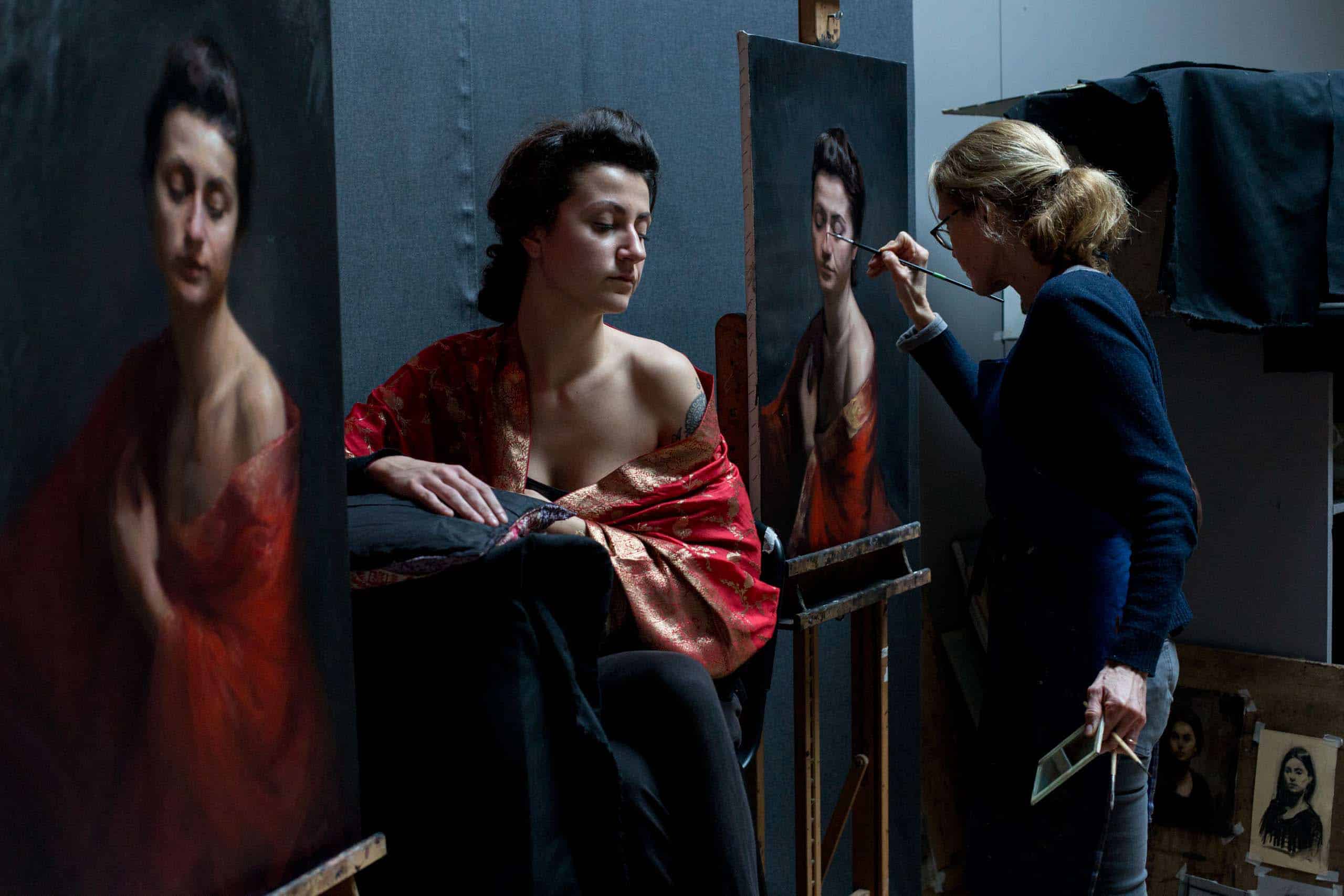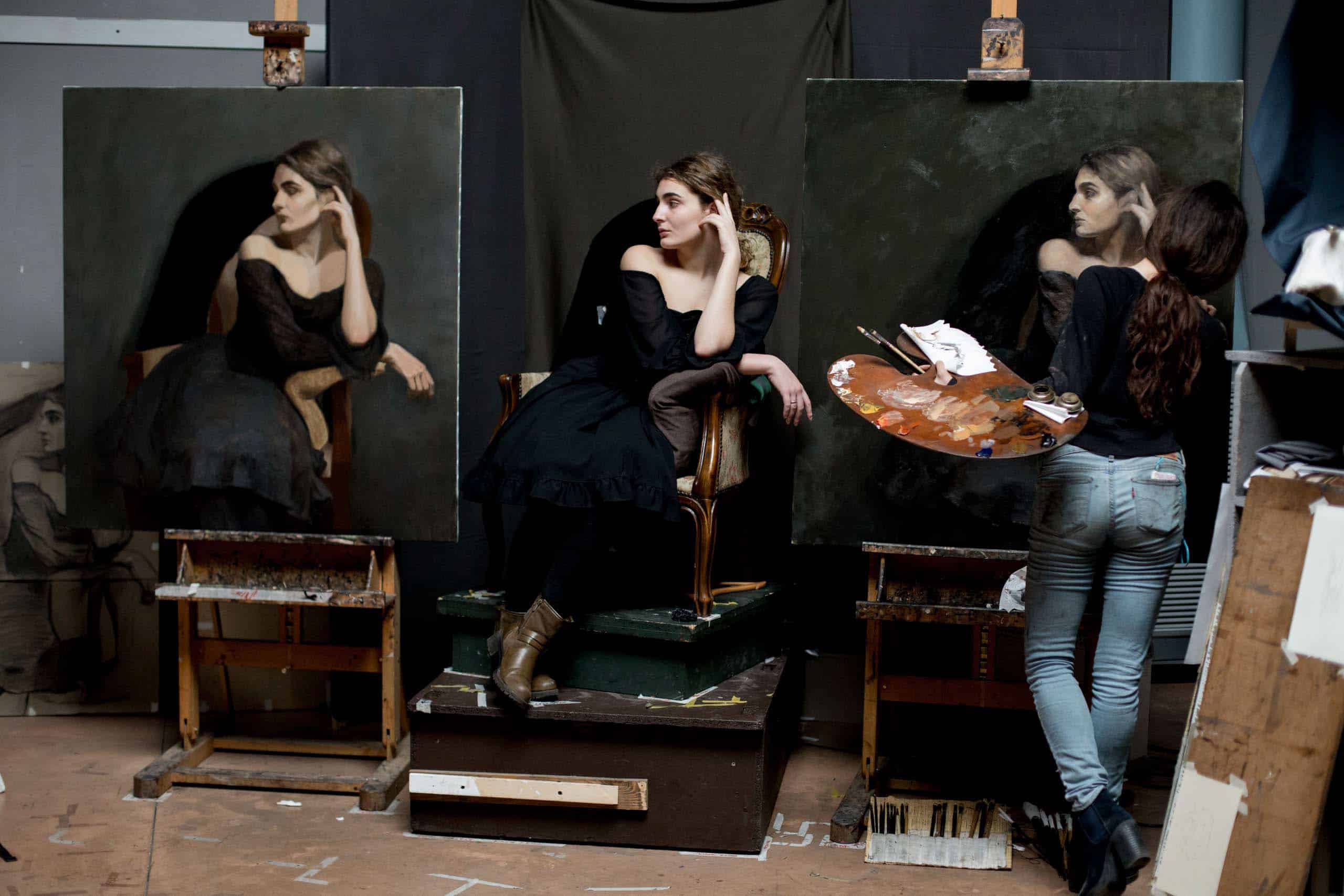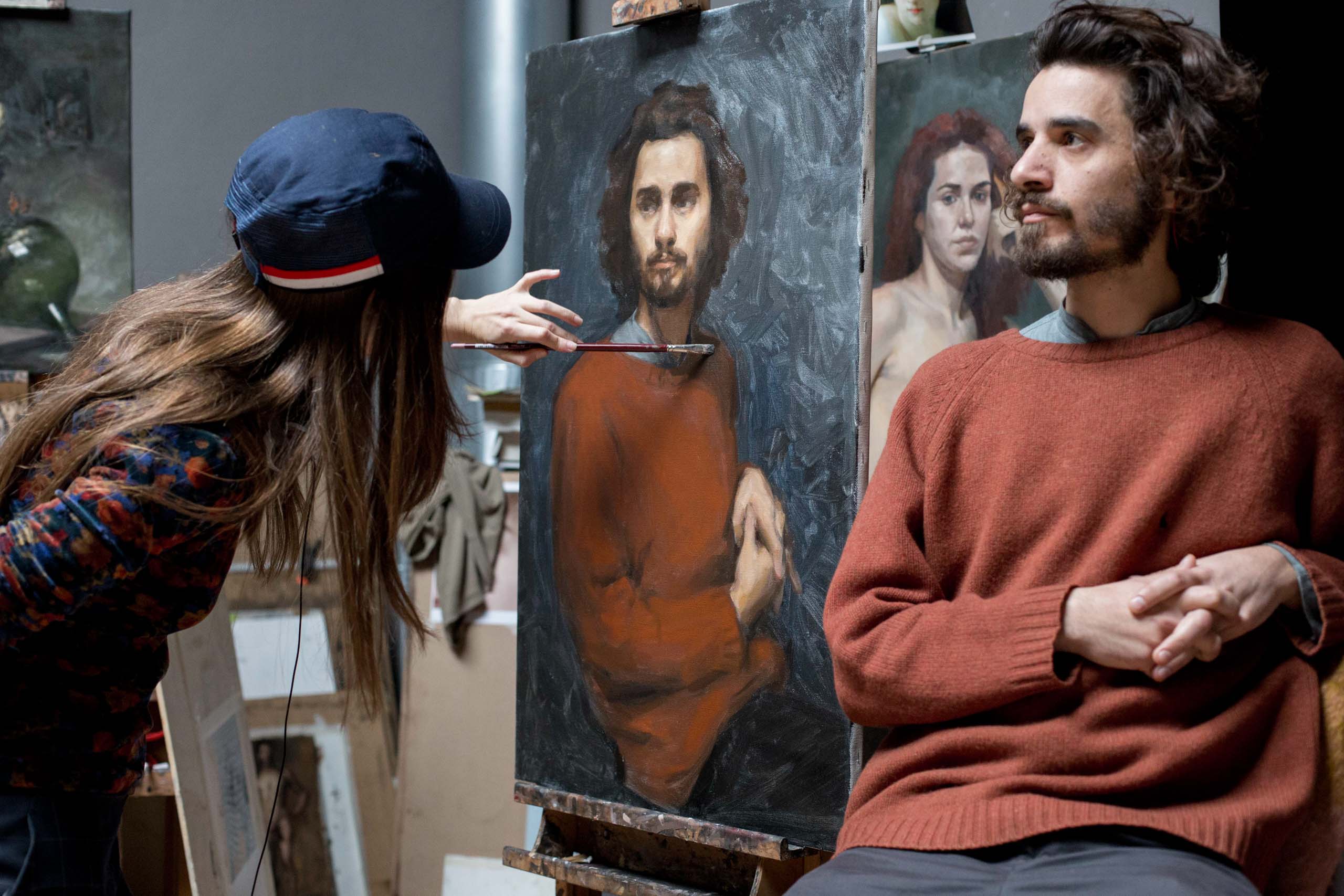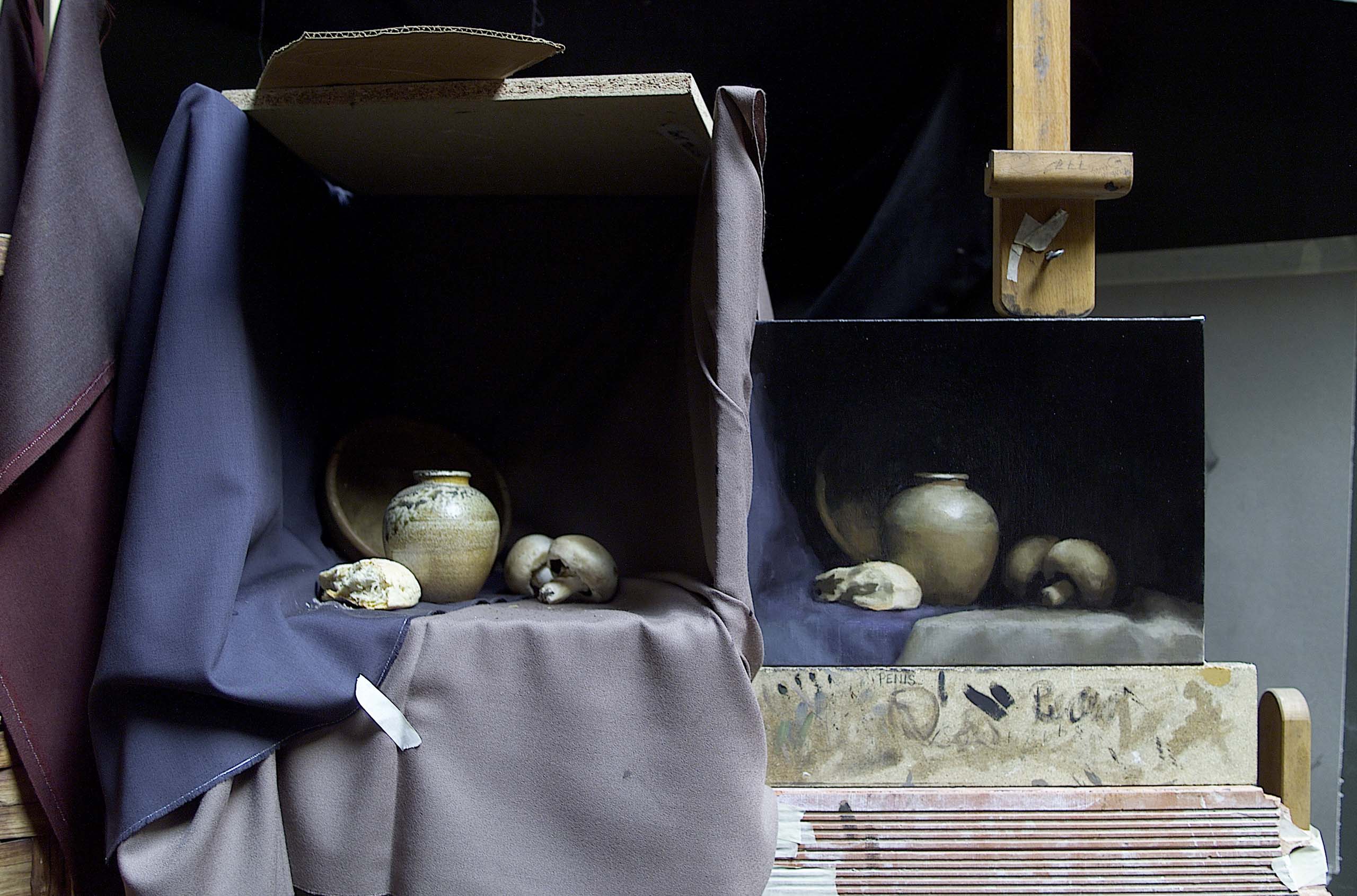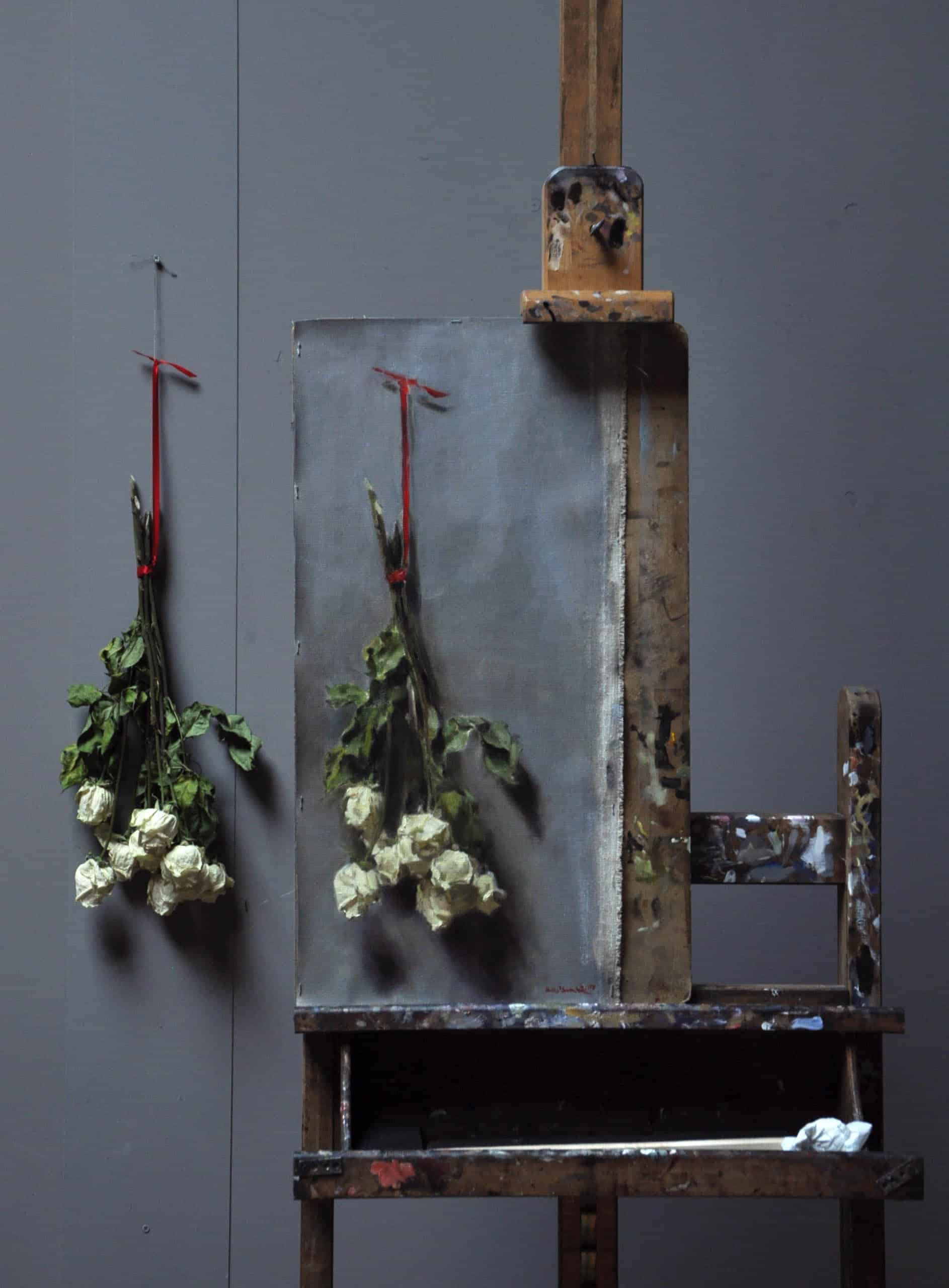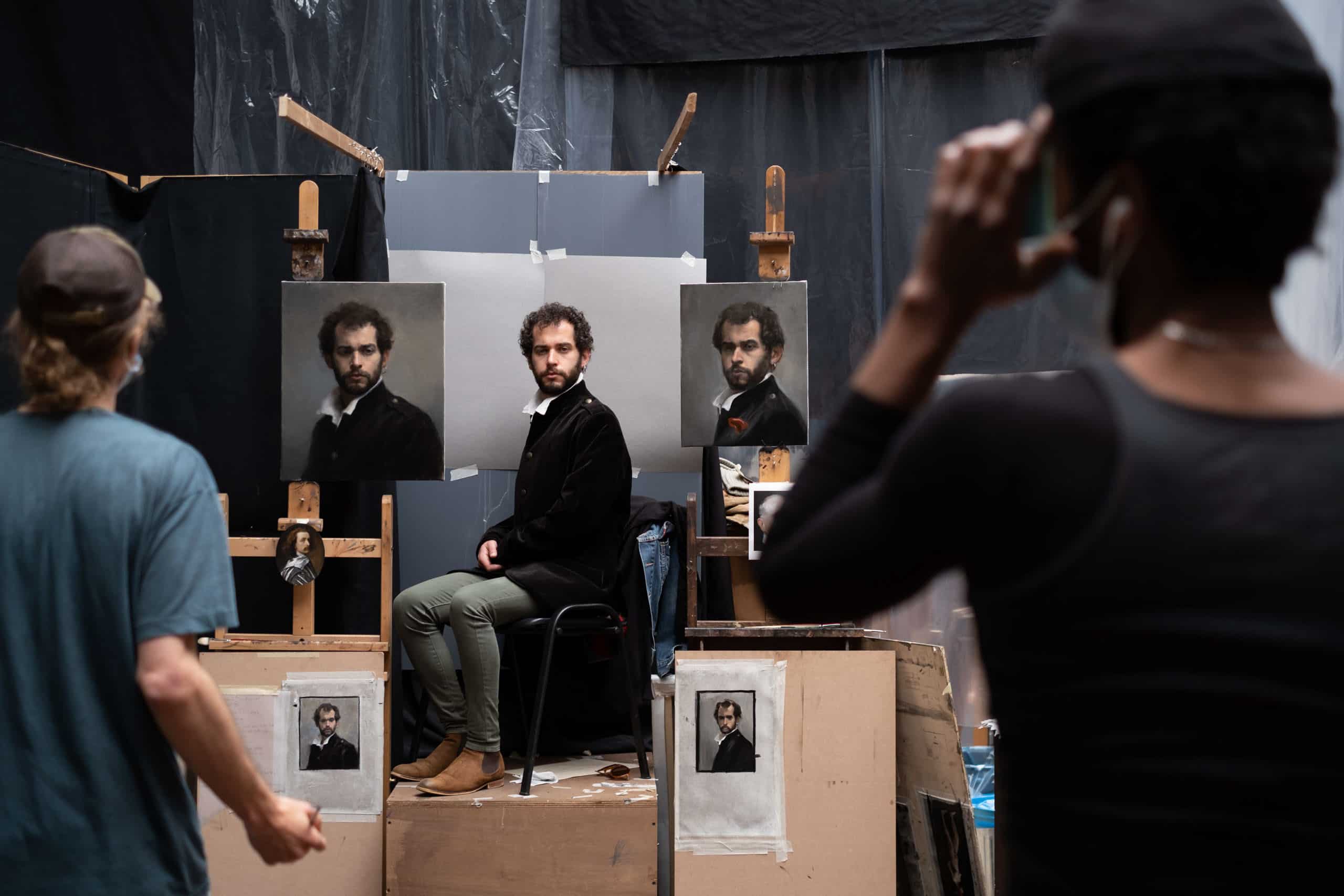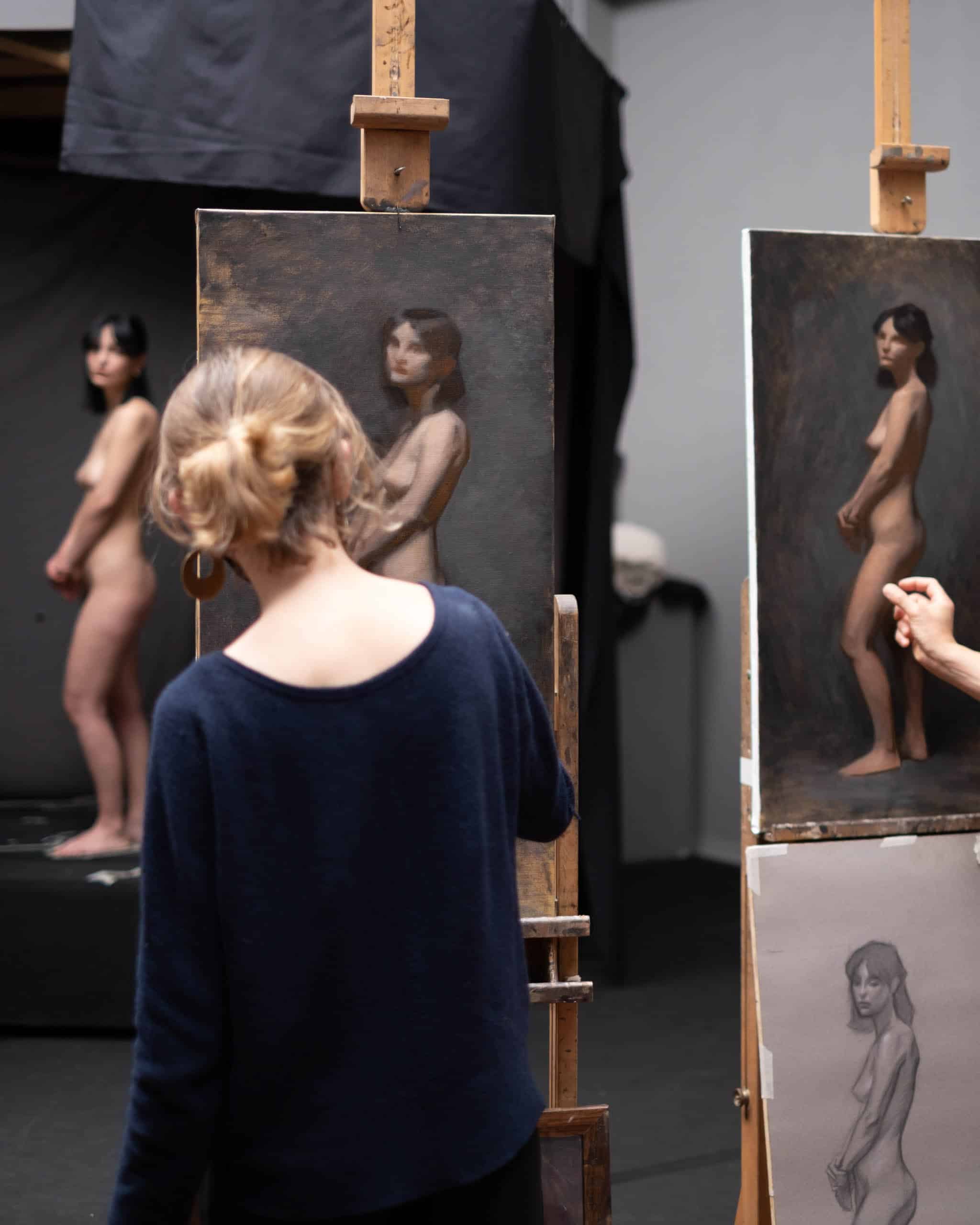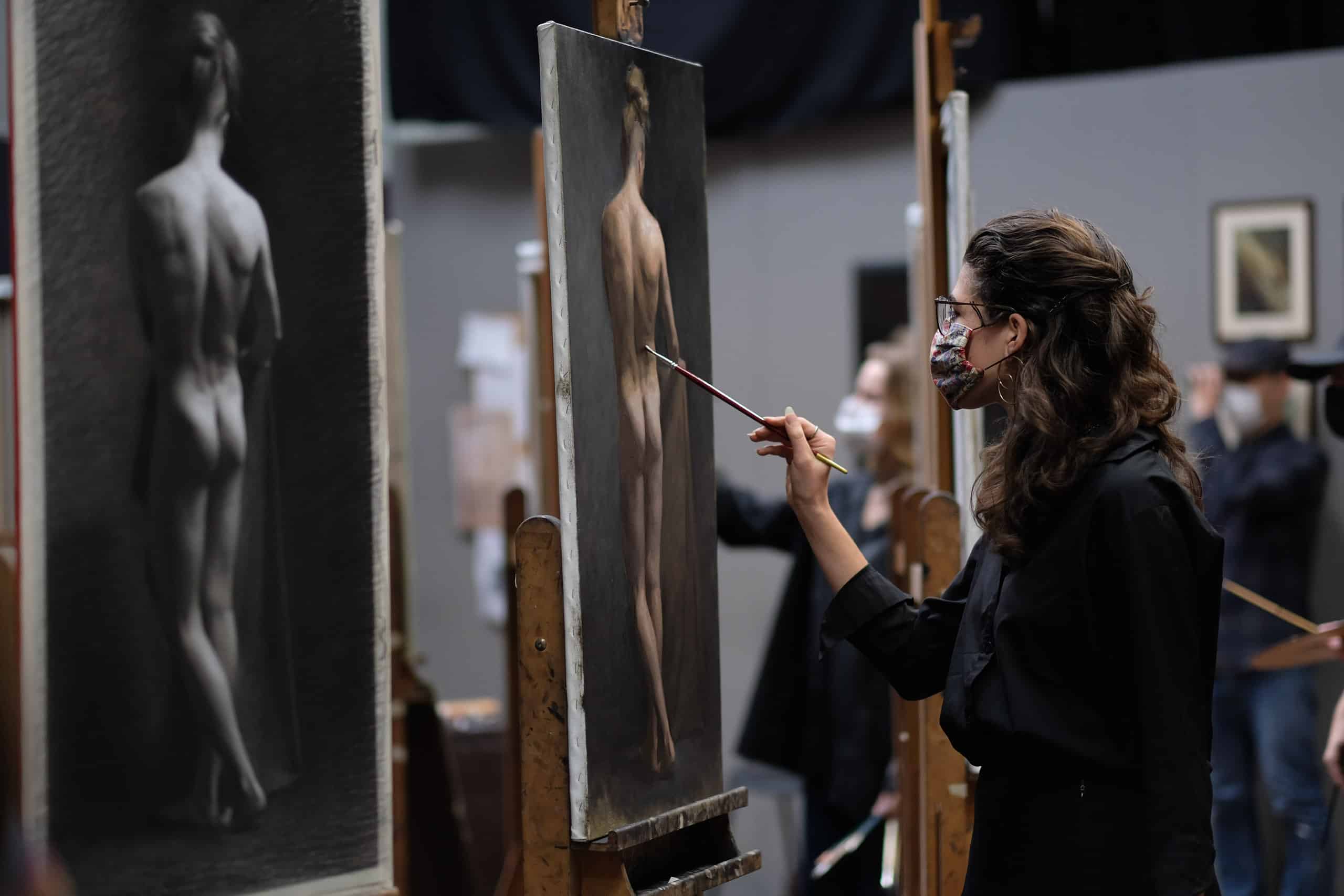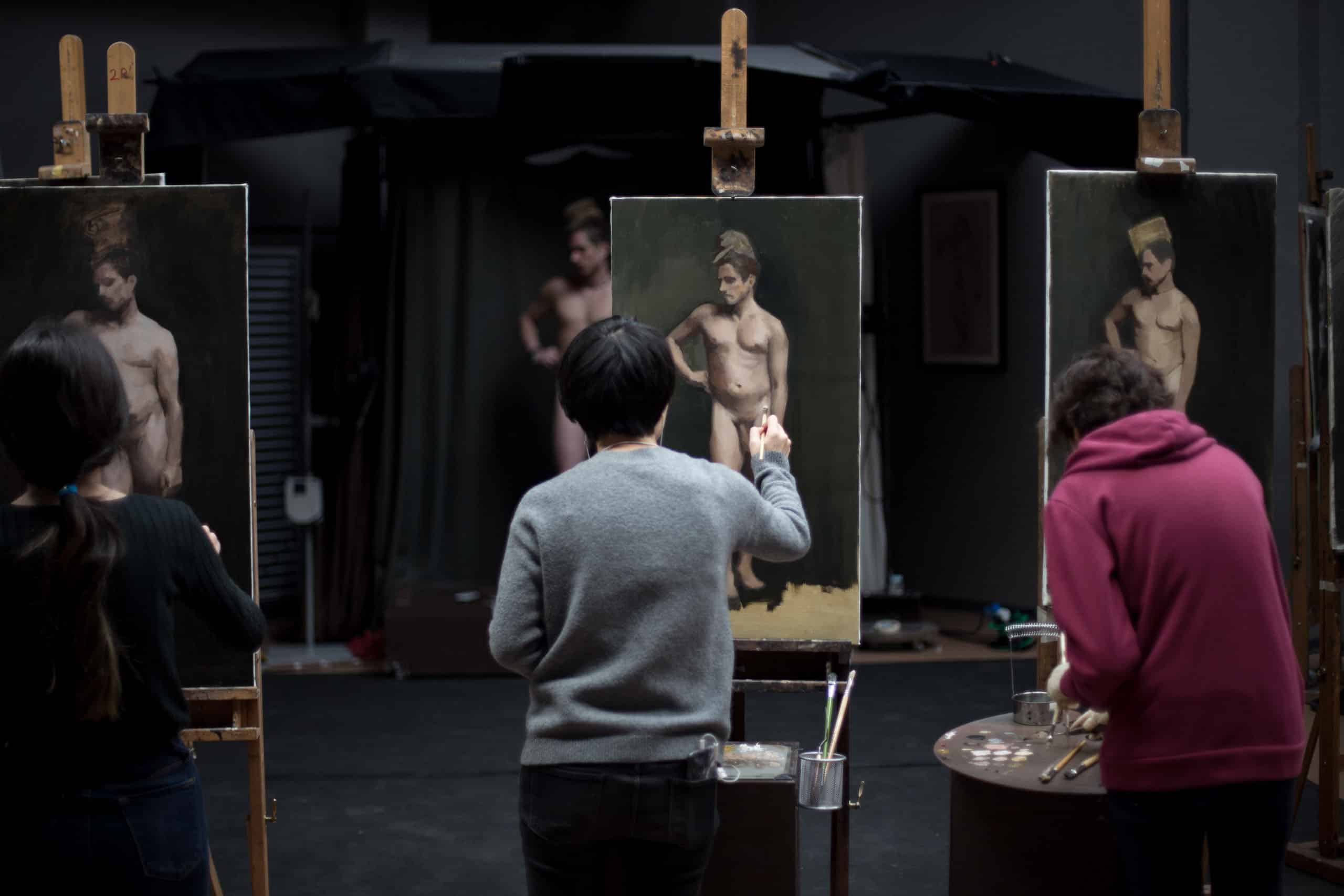Student and graduate work is directly affected by the philosophy, teaching methodology, and physical structure of the studio in which it is created. A distinguishing characteristic of The Florence Academy of Art is that we require all our students to work from life under natural north light, in the tradition of the masters of the past whom we admire: Titian, Rembrandt, Velázquez and Sargent, to name a few. Our students do not idly copy their subjects but instead learn to translate nature in a way that is both anatomically accurate and artistically beautiful. Long poses may last three hours a day, five days a week for four or five weeks. This gives students time to work out problems and produce a competent drawing or painting. Natural light allows students to select a specific area of the painting to keep in sharp focus while peripheral areas remain out of focus, just as the eye sees in nature: there are no edges in natural light, but soft gradations of light to dark.
The sight-size method is a helpful tool, and we apply it in the early stages of the curriculum when students are learning measurement, proportion, and shadow shape. Students at the advanced levels are taught to apply comparative measurements when necessary.
The rate at which students progress through the Drawing and Painting Program varies by individual, and normally requires a minimum of three years to complete. Classes meet Monday through Friday from 9:00 am to 4:00 pm. First year drawing and sculpture students are required to attend Anatomy Lectures which are held on Monday evenings from 5:00 – 7:00 pm. Students attend additional figure drawing class one evening a week. All students are encouraged to participate in the Friday evening Art History lectures and the technical demonstrations on materials & techniques held during the academic year.
1st year
Intensive Drawing
“What we do is a craft. You have to start with whatever you’re able to do, then add to it with discipline and exercises. This classical approach is built on practice and building skills. There’s no shortcut.” – Daniel Graves, Founder
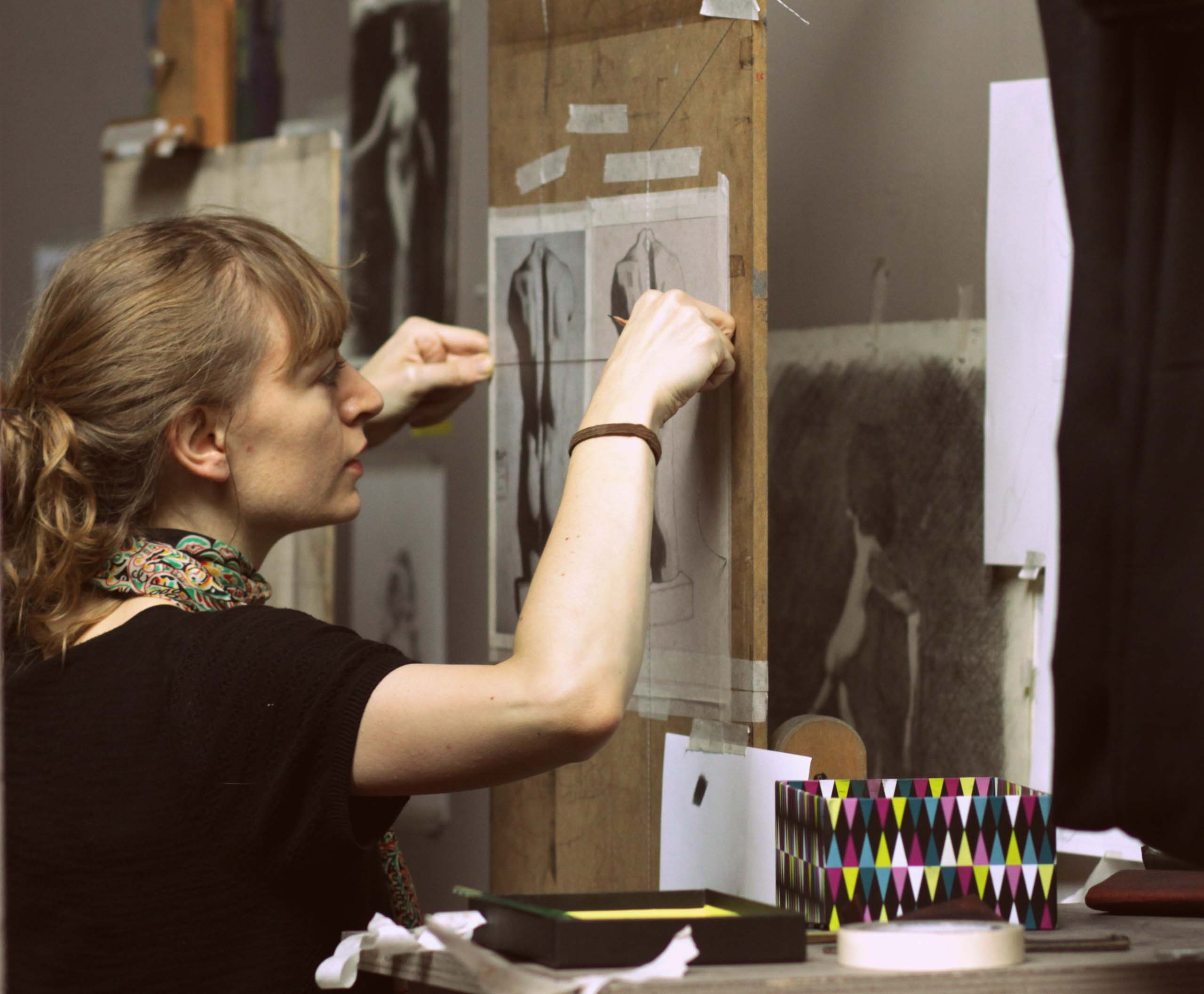
Beginning Drawing
1st year | 15 credits
An established set of exercises focuses on outline, proportion, and shadow shape, on a step by step progression through the program’s curriculum.
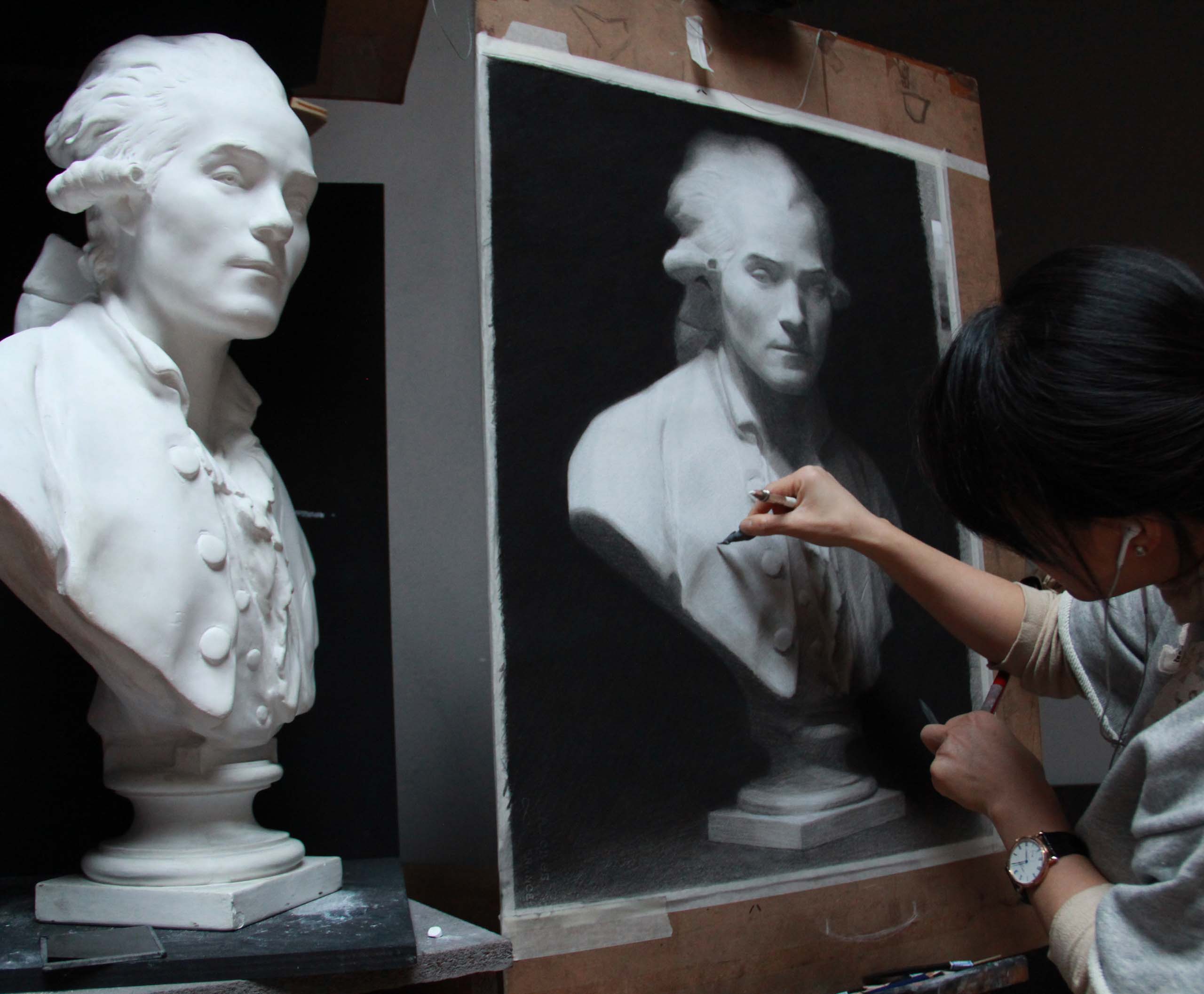
Beginning Cast Drawing
1st year | 7.5 credits
Cast drawing combines the skills acquired from the preceding exercises, and sensitizes the student’s eye to the light and values found in nature.
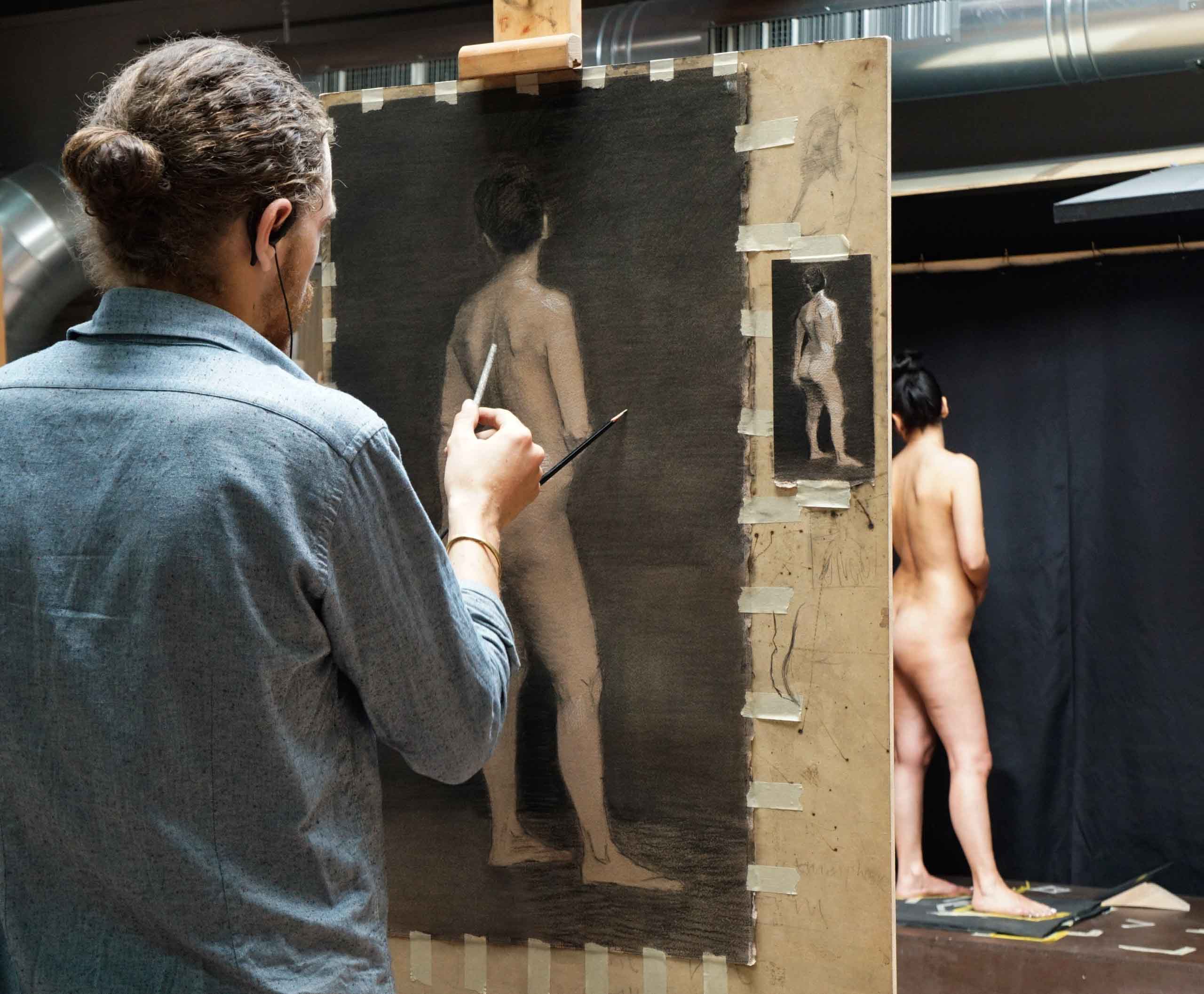
Beginning Figure Drawing
1st year | 25.5 credits
The figure is the center of the Academy’s curriculum. Beginning figure drawing applies the accuracy gained from the cast to representing a living model.
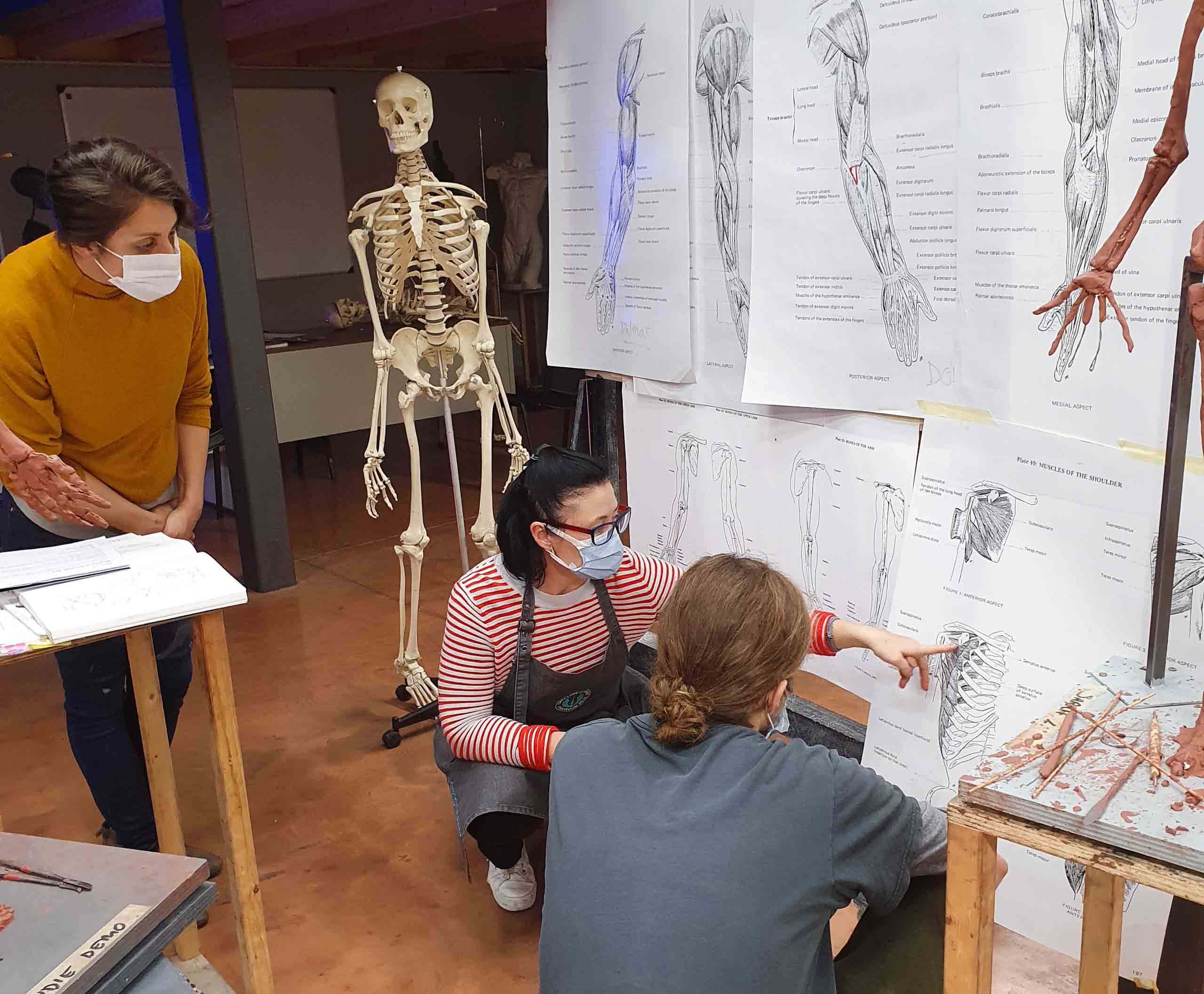
Anatomy
1st year | 3 credits
Weekly lectures begin with a discussion of the skeleton and myology, the study of the muscles, then move to drawing exercises with the model.
2nd year
Intermediate Painting
“The instruction is not only technical. Instructors also talk about choices that must be made when working from life. Why one might leave information in or leave it out. It is a thoughtful process. It teaches students to constantly ask questions about why they are making certain choices, what affect that will have on the final impression of the piece, and if that is how they want their work to be interpreted.” – Dana Levin, FAA Alumnus & former Principal Instructor
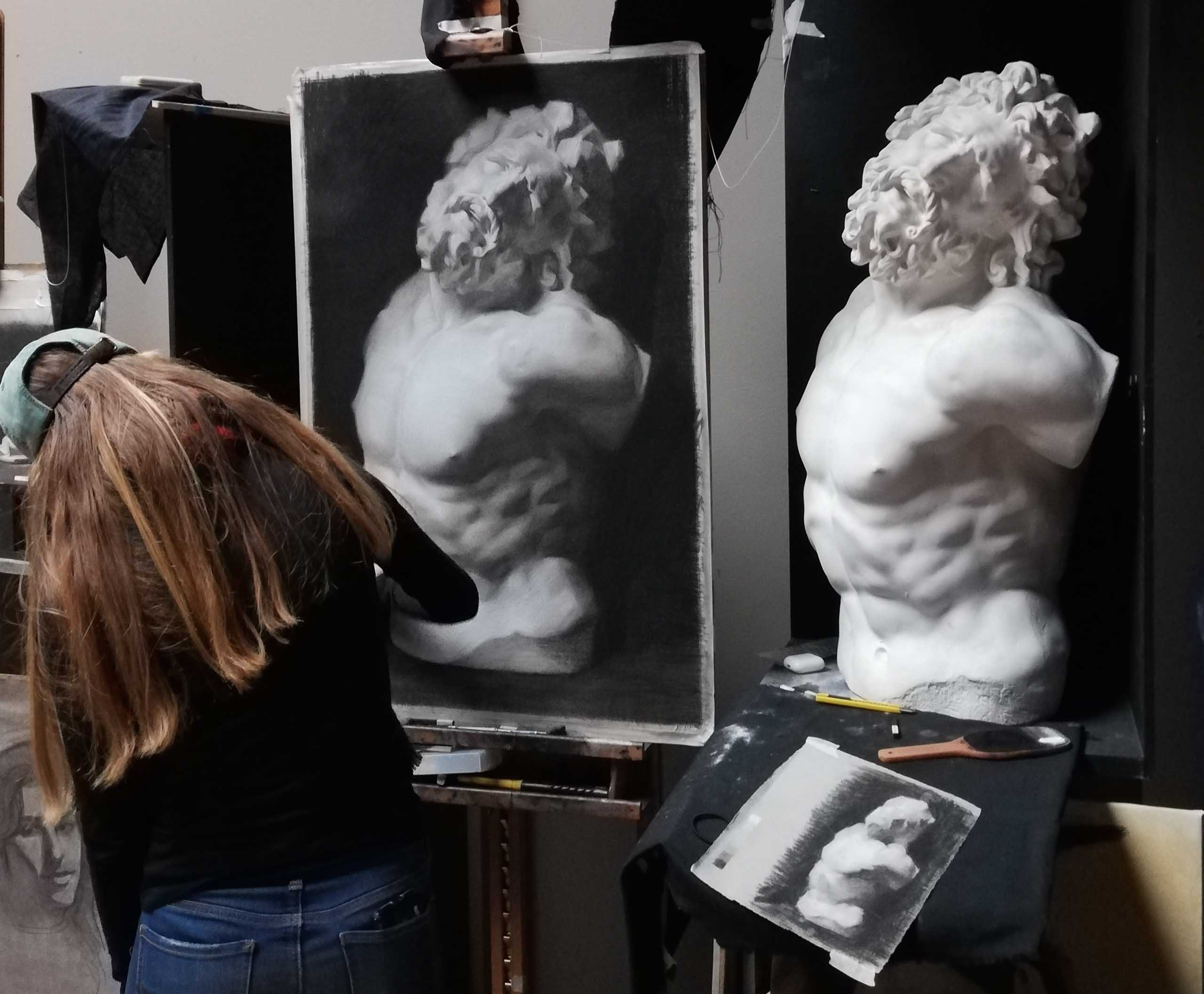
Advanced Cast Drawing
2nd year | 7.5 credits
The student is challenged to see and organize value relationships with more sophistication and strategy.
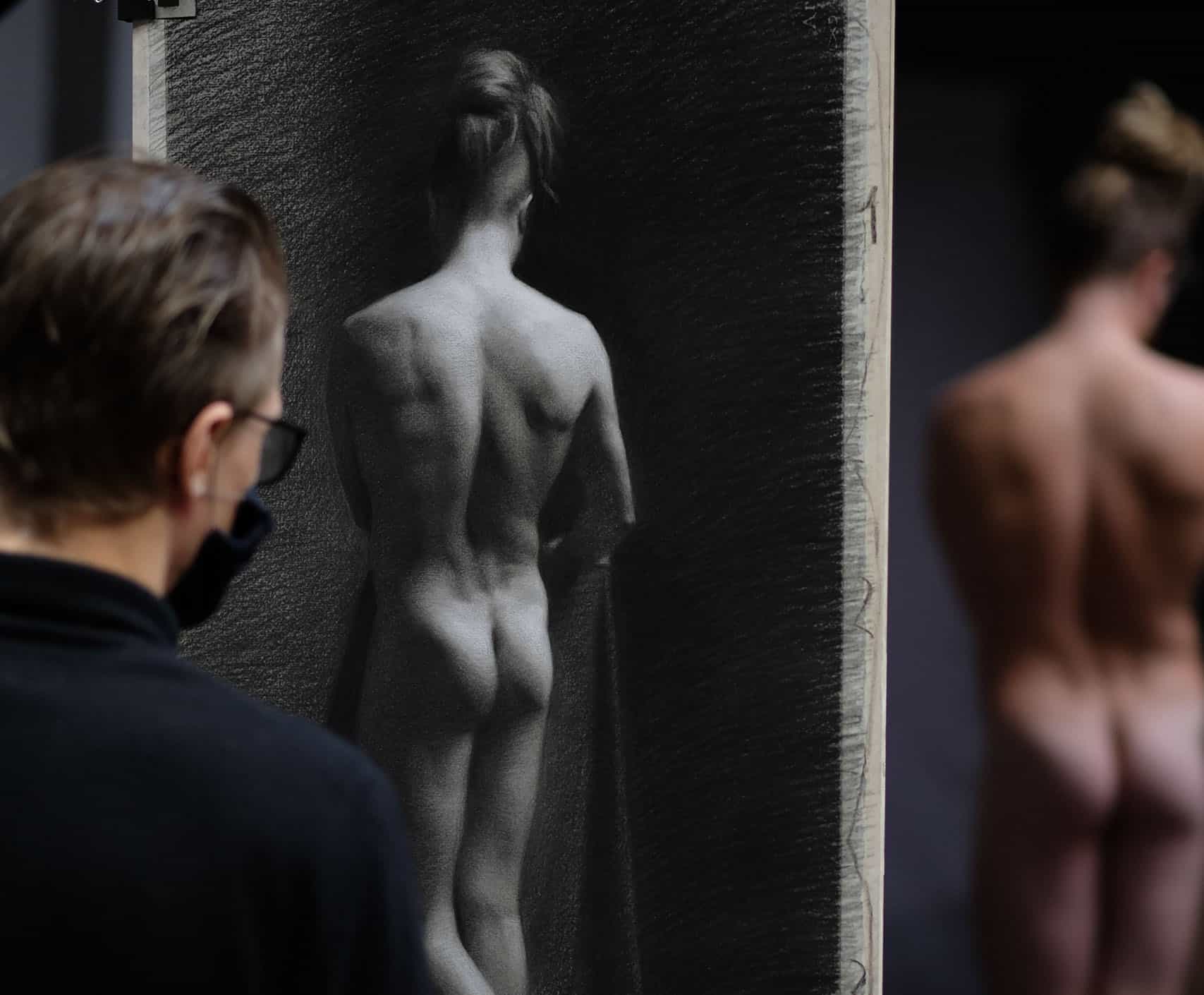
Advanced Figure Drawing
2nd year | 8.5 credits
By decisively organizing and observing value shapes in relationship with anatomical elements, students develop their ability to think as painters.
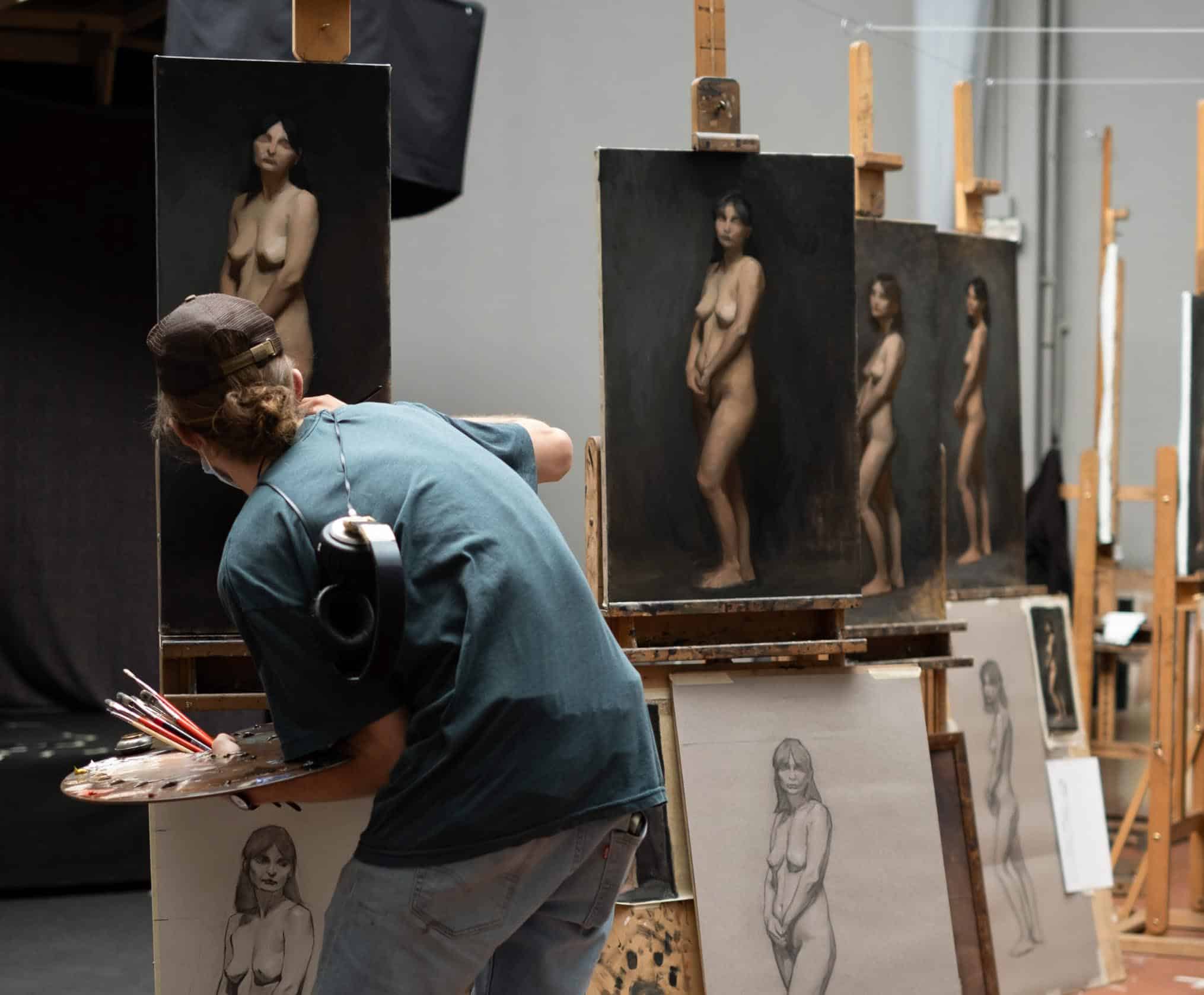
Beginning Figure Painting
2nd year | 17 credits
A limited palette serves as a manageable base from which to explore expanding degrees of chromatic complexity.
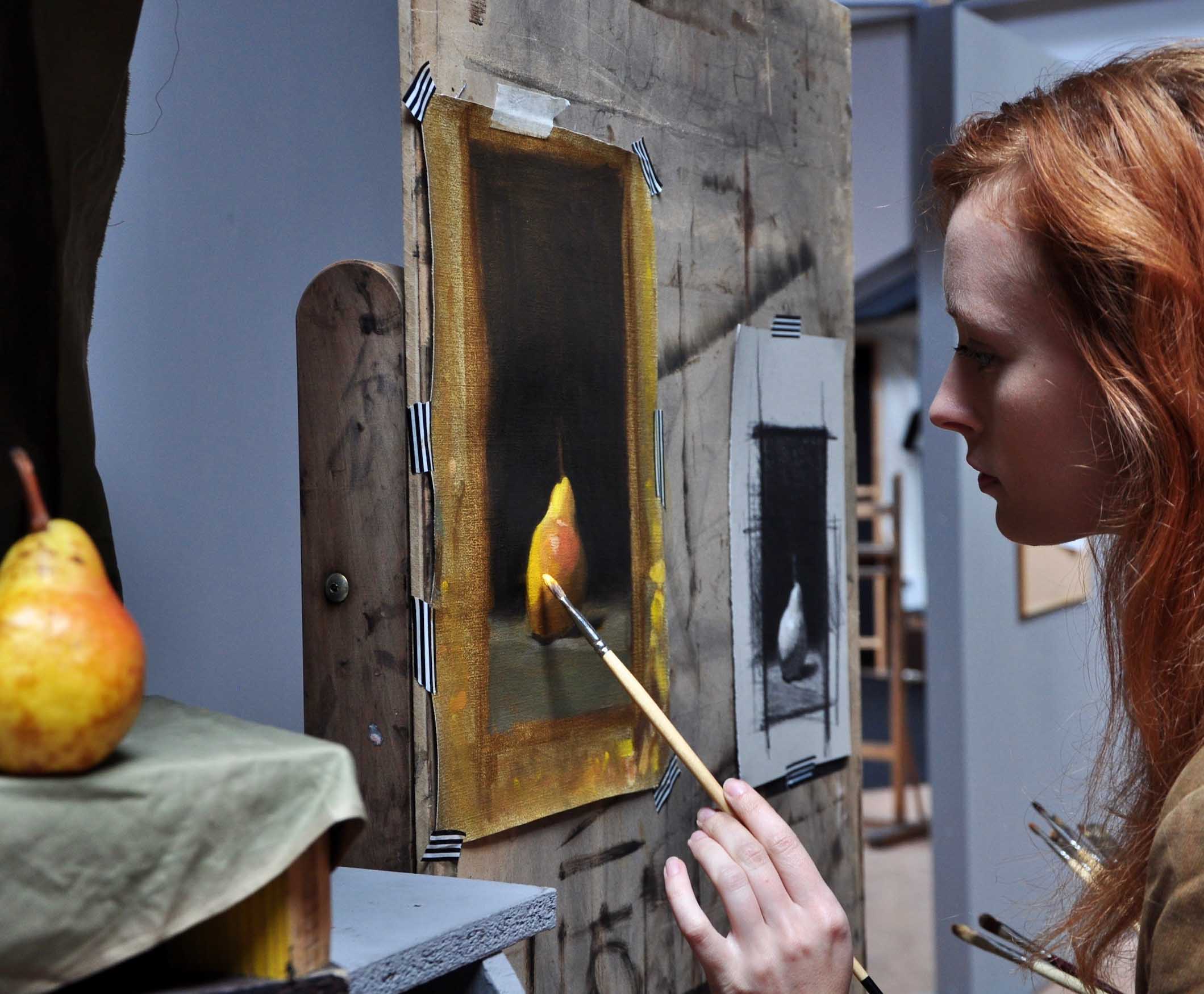
Beginning Painting
2nd year | 15 credits
Students attend technical demonstrations and learn to grind their own paint, beginning without the aid of mediums, concentrating on exact mixtures and values.
3nd year
Advanced Painting
“As the program challenges individuals to push their technical ability beyond their perceived capacity, they develop strength of character and the confidence necessary to be a professional painter. This helps to create a state of mind in which they are certain of their choices. Our graduates will never stand in front of a blank canvas and feel lost. They will always be able to return to the method. They will never say how am I going to do this, but rather concentrate on what they want to say, and follow their inspiration.” – Ramiro Sanchez, Director Advanced Painting
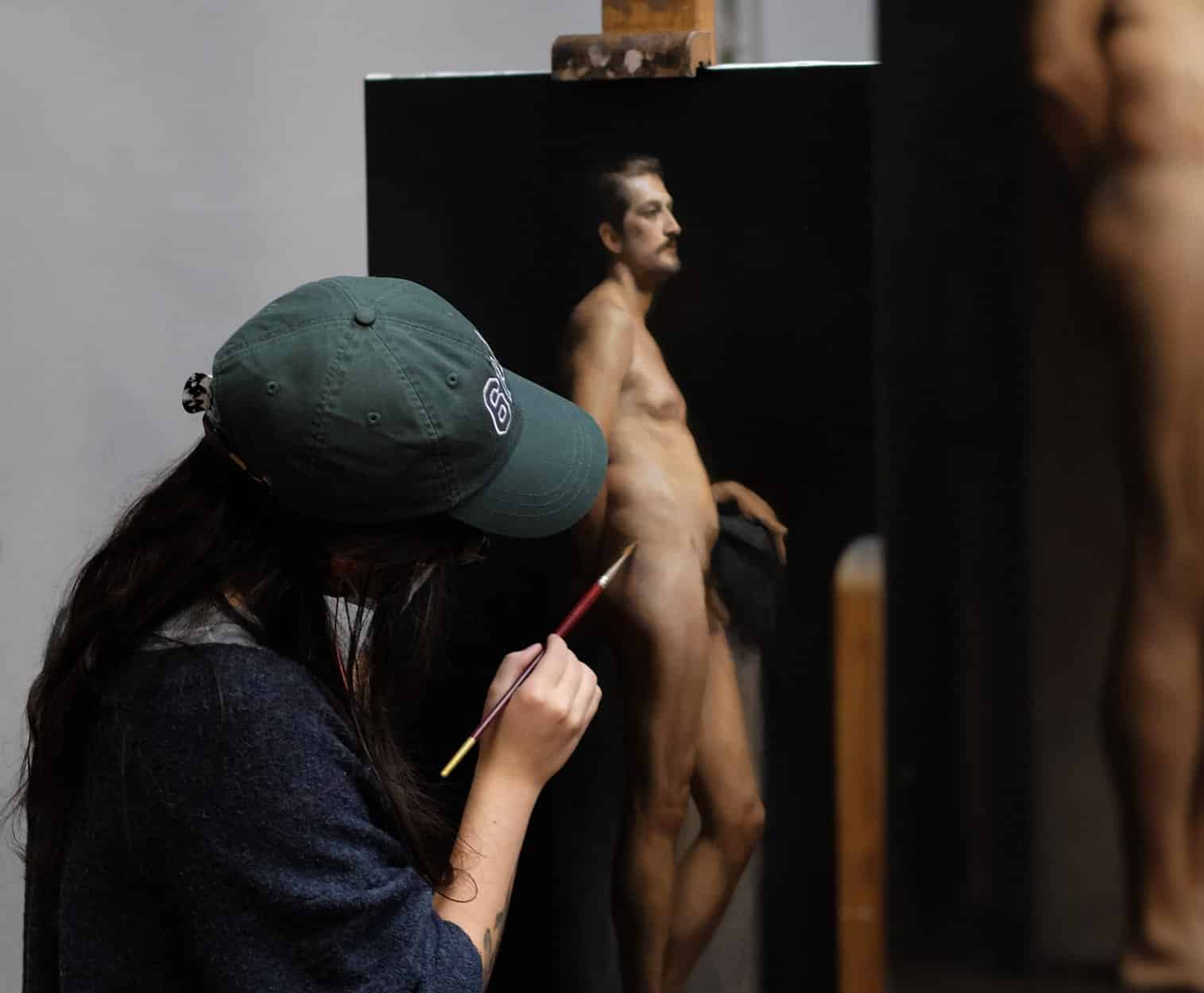
Advanced Figure Painting
3rd year | 25.5 credits
Advanced Figure Painting incorporates line, values, gesture, body type and proportion, and also a convincing sense of reality – anatomy, weight, and flesh.
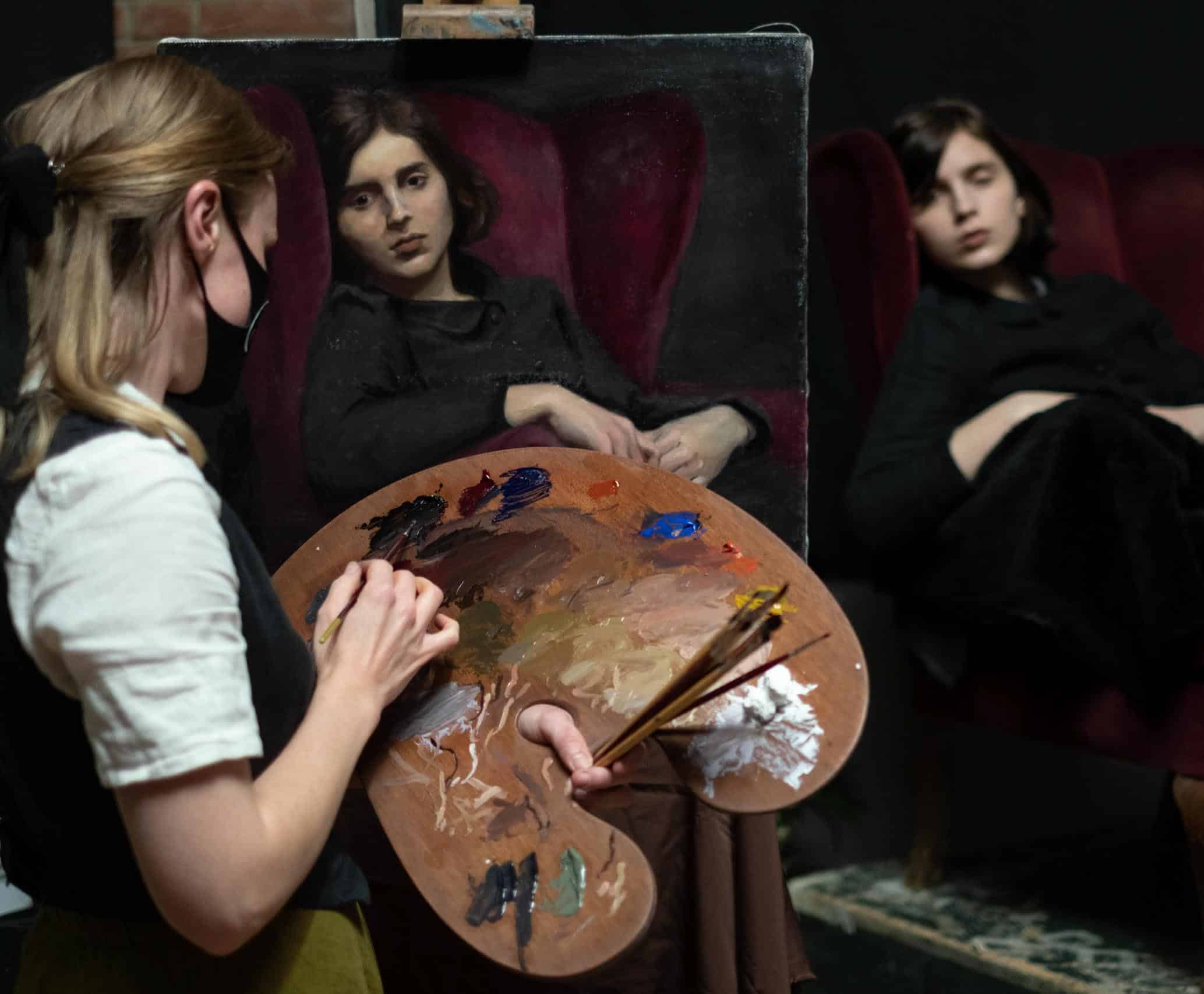
Still Life and Portraiture
3rd year | 25.5 credits
Simple still lifes represent the student’s first opportunity to confront composition, to control the light source, and to create a meaningful expression.



